
Epicure & Culture
Food, wine & culture for the ethical traveler

5 Best Places For Eco-Tourism In Mexico (Itineraries Included!)
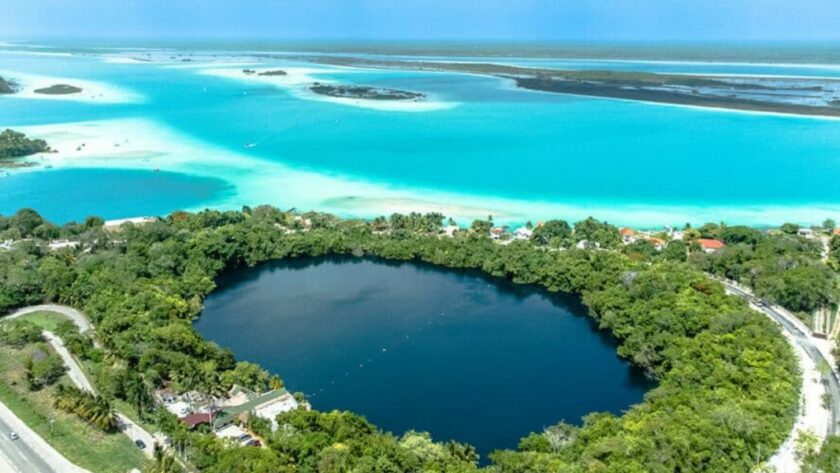
By Isabella Biava. This article on sustainable tourism in Mexico contains affiliate links to trusted partners.
Looking for the best places for eco-tourism in Mexico ?
Then you’re in the right place!
When planning a trip to Mexico, you have limitless booking options for tours, hotels, and other experiences. And while having choices can be a good thing, it’s important to realize that not all of these options are ethical.
That being said, there are tour operators and accommodations that go above and beyond to help preserve the country’s natural wonders and promote responsible tourism in Mexico.
To help you have a positive impact through your trip, we’re sharing five eco-friendly itineraries in Mexico.
Additionally, you’ll snag important tips for how you can travel sustainably in Mexico and help to protect the environment.
Table of Contents
Defining Eco-Tourism In Mexico
But, first, what does “eco-friendly” actually mean?
While the definition varies slightly depending on who you ask, the Global Sustainable Tourism Council explains it as a niche segment of tourism in natural areas that particularly focuses on ethical, low-impact, locally-oriented trips.
It’s easy to confuse eco-friendly tourism with sustainable travel, as they’re similar; however, sustainability refers to “sustainable practices in and by the tourism industry, it is an aspiration for the impacts of all forms of tourism – all forms of tourism should be sustainable.”
So with that in mind, while we’re discussing how to plan an eco-friendly Mexico trip, the goal is really to be an all-around sustainable traveler — whether you’re visiting Mexico or somewhere else.
Remember, too, that small actions can have a huge impact, negative or positive. As travelers, let’s try to make our impact positive in the places we are so fortunate to get to visit.
On that note, let’s dive into our guide to green and responsible tourism in Mexico.
5 Best Places For Eco-Tourism In Mexico
Mexico currently has 40 UNESCO-designated biosphere reserves, which are defined as “learning places for sustainable development.”
This international label comes with a number of benefits, like access to funding resources for local conservation programs as well as education on the best eco-friendly practices for local authorities and the local population.
However, even with this label, there are still biosphere reserves where eco-friendly practices have sadly not been institutionalized by authorities, and so it is up to locals to step up and preserve the natural environment without the help of the law.
And while this guide to eco-tourism in Mexico focuses on some of the places where ecological practices are in place, we also aim to bring attention to areas that need help from locals and visitors to conserve the fragile environment.
On that note, let’s dive into our eco-friendly Mexico itineraries and tips.
1. Baja California Sur

In Baja California, there are four areas that are labeled as biosphere reserves, and two of them particularly stand out as tourist destinations:
- The Sierra de la Laguna , located in the south of the peninsula, which has a spectacular contrasting ecosystem made of woodlands and scrub, including a lot of endemic vegetation. There are great hikes that you can do in the Sierra de la Laguna that are organized with full respect for the environment.
- The Gulf of California , with its hundreds of islands, islets, and coastal areas — not to mention a wealth of underwater creatures for which the Sea of Cortez earned the nickname of the “Aquarium of the World.”
Not only can enjoy unforgettable hiking in Baja California , but amazing tours organized by eco-friendly companies (mentioned below) are available all around Baja in places like Loreto, La Paz, Todos Santos, and Cabo on the Pacific Coast.
The local tour agencies that operate in these reserves must follow certain ecological practices in order to preserve the environment, including:
✓ When visiting Espiritu Santo Island you are not allowed to swim with the sea lions from July through September in order to leave the creatures alone during their breeding season. You can only watch them from a 50-meter distance from the boat and go swimming in other nearby areas.
✓ Swimmers are encouraged not to use sunscreen before jumping in the water. Instead, you can use practical rash guards for sun protection.
✓ Whale shark swimming tours are limited to a certain number of visitors, and swimmers must jump in the water in turns to avoid disturbing the whales’ routine.
✓ The blue whale watching tours in Loreto keep a safe distance from the whales to avoid disturbing them in their natural environment. Local tour guides also take part in educational programs to learn best practices for protecting these graceful giants.
Eco-Friendly Baja California Sur Activities
► Hike in the Sierra de la Laguna with Baja Sierra Adventures , a company offering low-impact experiences to small groups of visitors while providing locals with a source of income.
► See humpback whales in Cabo Pulmo Marine Park with El Cardumen , a plastic-free tour company committed to conserving natural resources while providing a unique, fun, and safe experience for visitors.
► Swim with whale sharks in La Paz with La Paz Divers , a company founded by two biologists who are passionate about marine life and its preservation.
► Swim with the gray whales in San Carlos with Todos Santos Eco Adventures , whose entire adventure team is Leave No Trace certified.
► Take a blue whale watching tour in Loreto with Loreto Sea & Land Tours , a small family-owned operator dedicated to offering conscious, quality experiences.
► Dive in the marine life-rich Sea of Cortez with La Paz Divers (mentioned above).
Getting Around Baja California Sur
To get around Baja California Sur, having a car is recommended as public transportation is not reliable and doesn’t reach many of the most interesting spots. You can use a platform like Discover Cars to quickly and easily price compare your options.
The other possibility is joining local tours organized by eco-conscious travel companies, a few of which are mentioned above.
Best Eco-Friendly Hotels In Baja California Sur
White Lodge Baja (Los Cabos). This eco-luxury wellness retreat features an onsite spa as well as 10 private cottages built in total harmony with nature. It’s located 45 minutes from the Historic Center of San Jose del Cabo.
Hotel Baja Club (La Paz). This historic mansion turned hotel is now one of the most luxurious properties in La Paz. Its architect, Max von Werz, is a fervent advocate of sustainable architecture. In fact, his team rescued original timber beams and recovered as much of the original materials as possible to create this beautiful hotel. The property’s onsite Greek restaurant also serves sustainable seafood.
Camp Cecil de la Sierra (Todos Santos). This luxury tent camp offers glamping on a local ranch in the Sierra Laguna Mountains. Along with gorgeous views, guests can enjoy homemade food, opportunities for cultural immersion, and organized tours around the local reserve. Check out a 2-night itinerary they offer here .
Baja California Sur is also home to some of Mexico’s best vegan hotels , like Marquis Los Cabos and Esperanza, Auberge Resorts Collection .
2. Campeche
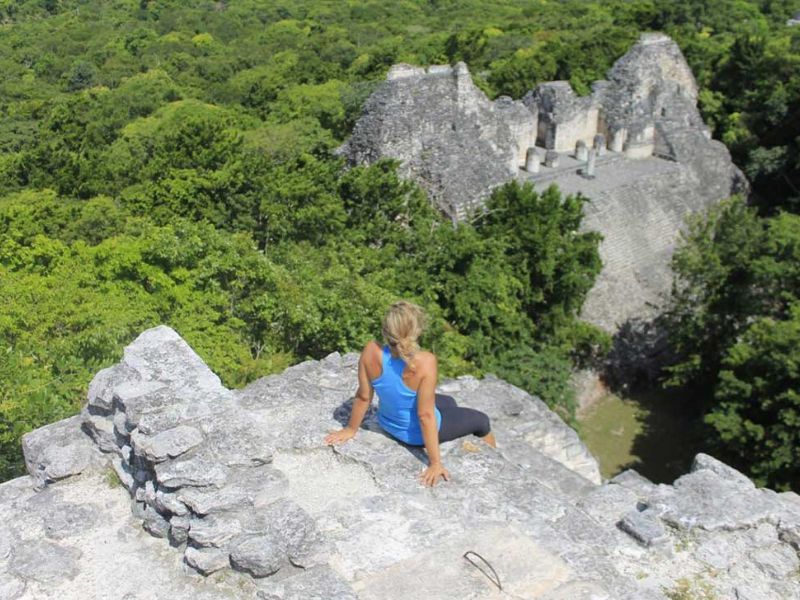
In the often underrated Mexican state of Campeche, you’ll find many incredible natural wonders, among which the spectacular Calakmul Biosphere Reserve particularly stands out. Visiting is one of the best things to do in Campeche .
Calakmul is the largest forest reserve in Mexico and, if you include the bordering countries of Guatemala and Belize, it becomes the second biggest forest in Latin America, after the Amazon.
Calakmul is also home to one of the most important and largest Maya ruins whose majestic temples peek out of the thick tropical jungle.
A visit to Calakmul requires some time and a car, which you can rent through Discover Cars , as there is much to explore inside the biosphere and in the surrounding areas.
The closest airports are in Chetumal as well as in Campeche, but you can also fly into Cancun or Merida and rent a car from there .
Honestly, Calakmul is a great addition to a Cancun itinerary , and if you have time you can plan a fantastic road trip on your way to the biosphere reserve and enjoy numerous cultural activities in the Yucatan Peninsula .
To explore Calakmul and its Maya ruins, you will need a full day — though if you also want to view wildlife, you’ll need to hire a local guide to take you inside the biosphere early at 6am. This is the best time to see the many bird species and other animals living there.
Note that only certified guides working for the Calakmul visitor center are authorized to enter this early with guests.
The visitor center is located in the small town of Xpujil and is a 45-minute drive from the Calakmul Biosphere Reserve. You should arrive a day early and book your guided tour for the following day.
That being said, if you have time, stay a couple of extra days in Xpujil to explore the local communities and their incredible artisan wares, from textiles to jewelry and home decor.
If you’re looking for authentic souvenirs from your eco-friendly trip to Mexico, consider purchasing these quality artisan goods, which also allows you to put money directly into the local economy.
The area is also full of fascinating archaeological sites hidden in the thick jungle as well as caves, pepper fields, and a lagoon.
Best Eco-Friendly Hotels In Calakmul
Chicanna Ecovillage Resort . Located on the road between Xpujil and Calakmul, this is a great option thanks to its convenient location and great value for money.
Hotel Puerta Calakmul . Located at the entrance of Calakmul, this resort is basic but very eco-friendly, and you will wake up surrounded by colorful birds — including toucans!
Rio Bec Dreams Hotel . This hotel has comfortable cabañas immersed in the tropical jungle at only a few minutes drive from Calakmul. The owners are also committed to eco-friendly practices, like collecting and using rainwater for the property as well as using greywater from the washing machine to flush the toilet.
3. Quintana Roo
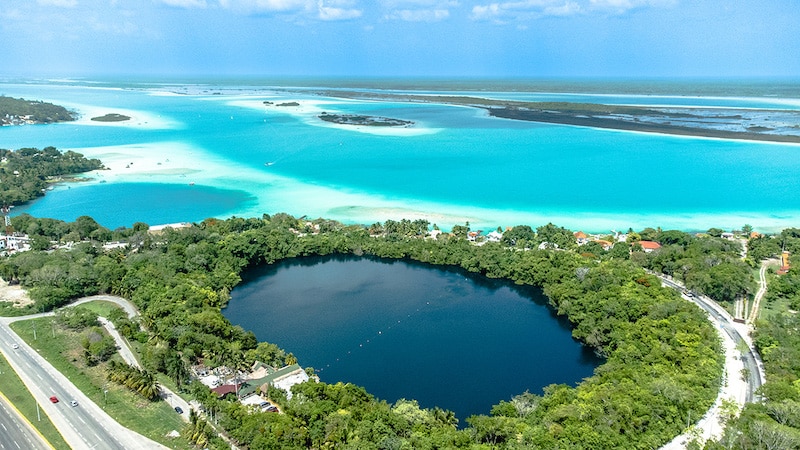
Quintana Roo is probably the most visited state in Mexico. Because of this, it’s more likely to see a significant impact on its fragile environments.
There are many interesting natural wonders in Quintana Roo, including the Sian Ka’an Reserve and the spectacular cenotes .
That being said, in this eco-tourism in Mexico guide, we’re focusing on the beautiful Bacalar Lagoon — often called the “Maldives of Mexico.”
Bacalar Lagoon is a clear example of how conscious practices by local people can make an enormous positive impact on the environment where government institutions haven’t yet done the work.
UNESCO has not denoted Bacalar as a reserve; however, it very much needs to be protected as one if we want to keep enjoying its pristine blue waters.
In fact, it’s called the “Lagoon of Seven Colors” for its spectacular seven shades of blue, which is what makes it so special. Here, you can swim, kayak, paddleboard, and bird-watch. Additionally, nearby you can visit a cenote, Maya ruins, and more.
The local operators that handle the sailing boat tours and non-motorized water activities have created an association called Agua Clara to promote the preservation of the lagoon and its fragile ecosystem, including the delicate stromatolites — layered sedimentary formations known as the Earth’s oldest living lifeforms .
Agua Clara members are trying to capture the attention of the public to ultimately get the support of local authorities, but with little success, unfortunately.
If you ask them, there are political reasons and economic interests that keep Bacalar Lagoon from becoming a natural reserve.
And while it’s understandable that finding a balance between preserving the environment and making a living can be challenging, one can’t ignore that the increasing number of motorboats is a threat to the lagoon’s ecosystem.
On top of that, local authorities have recently given authorization for jet skis, which were prohibited before, to operate. And because it’s lucrative for business, jet ski operators have quickly multiplied, which is another obstacle in keeping the lagoon clean and healthy.
Since the government is not helping, it is up to locals and visitors to step up and do the right thing.
Here are a few ways you can help preserve Bacalar Lagoon:
- Do not book tours on motor boats or jet skis
- Join sailing, kayaking, and paddleboarding tours instead
- Do not walk on the stromatolites or touch them in any way
- Do not use sunscreen, even if it’s reef-safe, before getting in the water
- Do not take anything from the lake, like sand
- If visiting Isla de los Pajaros (Bird Island) to see birdlife like parrots, parakeets, and green jays, it’s recommended to kayak there and not get too close to the shoreline to avoid disturbing the birds
Best Eco-Friendly Hotels In Bacalar
Casa Lamat . This is a stylish eco-friendly hotel on the lagoon that has developed its own system for the correct use of water, trash, and electricity. They also promote non-motorized activities and use low-flow showerheads, low-flush toilets, and biodegradable soap, among other things.
MIA Bacalar . This high-end eco-friendly hotel in Bacalar keeps their energy to a minimum by using an intelligent system while their water is recycled and treated to irrigate the gardens. These are just a few of the many steps this property takes to operate sustainably.
4. Queretaro
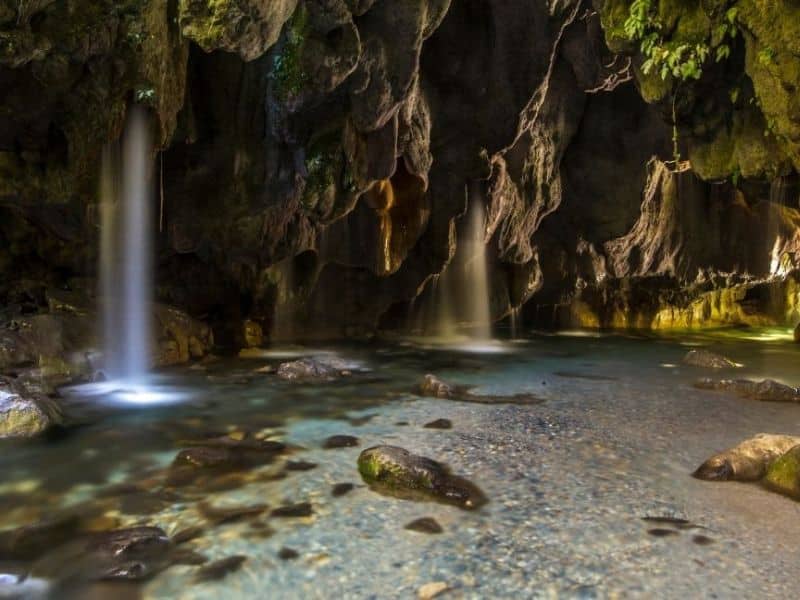
Queretaro is one of the smallest states in Mexico and yet has some of the country’s most diverse ecosystems — such as the Sierra Gorda , a UNESCO Biosphere Reserve.
Much of the credit for this goes to a woman named Martha Isabel “Pati” Ruiz Corzo who, in 1987, co-founded GrupoEcologico Sierra Goxrda (GESG) with Roberto Pedraza Muñoz and local residents. Their goal: to get people caring about the biodiversity of the region.
To do this, she built alliances with other local organizations committed to the preservation of the reserve.
There are actually 10 reserves within the Sierra Gorda Biosphere dedicated to the preservation of local wildlife and forestation, as well as to fighting poverty and climate change, supporting biodiversity, and aiding the regeneration of natural infrastructure.
The best way to enjoy the Sierra Gorda is by spending a few days in Pinal de Amoles or Jalpan de Sierra and taking tours with local guides.
One recommended local guide is Bernardo Resendiz. He’s a certified bilingual guide based in Pinal De Amoles and organizes tours in Spanish and English in the Sierra Gorda. You can view his Facebook page and YouTube channel , or email him at [email protected] .
Alternatively, you can stay in one of the local Sierra Gorda ecolodges and book your tours directly with them.
Eco-Friendly Sierra Gorda Activities
► Hike to El Chuveje Waterfall , which offers a spectacular trek along a river until you get to the beautiful waterfall surrounded by lush vegetation.
► Hike along the Cañón de la Angostura in Pinal de Amoles, a spectacular trail in a canyon that leads you to a natural pool with small waterfalls.
► Head to the Cuatro Palos lookout to admire spectacular views of the mountainous landscape from above the clouds.
► Check out some of the old missions (churches) — especially Bucareli , which is located in the middle of a deserted area surrounded by hills and canyons.
Eco-Friendly Hotels In The Sierra Gorda
Sierra Gorda Ecotours offers sustainable lodging around Jalpan de La Sierra, a Mexican Pueblo Magico , and you can also book eco-friendly tours with them to explore the amazing biodiversity of the Sierra Gorda.
5. The State of Mexico

In the State of Mexico, you can enjoy many unique experiences in nature — like witnessing up to 1 billion monarch butterflies do their annual migration from Canada and the USA to this area of Mexico.
The Monarch Butterfly Biosphere Reserve , a UNESCO World Heritage site that borders the State of Mexico and Michoacán, is one place to witness this natural phenomenon. This reserve aims to protect the butterfly species and its habitat, as it’s home to many important overwintering sites for the monarch.
From the lovely colonial town of Valle de Bravo , you can visit the reserve by car or taxi (which should cost around 200 MXN each way). You’ll need to get to Piedra Herrada , which is about a 40-minute drive.
Once you arrive, you can spend an entire day hiking the onsite trails and watching thousands of these beautiful butterflies flying around you. While there, it’s vital that you watch your step to avoid stepping on any.
Actually, it is required to have a local guide with you while visiting. Guides not only share important information about the local flora and fauna, but also help to ensure visitors follow best practices and avoid harming the butterflies.
Guides can be booked right at the entrance of the reserve, and will take you either on a short hike or on a horseback ride, depending on the kind of tour you want to take. The entrance fee is included in the tour.
Eco-Friendly Hotels In Valle de Bravo
Rancho El Reencuentro Eco-Hotel . This rustic chic hotel nestled in the countryside, just outside Valle de Bravo, offers stylish and spacious rooms as well as interesting activities like horseback riding, culinary workshops, and the opportunity to learn about their permaculture projects.
Hotel Rodavento . This luxury property in Valle de Bravo showcases 35 spectacular private suites scattered around the forest and overlooking a lake. Guests will enjoy relaxing by the pool, getting pampered with organic spa treatments, or doing onsite adventure activities like ziplining and climbing.
General Tips For Eco-Tourism In Mexico
Whether you’re aiming to plan an eco-friendly Mexico itinerary or a trip to another destination, here are a few best practices to keep in mind:
✓ Stay in a small locally-run hotel instead of an all-inclusive one.
✓ Use biodegradable mosquito sprays and sunscreens (when allowed).
✓ Do not use sunscreen or mosquito spray in Bacalar Lagoon, cenotes, and other places where it is not allowed (instead opt for rash guards ).
✓ Respect local eco-friendly guidelines that are shared with you.
✓ Do not touch or damage the local flora and fauna, including coral reefs and stalactites and stalagmites in caves and cenotes.
✓ Avoid motorized watersports when possible.
✓ Do not support animal-related attractions that keep animals in captivity. A great example is swimming with the dolphins, which is an irresponsible wildlife tourism option that promotes animal cruelty . Instead, follow ethical wildlife tourism guidelines .
✓ Don’t buy souvenirs that include shells or parts of living organisms.
✓ If you find trash on the beach or in the water, take it with you. You can use this free trail cleanup game to gamify the cleanup, too.
✓ Follow Leave No Trace principles by respecting local wildlife, not taking any natural elements you find like shells or rocks, and taking your waste with you.
✓ Avoid bottled water as much as possible by using a reusable water bottle and asking for a refill where available.
✓ Eat in locally-run restaurants and shop local to put money directly back into the local economy.
✓ Choose tour operators with a clear commitment to the environment as well as local people and wildlife. Typically, conscious operators will have a page sharing how their experiences promote responsible tourism, though don’t be afraid to email or call them to ask your own questions, such as the ones listed in this guide to avoiding greenwashing .
Eco-Tourism In Mexico: Final Thoughts
Traveling responsibly in Mexico is possible not only in protected areas where eco-tourism is ingrained in local policy and culture, but everywhere we go.
As travelers, we have the opportunity — and obligation — to ensure our impact is positive in the destinations we visit.
This is especially important to keep in mind when visiting places that are not officially designated as protected, as eco-friendly guidelines aren’t as clearly spelled out. Instead, it is up to us to maintain awareness and help to create necessary change.
What would you add to this list of best places for ecotourism in Mexico?
Bonus mexico travel resources:.
Artisanal Tequila Distilleries In Mexico You Need To Visit
6 Authentic Cultural Activities In Mexico’s Yucatan Peninsula
Vegan & Vegetarian Food In Mexico: The Ultimate Guide
Exploring Mezcal & Mushrooms In The Land Of The Zapotec
About The Author
Isabella Biava is a relentless nomad who travels for the sake of traveling and photographing places. On her blog Boundlessroads.com she aims to inspire other women to travel solo, while on Letstraveltomexico.com she shares her knowledge of Mexico, where she has lived for the past 15 years.
- Latest Posts
Isabella Biava
Latest posts by isabella biava ( see all ).
- 5 Best Places For Eco-Tourism In Mexico (Itineraries Included!) - Sep 4, 2022
You may also like...
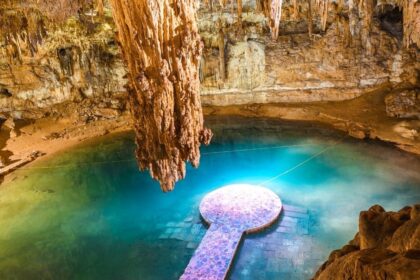
How to Make Your City Trip As Sustainable As An Ecolodge

12 Charitable Cocktails To Sip Right Now

Wellness Travel: Top 10 Yoga Fusion Retreats
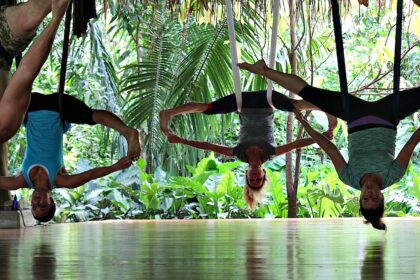
I just want to say that I love your blog since I found it by chance. I always find interesting content here where I learn something new and inspiring. Thank you very much for that! Greetings from Canada
Like to travel, if go to Mexico, this article is a very good strategy, thanks for sharing
What beautiful places, I hope to visit them someday!
Simply excellent! I congratulate you for this wonderful publication. Best regards
Wonderful article!
thanks for the article
forbiddendfile.blogspot.com
This is the place to come for all the best advice and information on living an awesome life
What wonderful information, thank you!
I love vacationing in Mexico. My favorite place is Monterrey, because the countryside and scenery are very beautiful and there are many things to do in the city. I have flown there with my friends several times already and we all like it very much. I advise you to rent a car on the rental24h.com website to make it easier to press, because the city itself is not small
Leave a Reply Cancel reply
Your email address will not be published. Required fields are marked *
This site uses Akismet to reduce spam. Learn how your comment data is processed .

Shrink That Footprint
Discover Ecotourism in Mexico: A Comprehensive Guide to Sustainable Travel
By: Staff Writer
Introduction – Ecotourism In Mexico
Ecotourism represents a mindful travel approach, considering both environmental impact and unique cultural experiences. This guide aims to introduce you to the ecotourism in Mexico, uncovering a path to sustainable travel.
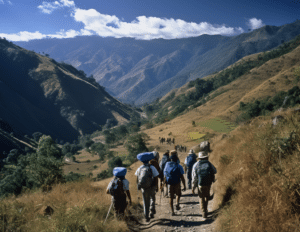
What is Ecotourism in Mexico?
Ecotourism in Mexico revolves around sustainable travel that considers the environment and benefits local communities. This concept germinated in the 1980s when Mexico started promoting sustainable tourism to conserve its diverse ecology and rich cultural heritage.
Top Ecotourism Destinations in Mexico
Mexico offers vast ecotourism destinations promising physical beauty and immersive experiences. Visit the whale nurseries in the Baja California Peninsula, the monarch butterfly reserves of Michoacán, or the pristine beaches of Tulum. Among its hidden gems is Xochimilco, a UNESCO World Heritage site, known for its extensive system of canals and floating gardens.
Eco-Friendly Resorts in Mexico
Playa Viva is an eco-lodge made entirely from natural materials. Located in Juluchuca, the resort offers yoga sessions, locally-sourced meals, and unspoiled beachfront views. It truly epitomizes the spirit of sustainable living while offering pure relaxation and peace.
Situated within a massive nature reserve, Cuixmala presents a luxurious take on eco-tourism. The resort, inspired by Moorish architecture, offers organic farms, turtle conservation projects, and a variety of outdoor activities with minimum environmental impact.
Ecotourism Activities in Mexico
Ecotourism in Mexico extends beyond sightseeing – it’s about engaging with nature and culture. Try bird-watching in Sierra Gorda, jungle trekking in Lacandon, or assist a turtle conservation project in Puerto Vallarta. We tell you a bit about each activity here.
Bird-watching in Sierra Gorda
Sierra Gorda , located in the heart of Mexico, is one of the most ecologically rich and diverse places in the country.
It is home to hundreds of bird species, some of which are endemic and can’t be found anywhere else in the world, making it a paradise for bird watchers.
Guided tours led by knowledgeable locals or professional ornithologists provide an excellent way to learn about these birds and their habitats.
Observing these birds in their natural environment is a deeply enriching experience, and it also contributes to the local economy, helping fund conservation efforts in the region.
Jungle Trekking in Lacandon
The Lacandon Jungle , located in the state of Chiapas in Southern Mexico, is one of the last remaining rainforests in North America.
It’s home to a rich diversity of plant and animal species, some of which are endangered.
Jungle trekking in Lacandon offers a unique opportunity to explore this dense and beautiful rainforest, providing a firsthand encounter with nature’s magnificence.
Tourists can hike through lush vegetation, see breathtaking waterfalls, visit ancient Mayan ruins, and learn about the traditional lifestyle of the indigenous Lacandon people, who have lived in harmony with the jungle for centuries.
Turtle Conservation Project in Puerto Vallarta
Puerto Vallarta , situated on the Pacific coast of Mexico, is known for its beautiful beaches, and is also an important nesting site for several species of sea turtles.
Each year, between June and December, turtles come ashore to lay their eggs.
The turtle conservation projects in Puerto Vallarta invite tourists to participate in a variety of conservation activities, such as night patrols to protect the turtles, collecting and relocating eggs to safe hatcheries, and releasing baby turtles back into the sea.
This hands-on involvement not only provides a unique and memorable experience, but also raises awareness about the importance of marine conservation.
Why Ecotourism in Mexico Makes Sense
You might be wondering whether you’re really supporting something meaningful for preserving natural ecosystems or is this a tourism gimmick.
Actually, ecotourism in Mexico makes sense for several reasons, especially considering the country’s unique geographical features, rich biodiversity, cultural diversity, and the current global trend towards sustainable travel.
- Rich biodiversity and unique geography : Mexico is one of the 17 megadiverse countries in the world, recognized by the United Nations for their exceptionally rich biodiversity. It is home to a variety of ecosystems, ranging from deserts and mountains to tropical rainforests and coral reefs, providing a plethora of opportunities for nature-based tourism.
- Cultural heritage : In addition to its natural attractions, Mexico is rich in cultural heritage, with numerous indigenous communities and historical sites. Ecotourism can provide a platform for these communities to preserve and share their culture, and create economic opportunities.
- Sustainable Development : As a part of its commitment to sustainable development, Mexico has an interest in promoting practices that balance economic growth with environmental protection. Ecotourism, by definition, involves low-impact, responsible travel that conserves the environment and improves the well-being of local people. It can serve as a tool for both conservation and sustainable development.
- Existing Protected Areas : Mexico has numerous protected areas and biosphere reserves, which are ideal settings for ecotourism. These protected areas are designed to conserve the country’s unique biodiversity, and ecotourism can provide the financial support needed for their maintenance and management.
- Global Trends : There is a growing global trend towards more sustainable and responsible travel. More and more travelers are seeking experiences that are environmentally friendly and that benefit local communities. Mexico’s commitment to ecotourism puts it in a good position to tap into this market.
- Economic Opportunities for Local Communities : Ecotourism often emphasizes local involvement and benefits. It can provide new job opportunities for local people, fund conservation efforts, and contribute to local economies in regions where other forms of economic development may be less feasible.
- Education and Conservation : Ecotourism often involves an educational component, promoting awareness and understanding of environmental and cultural issues. This can contribute to conservation efforts and foster a culture of respect for nature and indigenous cultures.
Carbon Reduction and Sustainability
Travel, though enriching, can inevitably contribute to the carbon footprint. Ecotourism in Mexico, however, is a conscious effort to reduce this environmental impact.
Consider using EcoBici , Mexico City’s public bicycle sharing system. It’s designed to promote sustainable urban transport and reduce CO2 emissions.
Sustainable Travel Tips
Sustainable travel means reducing your environmental impact while enriching the local economy and respecting traditions.
Buy locally made products, avoid single-use plastics, and use public transportation when possible. Also, consider resources like “Lonely Planet,” renowned for its responsible travel tips and guides.
Conclusion – Ecotourism In Mexico
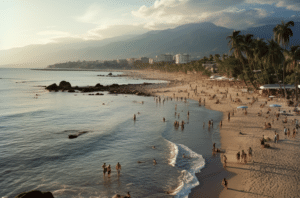
Exploring Mexico through the lens of ecotourism represents an effortless conservation effort, providing an unforgettable experience.
Your conscious travel choices will help protect Mexico’s vibrant natural and cultural heritage for generations to come.
Before setting off, be sure to delve into other practical resources like green travel guides and eco tourism handbooks.
Staff Writer
- Staff Writer #molongui-disabled-link Estimating Pool Pump Electricity Costs
- Staff Writer #molongui-disabled-link Empowering Your Journey: Navigating the World of Range-Extended Electric Vehicles
- Staff Writer #molongui-disabled-link Choosing And Installing An Alexa Compatible Light Switch
- Staff Writer #molongui-disabled-link Average Microwave Wattage: How Many Watts Does A Microwave Use
Leave a Comment Cancel reply
Save my name, email, and website in this browser for the next time I comment.
We’re on the road right now – join in on the fun and follow @thebrokebackpacker on IG!
- Meet the Team
- Work with Us
- Czech Republic
- Netherlands
- Switzerland
- Scandinavia
- Philippines
- South Korea
- New Zealand
- South Africa
- Budget Travel
- Work & Travel
- The Broke Backpacker Manifesto
- Travel Resources
- How to Travel on $10/day
Home » North America » 15 STUNNING Eco Resorts in Mexico [2024 Edition]
15 STUNNING Eco Resorts in Mexico [2024 Edition]
Mexico is a traveller’s dream. It’s hard to think of another place that offers this level of diversity. It will leave you will your heart full, and your belly even fuller.
It offers dry deserts, tropical jungles, white sand beach resorts, ancient ruins, and so much more; the list is endless. Because of this, Mexico is one of the most popular places to travel in the world . From spicy Mexican cuisine to snorkelling in the Caribbean sea, the opportunities for a relaxing retreat in Mexico are endless.
That’s why we’re pleased that Mexico is making such a good effort with their sustainable tourism. Many are understanding that preserving their local community with eco-friendly is vital.
Although hotels are fairly easy to find, considering eco-friendly and unique accommodation options in Mexico for your trip brings a new experience with it. For a peaceful and sustainable travel experience, check out some of Mexico’s best eco resorts.
There are loads of amazing eco-friendly resorts on offer, so how do you pick the best one? Well, we’ve done the dirty work to help you decide exactly what to look for, and what to expect from an eco resort in Mexico.
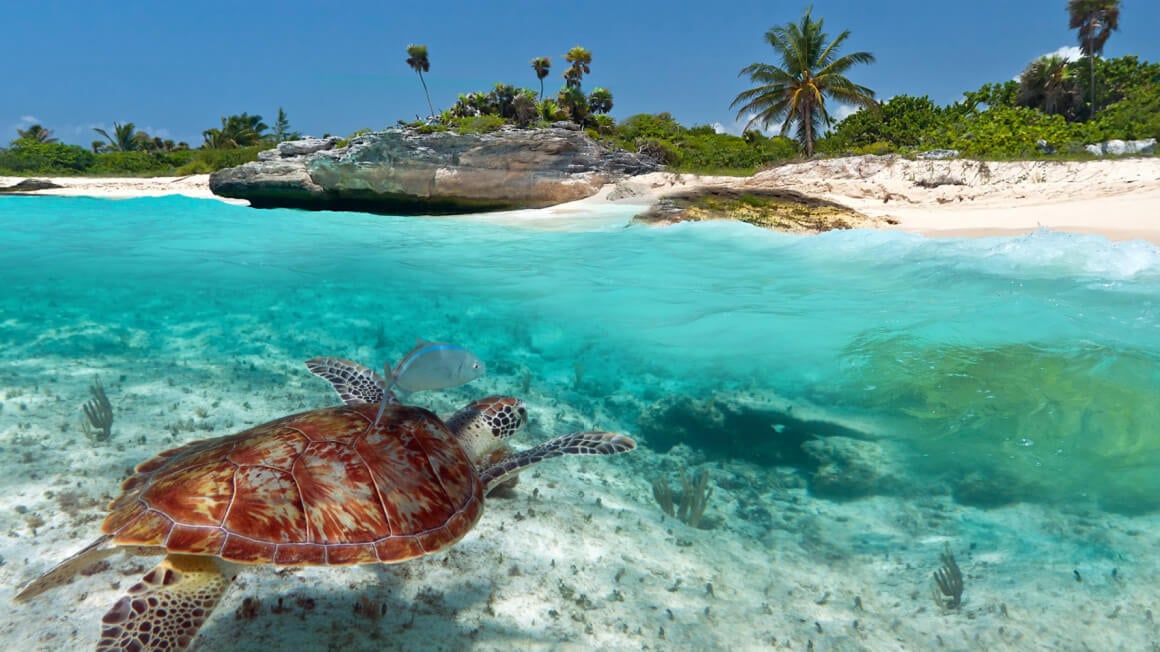
Zamas Hotel
- > Swimming pool
- > Beachfront location
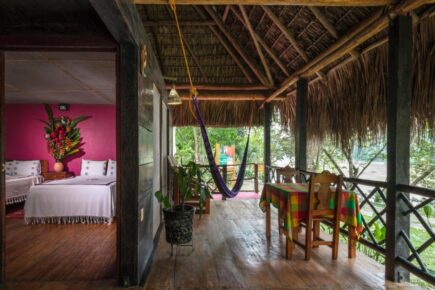
Las Guacamayas Lodge Resort
- > 1-5 guests
- > Room service
- > On-site restaurant
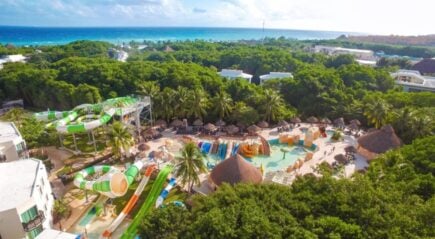
Sandos Caracol Eco Resort
- > Onsite waterpark
- > Numerous restaurants

Unlock Our GREATEST Travel Secrets!
Sign up for our newsletter and get the best travel tips delivered right to your inbox.
Staying in an Eco Resort in Mexico
The top 15 eco resorts in mexico , faqs about eco-friendly resorts in mexico, final thoughts on the best eco resorts in mexico .
Mexico is pretty large, and eco resorts tend to be in a more secluded setting, often close to stunning beaches or tucked away in jungle scenery. No need to worry about loud city noises.
Staying at an eco resort also means a unique Mexico travel experience . You’ll be removed from the main tourist scene so you can appreciate the country’s natural gems.
Eco hotels and resorts vary greatly from luxurious high-end spiritual retreats to smaller down-to-earth spots. However, you can always expect natural surroundings, a focus on environmental sustainability, and eco-friendly practices.
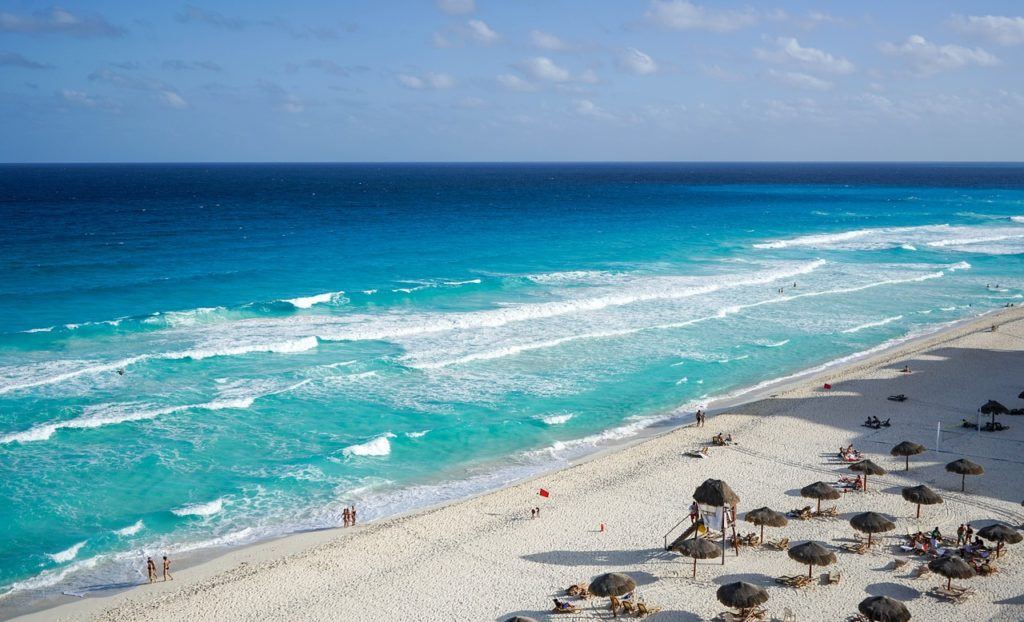
Thanks to Mexico’s diverse landscape and intriguing history, eco resorts offer a range of activities. You can enjoy palm trees, morning yoga, snorkelling, boating, or hiking activities. You’ll have the opportunity to choose somewhere that fits your travel style.
Eco resorts mostly offer private rooms, while some budget eco-friendly hostels follow traditional dorm-room models. Others have private bungalows, luxury tents, treehouses, or even cabanas.
Healthy food is also often included, dining is available onsite, or self-catering options. Most importantly, food waste is taken care of correctly.
So let’s take a look at the best options for you.
Now that you have an idea of what to expect at an eco resort, read on to discover our picks of the top 15 eco-friendly resorts in Mexico! Each of these places offers the chance for a relaxing escape from daily life amid peaceful, natural surroundings.
1. The Overall Best Eco Resort in Mexico – The House in the Woods
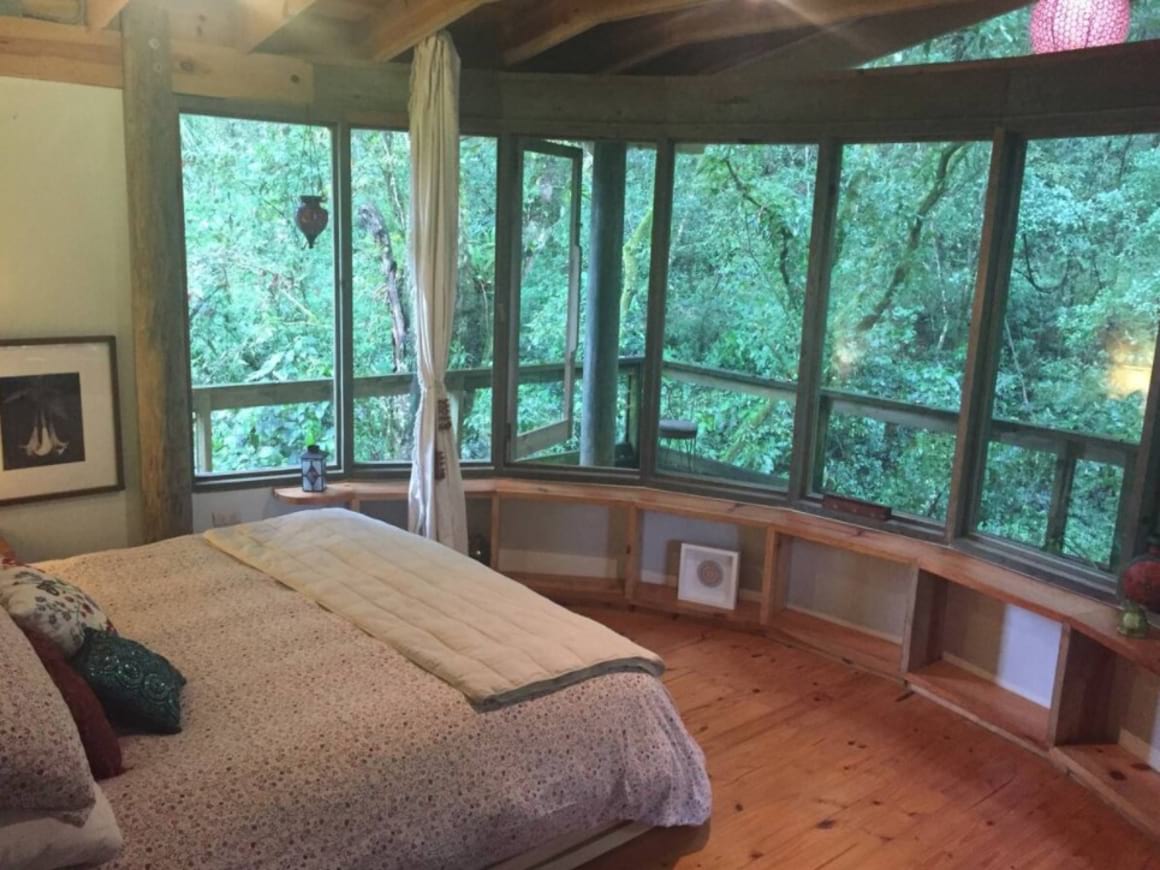
- Fully equipped kitchen
- Beautiful view from all rooms
Located just outside of Xalapa, Veracruz, this beautiful woodland eco lodge is the perfect place to relax and take a break from it all. There’s a nature spa offering Temazcal and yoga sessions within walking distance. Alternatively, you might just want to stay at the lodge to enjoy the scenery.
There’s a deck with outdoor seating where you can admire the views. The cabin also has some modern comforts including a full kitchen, TV, and Wi-fi. You’ll feel right at home within this quiet and nature-loving local community, where you can appreciate the beauty and wildlife of the Mexican jungle.
2. The Best Budget Eco Resort in Mexico – Las Guacamayas Lodge Resort
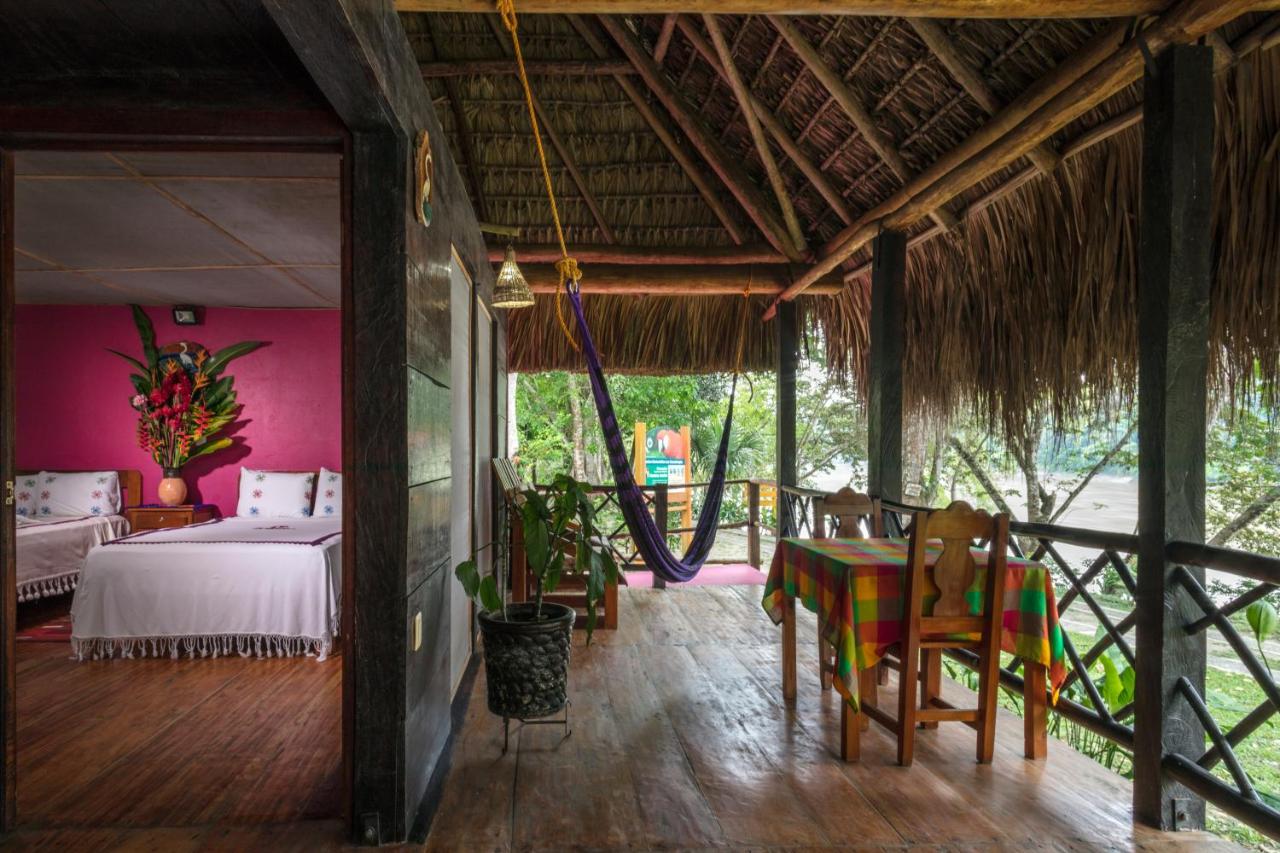
- Room service
- On site restaurant
Surrounded by the lush, tropical scenery in the jungle of Chiapas, this eco-friendly resort is both budget and eco-friendly! They’re a perfect example of how sustainable tourism should be done. Their eco-friendly practices pay close attention to their surroundings, nurturing the jungle’s native species and constructing with natural materials.
Activities at Las Guacamayas are aplenty. Go hiking and canoeing, or take a boat ride to see the Azules Nature Reserve. And, of course, take time for bird watching with people who really care in this unique location.
Budget Tip: Dorms in Mexico start from $10USD per bed. They’re the cheapest accommodation in the city. Search for hostels in the area !
3. Best Eco Hotel for Families visiting Mexico – Sandos Caracol Eco Resort
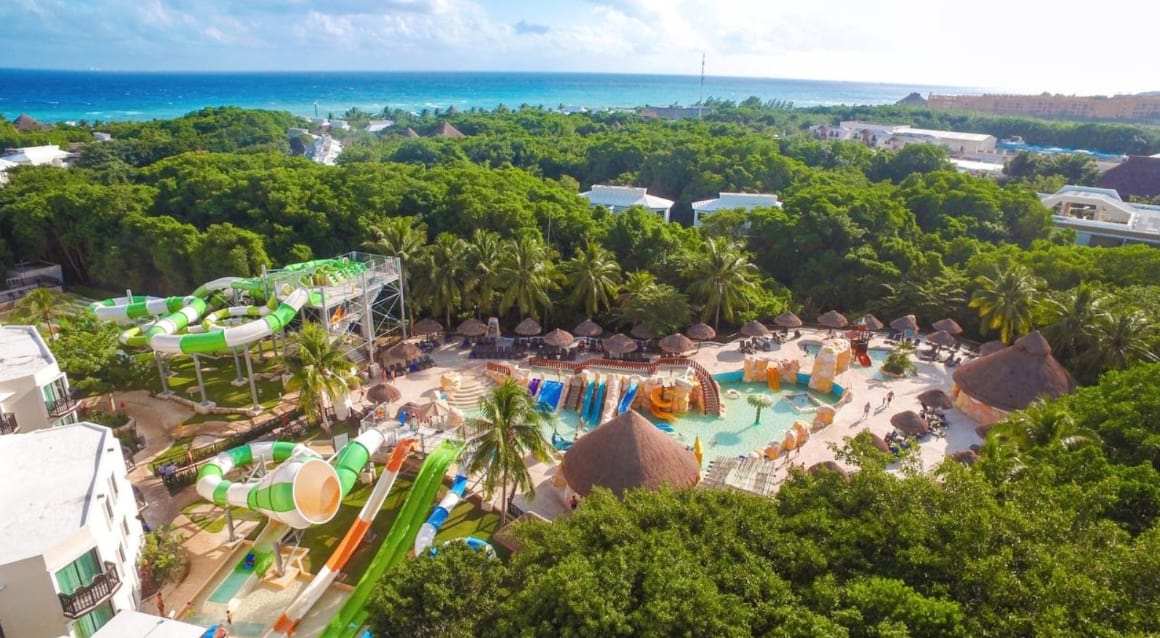
- Onsite waterpark
- Numerous restaurants
As far as eco-friendly all-inclusive resorts go, Sandos Caracol Eco Resort is a truly unparalleled luxury experience on the Yucatan peninsula. Staying in Playa Del Carmen is a great choice and this luxury experience is one of a small handful of resorts on the Riviera Maya working hard to reduce their carbon footprint.
Their sustainable energy is made up of renewable sources such as solar panels. They understand that without their local community, the Riviera Maya has nothing. So Sandos Caracol Eco Resort strives to protect its surrounding ecosystem.
Guest rooms include access to a private beach on the Caribbean Sea, free wi-fi, an outdoor pool, its own private terrace, and room service. There’s something for the whole family here too at this Eco Resort in Playa Del Carmen .
4. The Best Budget Eco Hostel in Mexico – Xkopek Native Bee Farm Camping
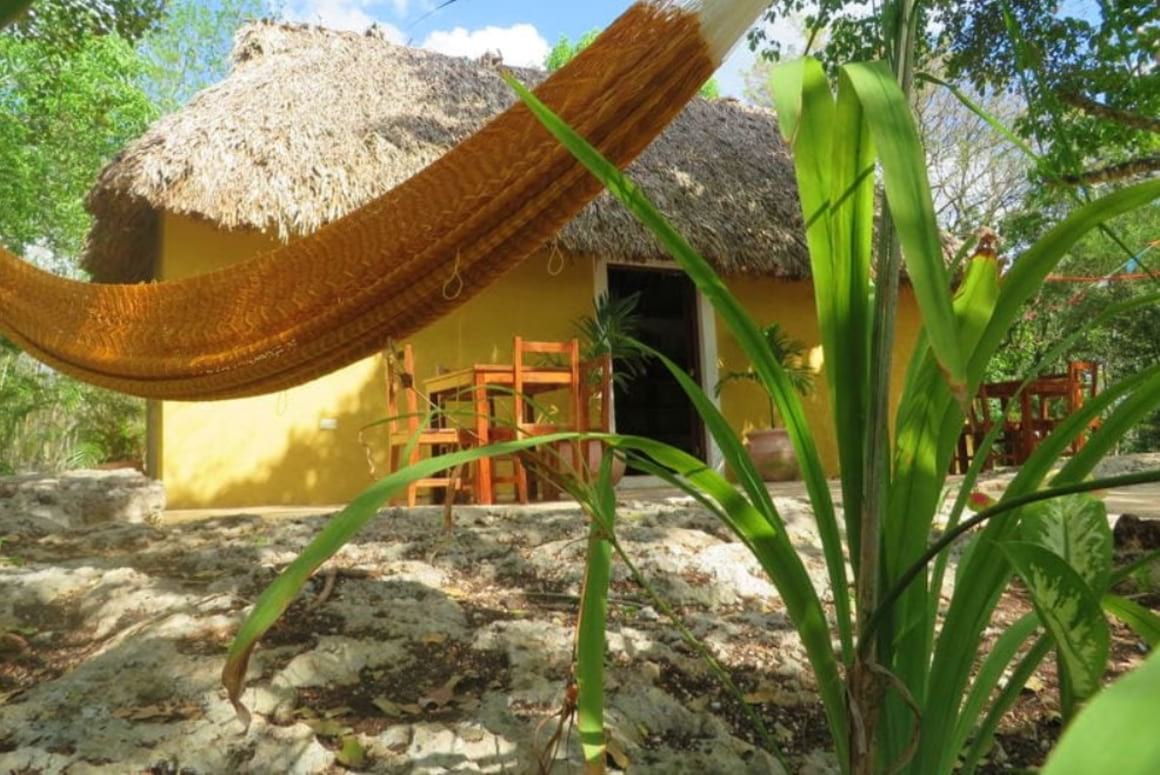
- Kitchen onsite
- Bicycles for rent
Just outside the city of Valladolid, Xkopek Native Bee Farm has rooms and tents available for budget backpackers hoping to find somewhere close to nature. Guests have access to a shared kitchen, showers and bathrooms, and bikes to rent for exploring the area.
Within Valladolid, you’ll find local markets, churches, museums, and historic ruins. Explore the Cenote Zací or travel a bit further to Chichén Itzá, then return to the peaceful and quiet campsite to relax in the garden.
5. Best Eco Hotel for Couples – Zamas Hotel
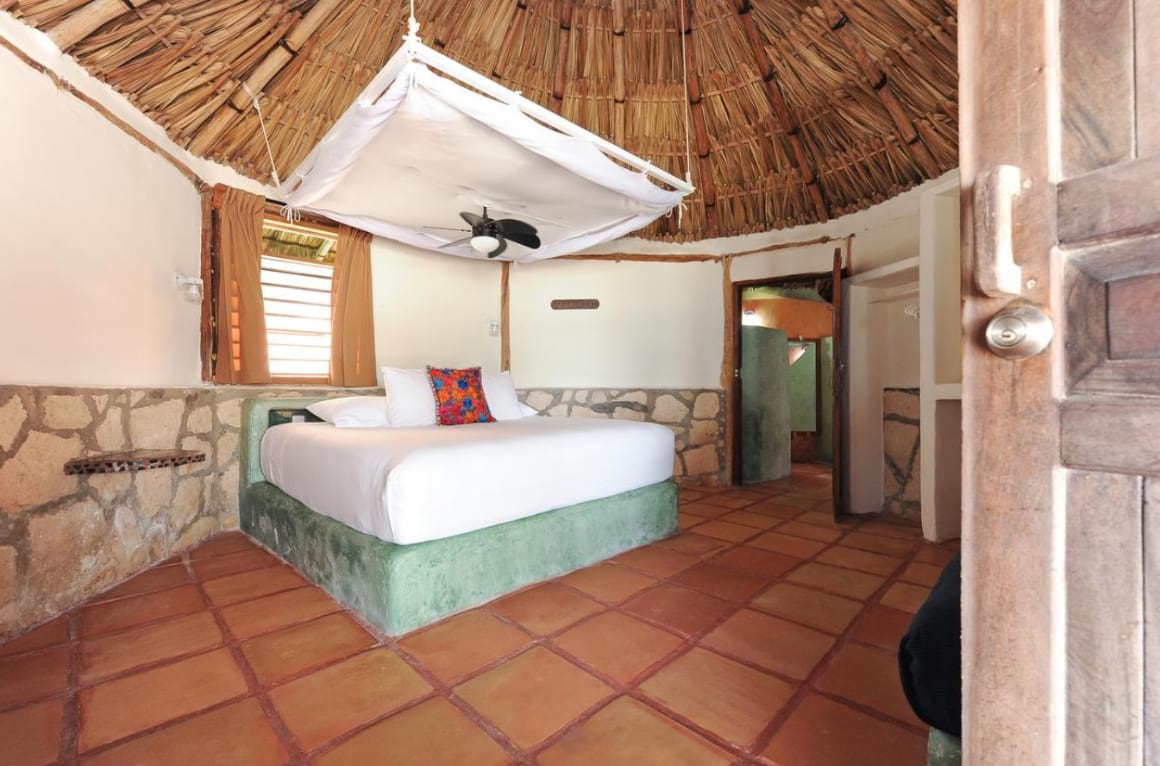
- Swimming pool
- Beachfront location
This eco-resort in Tulum is perfect if you want to treat your other half. Tulum is a popular city among tourists, known for its white sand beaches and ancient Mayan ruins. What better than to enjoy the wonders of this tropical paradise in an eco friendly hotel? The Zamas Hotel is a mostly electricity-free property, although a generator does supply limited lighting and Wi-fi in common areas.
During the day you can sign up for yoga classes, book a massage onsite, or rent gear at the diving shop to explore the tropical waters. Once the sun goes down, the candles and matches provided can be used to create a romantic atmosphere on the beach.
6. Another Great Eco Hotel for Couples – Cocolia Hotel, Mazunte
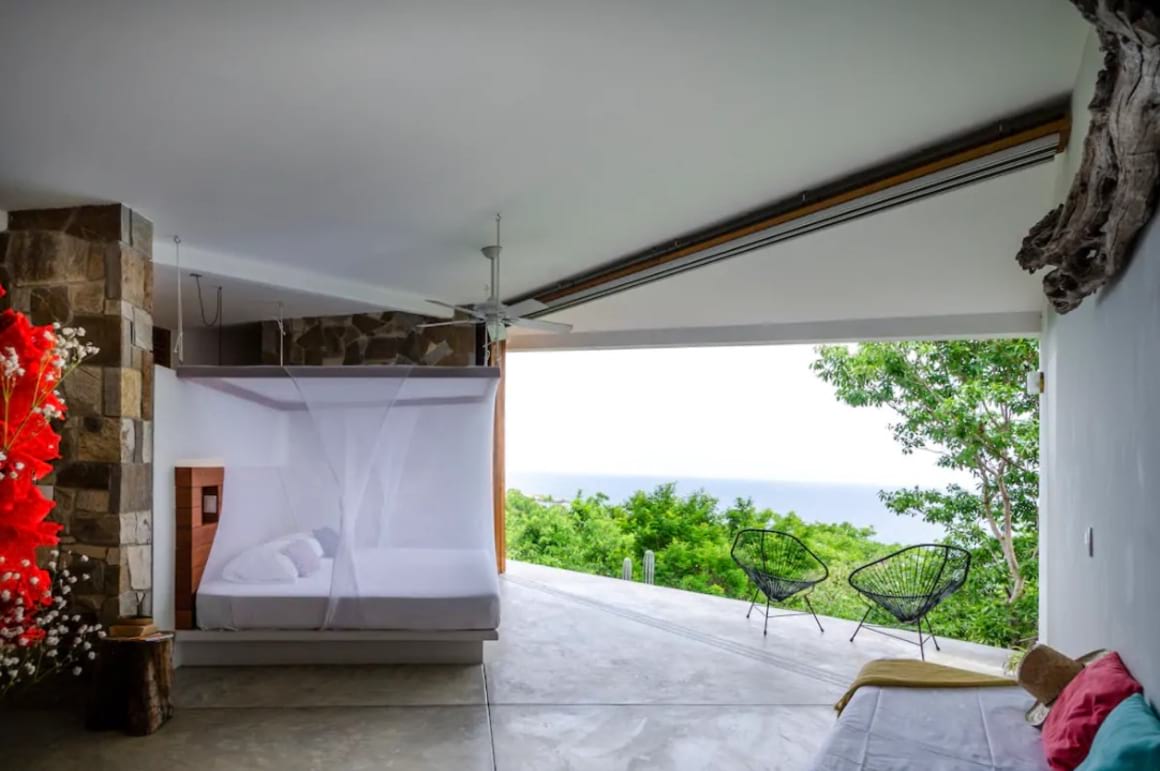
- King sized bed
- Amazing jungle views
Enjoy a peaceful and romantic jungle escape at the Cocolia Hotel, located just outside of Mazunte. Your private bungalow features a king sized bed, expansive views of the jungle and Pacific, and even an open shower facing the ocean. Caliente.
You’ll have complete privacy in your bungalow, as well as access to public spaces including a salt-water swimming pool and onsite restaurant. The main energy source of the hotel comes from solar panels, and the buildings were designed to flow with the natural topography of the region to create a more sustainable and immersive nature experience.
7. The Best Eco Resort for a Group of Friends – Four Seasons Crocodile Bar and Cabañas
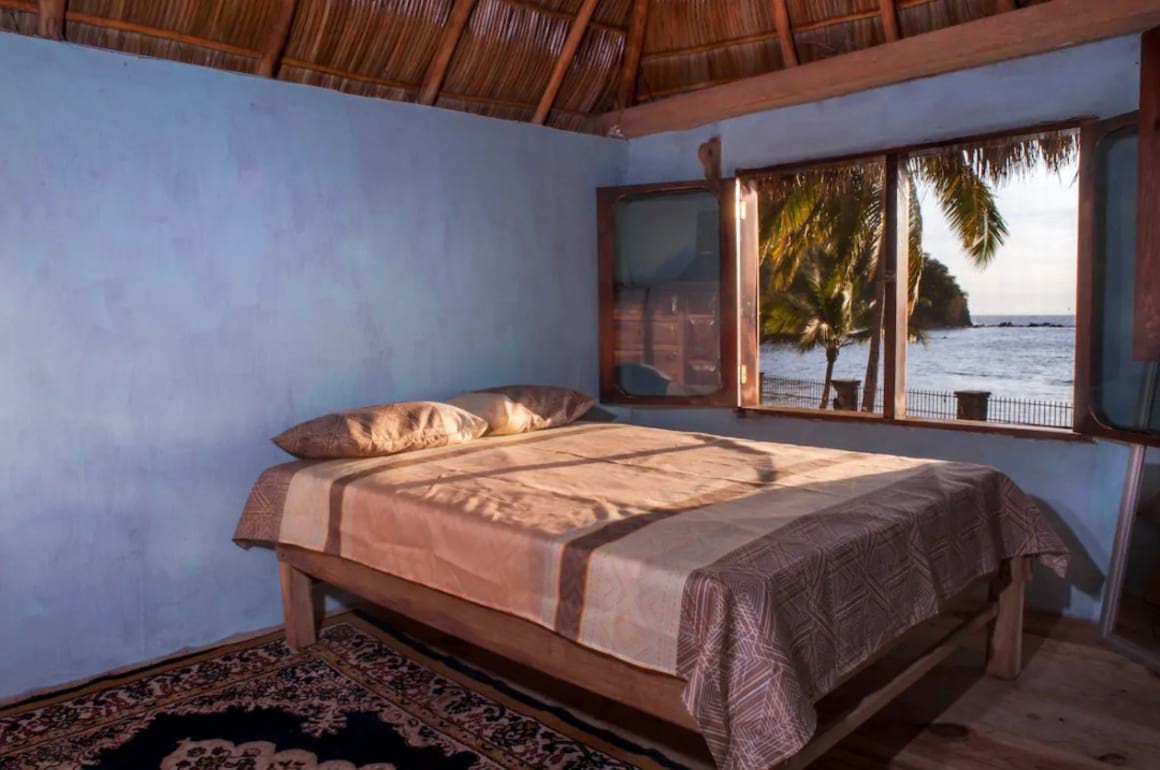
- Onsite restaurant
The rustic and charming cabins of Four Seasons are the perfect spot to enjoy a beach vacation on the Jalisco coast of Mexico. There are several cabins to pick from depending on your group size, each featuring beachfront access and a palapa roof.
The peaceful charm of La Manzanilla makes it a great place for relaxing on the beach. You can check out one of the local restaurants in town, or just eat at the Crocodile Bar onsite and watch the sunset over Tenacatita Bay.
8. Over-the-Top Luxury Eco Resort – Chablé Yucatan

- Private pool and terrace
As long as your budget allows, the Chablé Yucatan eco resort offers a truly unparalleled luxury experience on the Yucatan peninsula. Each room features its own private terrace and pool, plus guests all have access to the high-class spa, free bikes, and large swimming area.
Rooms don’t come cheap, but they really do have it all when it comes to comfort and service. Start with breakfast in your room, head out on a bike tour, enjoy an afternoon at the spa, then round off your day with a delicious meal at the highly rated La Chaya Maya restaurant and bar. Wind down with an evening dip in your private pool.
9. Best Eco Hostel for Backpackers – Nomadas Ecohostel
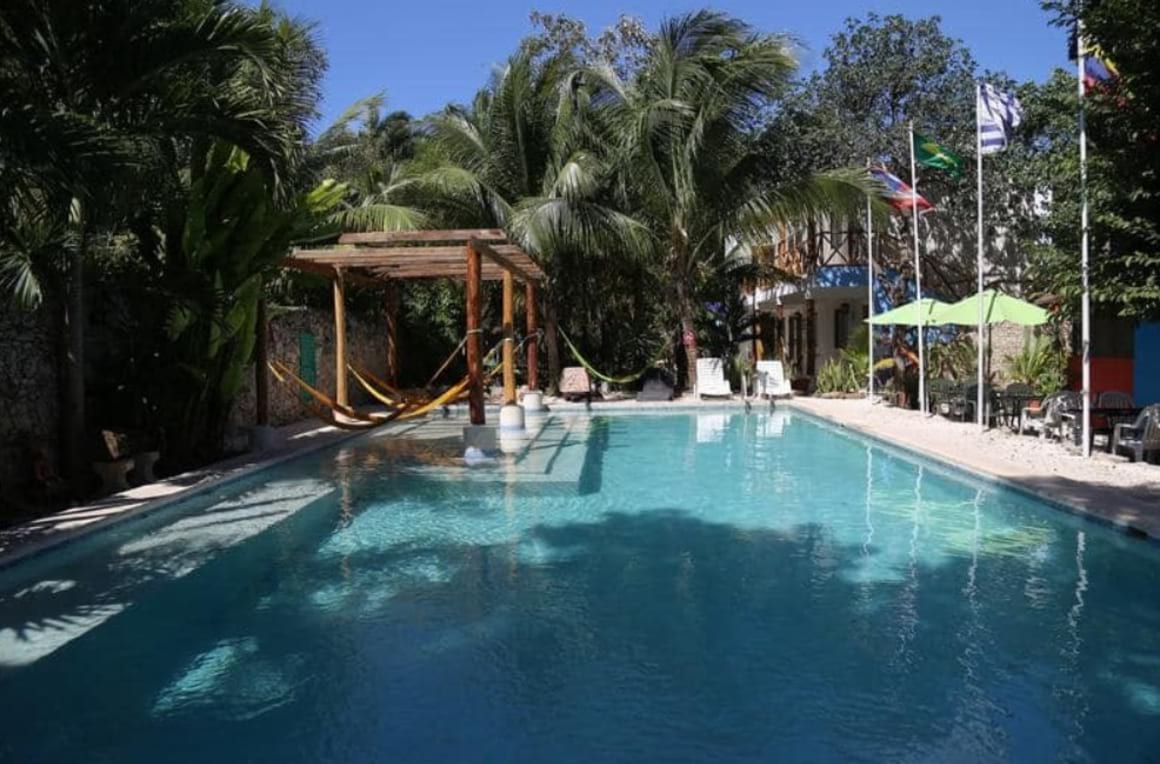
- Free breakfast
- Swimming pool and hammocks
Located in the town of Mérida, capital of Yucatan and popular home-base for exploring Mayan ruins, this eco-accommodation has everything you’d want from staying in a hostel . Start off each day with a free breakfast onsite, take yoga, dance, or cooking classes during the day, and relax to live music in the evenings.
There’s plenty to see and do in Mérida, from touring museums to live music entertainment. On days when you just need to relax and take a break, you can lounge by the pool or read your favourite book in the comfort of one of the hammocks.
10. Best All-Inclusive Eco Resort in Mexico – Xinalani Yoga Retreat
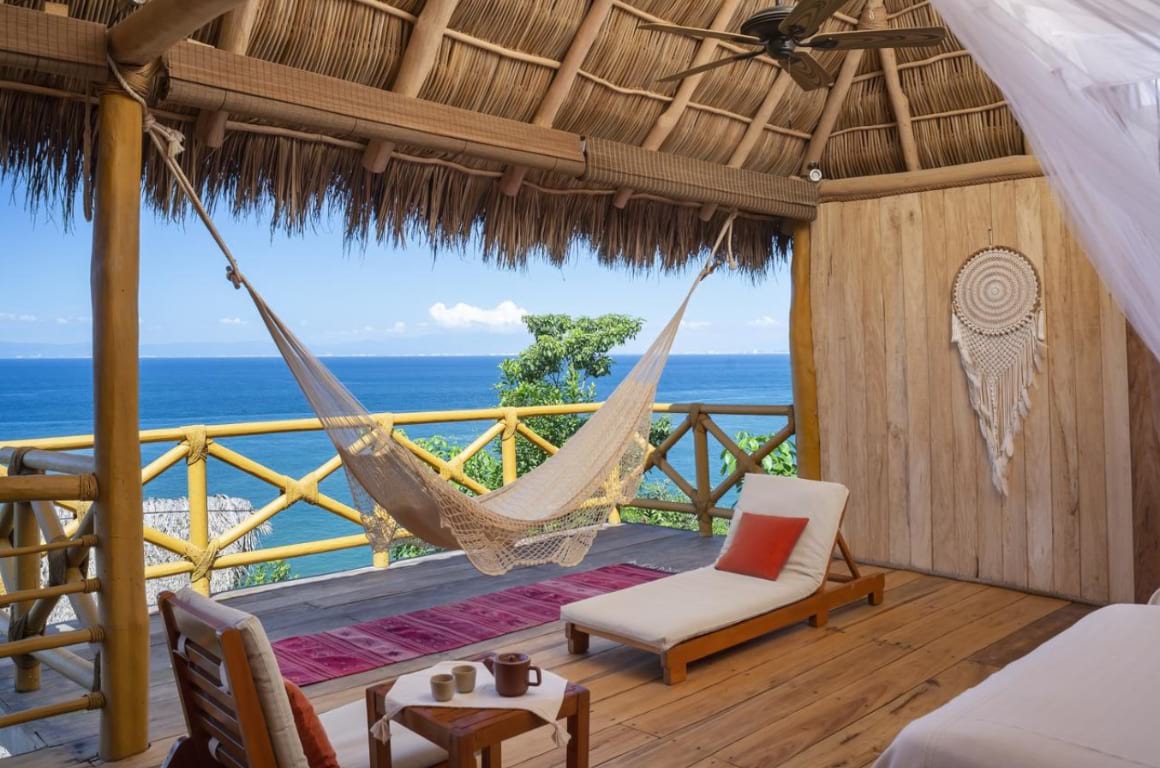
- Private beach area
- Spa and Temazcal onsite
For the ultimate relaxing beach vacation in Mexico , the Xinalani Yoga Retreat is an excellent choice. This all-inclusive resort includes 3 meals and 2 yoga sessions per day in the room price. Plus there’s a swimming pool and private beach area, so you can spend as much time as you want relaxing on the sand.
The resort has excellent modern comforts like Wi-fi, fans or AC, but it also maintains a simplistic charm. Here, you can reconnect with nature and be undisturbed by the rush and traffic of daily life.
11. Best Eco Hotel for Solo Travelers – Tubohotel
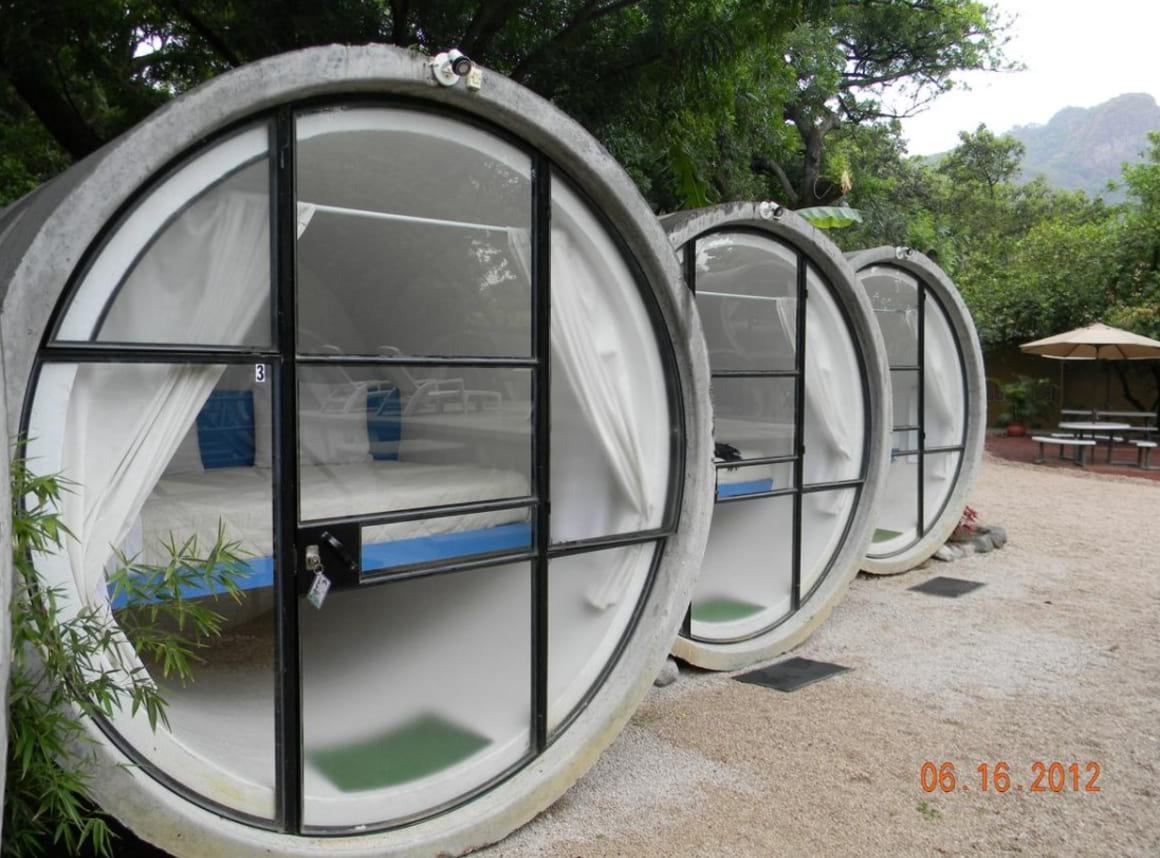
- Beautiful garden
This unique hotel takes sustainability to the next level, by converting old concrete tubes into fun and classy accommodation. The large glass windows let in plenty of natural light and a view of the pool and garden, but the curtains provide full privacy when you’re inside.
Tepoztlán’s local markets and natural parks are pretty close by. If you just want to relax, get comofrtable in one of the beach loungers by the pool for a break. Each tube is perfect for solo travelers, but can also accommodate couples who don’t mind getting cozy.
12. Best Eco Hotel for a Weekend in Mexico – OYO Jolie Jungle Eco Hotel

- Restaurant onsite
If you only have a weekend to spend in Mexico, then the Jolie Jungle Eco Hotel is the perfect place to stay. Whether you’re flying solo or traveling with a large family, the bungalow has rooms of various sizes to accommodate all parties.
The eco design of the hotel makes it a perfect place to relax and reconnect with nature. Watch jungle birds out of your window, take a dip in one of the swimming pools, or relax in the traditional Temazcal steam bath. There are also bikes which are free to use, and nature trails on the property so you can appreciate the jungle scenery.
13. Best Eco Resort for Honeymooners – Cabaña Areca
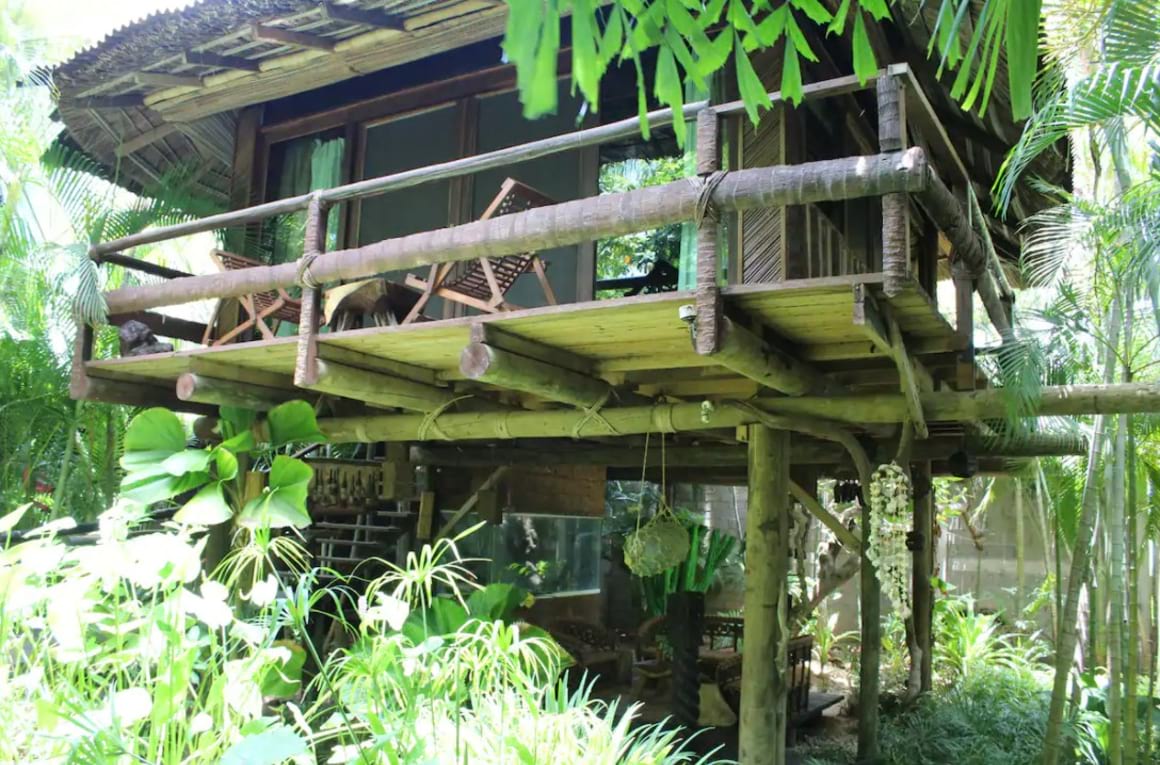
- King size bed
If you’re planning a honeymoon in Mexico, the Cabaña Areca offers a beautiful, private eco retreat for a romantic vacation. There’s no hot water or air conditioning, but the mild climate and open architectural design allows for natural air flow to keep the cabin perfectly comfortable.
You’ll be peacefully secluded in the jungle and surrounded by nature, but if you do want to venture out there are shopping centers, beaches, and restaurants nearby. You can also sign up for additional activities like morning yoga, massages, Temazcal steam baths , or the breakfast service.
14. Amazing Luxury Eco Retreat – Rancho del Agustin
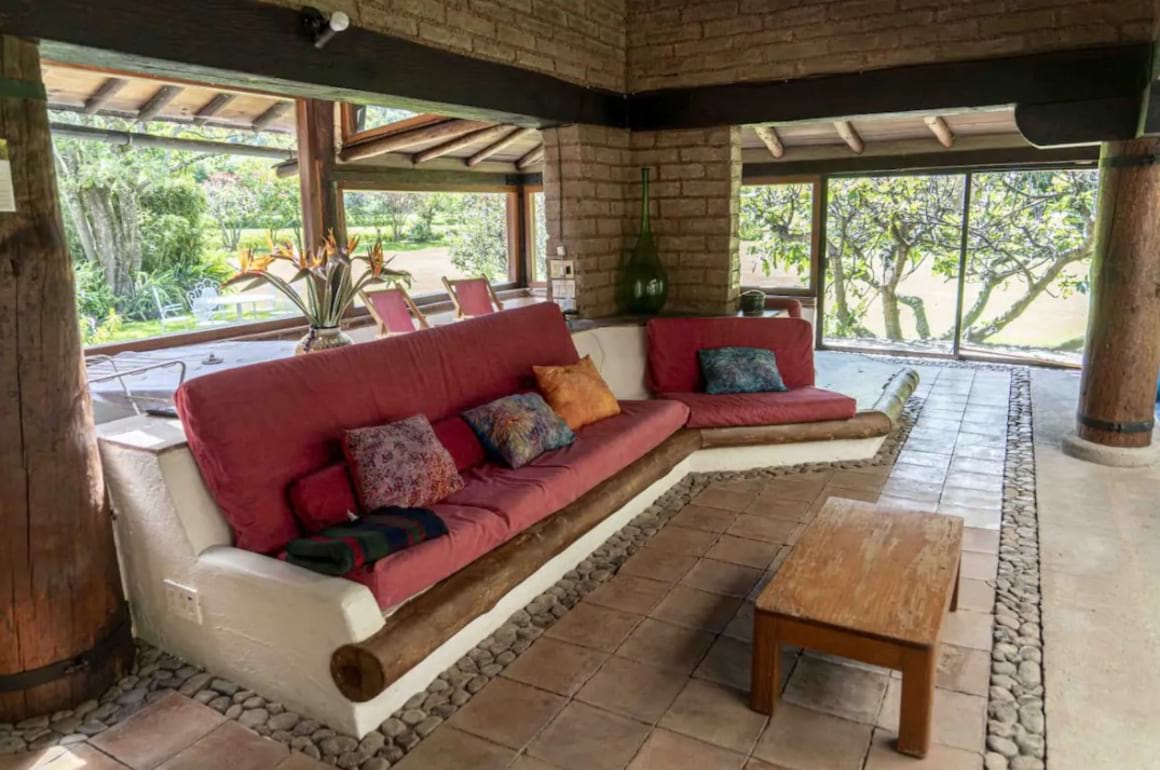
- Expansive private gardens
Imagine having your own private eco ranch in Mexico for an unforgettable vacation! This eco-friendly retreat is perfect for groups, families, or couples who want a special and private place to relax and reconnect with nature.
You’ll be surrounded by rolling green hills with views of mountains and rivers, plus a traditional Mexican ranch all to yourself. The space is well equipped with modern amenities like a grill, solar heating for the pool, and large comfortable living and dining spaces.
15. Most Traditional Eco Hostel in Mexico – Cenote Encantado
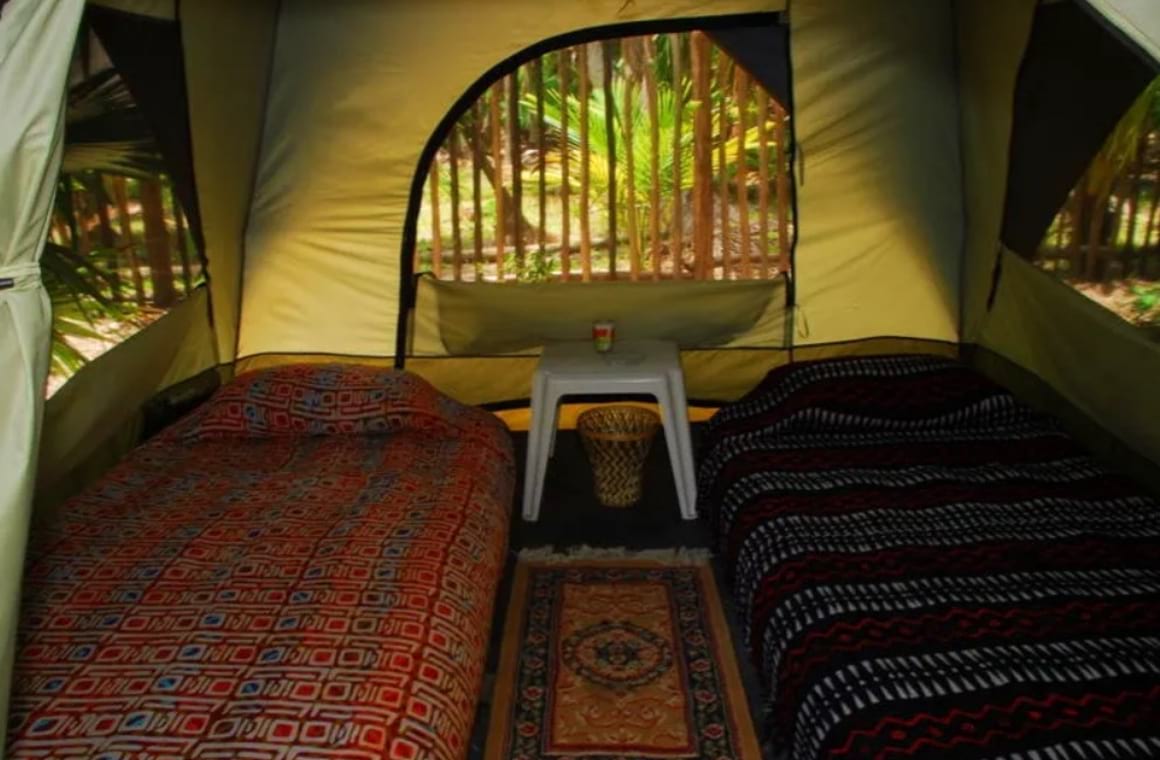
- Shared kitchen
- Yoga classes
This eco hostel is a great spot for adventurers and people looking for a more holistic retreat experience. Located in a popular eco-tourist location, this hostel in Tulum features camping-style accommodation with a shared kitchen. You’ll also have opportunities to take yoga classes and learn about permaculture.
You can take part in fun adventure sports like swimming, snorkelling , boating, and hiking thanks to the 100+ cenotes (aka sinkholes) located close to the property. The hostel has kayaks and snorkelling gear available for rent, and there’s also a Temazcal steam bath onsite.
Here’s what people usually ask us when they look for vacation homes in Mexico.
What is the overall best eco resort in Mexico?
We would highly recommend staying at The House in the Woods during your stay in Mexico. It’s one of the absolute best eco resorts in the country!
What is the coolest eco resort in Mexico?
The Cocolia Hotel, Mazunte is by far one of the coolest eco resort in Mexico. Enjoy a breathtaking view that you won’t get anywhere else!
Are there any eco-friendly beachfront resorts in Mexico?
Four Seasons Crocodile Bar and Cabañas is located right by the beach. You’ll feel the sand under your feet as soon as you step out of the door!
Where can I book the best eco resorts in Mexico?
You can find the absolute best eco resorts in Mexico on Airbnb . If you’re not happy with the options, check out booking.com !
What’s the best eco-resort in Cancun, Mexico?
The best eco-resorts in Cancun are either in the hotel zone or out in the sticks. Sandos Caracol is a great option in my opinion. It is especially great if you are traveling with little ones too.
Don’t Forget Your Mexico Travel Insurance
ALWAYS sort out your backpacker insurance before your trip. There’s plenty to choose from in that department, but a good place to start is Safety Wing .
They offer month-to-month payments, no lock-in contracts, and require absolutely no itineraries: that’s the exact kind of insurance long-term travellers and digital nomads need.

SafetyWing is cheap, easy, and admin-free: just sign up lickety-split so you can get back to it!
Click the button below to learn more about SafetyWing’s setup or read our insider review for the full tasty scoop.
Whether you’re interested in historic ruins or simply looking for a spot to relax on the beach, Mexico offers the dream vacation destination for many travellers. Instead of booking into your regular Mexican backpackers, try out an eco resort! It’s the perfect opportunity to turn your trip into a more unique and sustainable experience.
Remember that these places that truly care about their natural landscape and environmental sustainability will give you 100% transparency. They LOVE questions about their eco friendly practices and impact.
Yes, green washing is becoming more of a problem with eco tourism. So please, do your research: many places do truly just want to take your money and don’t really care about the environment.
But you people care for the world are making a difference. Eco-tourism is an important tool to changing the world for better.
Hopefully, after reading through this list of the best eco hotels and eco hostels in Mexico you’ll have found a spot that’s perfect for you. From luxury travel to simple and rustic accommodation, there’s a lot of variation so everyone can find something to fit their preferences and budget.
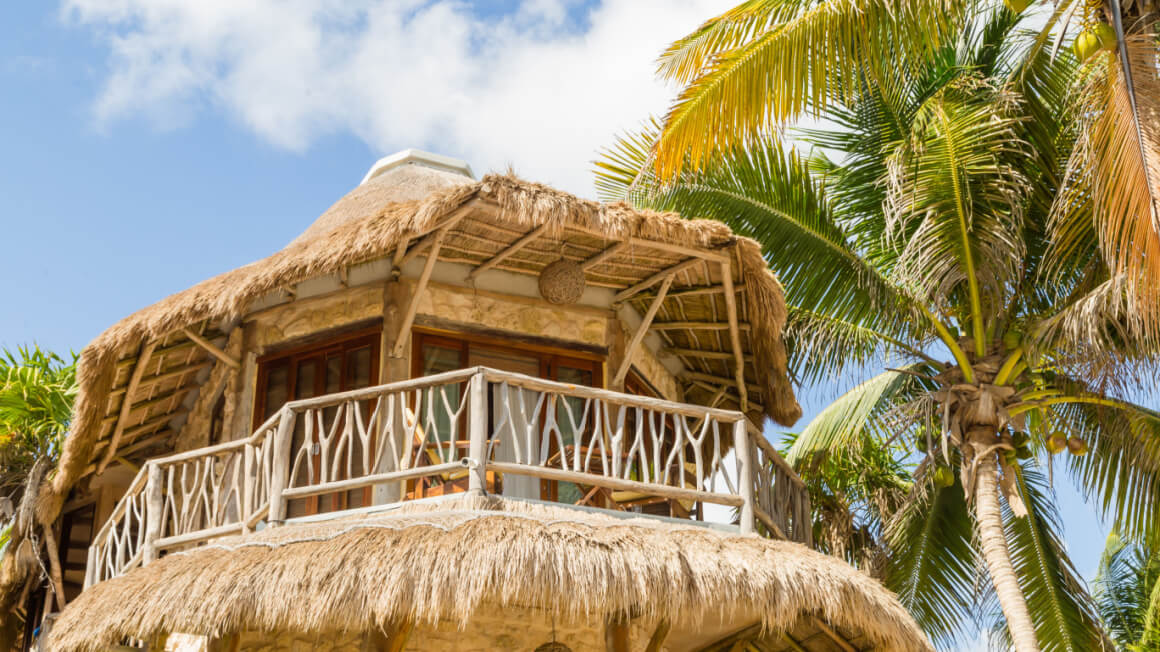
And for transparency’s sake, please know that some of the links in our content are affiliate links . That means that if you book your accommodation, buy your gear, or sort your insurance through our link, we earn a small commission (at no extra cost to you). That said, we only link to the gear we trust and never recommend services we don’t believe are up to scratch. Again, thank you!

Claire Martin
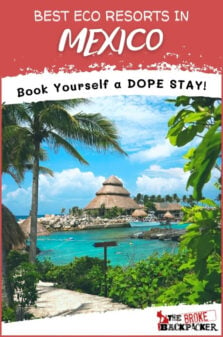
Share or save this post

Leave a Reply Cancel reply
Your email address will not be published. Required fields are marked *
Save my name, email, and website in this browser for the next time I comment.
Notify me of followup comments via e-mail.
- Destinations
- Travel Guides

Sustainable and responsible travel in Mexico
)
Jo Williams
- Sustainable travel in Mexico
Sustainable tourism in Mexico is a natural fit. With vast landscapes, an abundance of wildlife, and a culture interlinked with nature, the country makes the perfect eco-friendly destination.
Snorkel on the Great Mesoamerican Barrier Reef, the second-largest reef in the world, trek through one of the 40 UNESCO-designated biosphere reserves, and spot seven of the world's eight species of sea turtle.
Tourism hasn’t had only positive impacts on Mexico’s landscapes. In places like Cancun and Quintana Roo, mass tourism has had many negative effects in the past including the introduction of invasive species, pollution and litter, and large-scale habitat loss.
But the government and tourism sector have switched focus in recent years to offer a more sustainable way to visit Mexico . It’s now more important than ever to ensure that tourist dollars are supporting the right projects and places for the future of eco-tourism in Mexico.
- Sustainable places to visit in Mexico
Yucatan Peninsula
Despite being a popular destination, there are many sustainable tourism options on the Yucatan Peninsula . Just off the coast of tourist haven Playa Del Carmen , the island of Cozumel is well known as one of the best places to dive in the world.
Visit the only active pearl farm in the Caribbean at Cozumel Pearl Farm . It’s constructed on stilts made from recycled telephone poles and is a family-owned project that cares for and gives back to the environment.
They have recently started coral reef gardening too, which has in turn encouraged an array of sea life. Enjoy a tour of the farm or go diving or snorkelling to find out more.
Puerto Morelos is one of Mexico’s “ Pueblos Magicos ” - towns and villages that are rich in Mexican legends, history, culture and/or natural wonders. It’s a great spot to get away from the tourist resorts of Quintana Roo, and spend some time watching the local stilt fisherman or explore the surrounding protected areas.
Another top eco-friendly tourist attraction in Quintana Roo is Aktun Chen, home to a cavernous underground cenote system with thousands of limestone stalactites. Set within a 400-acre preserve of virgin forest, the park is a Mexican-owned enterprise where 90% of the land is left for nature. You can also go zip-lining, explore the area on ATV tours, and explore part of the jungle by boardwalk.
Other eco-friendly places to visit in the Yucatan Peninsula include the Sian Ka’an Biosphere Reserve (the largest protected area in the Mexican Caribbean), Isla Holbox , and the stunning Bacalar Lagoon - often called the “Maldives of Mexico”.
Baja Peninsula
The Gulf of California is home to hundreds of islands, islets, and coastal areas that have earned it the nickname of the “Aquarium of the World.” See sea lions on Espiritu Santo Island, take a blue whale watching tour in Loreto, and swim with whale sharks in the waters surrounding the peninsula from October through to April.
If dry land is more your thing, the Sierra de la Laguna is a fantastic hiking destination in Mexico. It’s best known for its ancient woodlands, scrub and an abundance of endemic vegetation. Take a locally organised tour to learn more about conservation in the area.
The Calakmul Biosphere Reserve is the largest forest reserve in Mexico where you can explore Maya ruins surrounded by thick jungle. The gateway to the reserve is the small town of Xpujil, a 45-minute drive from the Calakmul Biosphere Reserve. Here you can support local communities by buying artisan wares like textiles, jewellery, and home decor, directly from the people that have made them.
Central Mexico
Places like Mexico City are rich in history and culture and a must when travelling in the country. From here, a 4-hour bus journey into the state of Michoacán will take you to the Monarch Butterfly Biosphere Reserve .
Visit these forests in the Western Central Highlands between December and February to see one of the most awe-inspiring natural spectacles on earth. Here bright orange butterflies arrive in their thousands as part of one of the largest migrations in the natural world. Some travel up to 3000 miles over the course of two months from the northern forests of Canada and America.
- Things to be aware of before visiting
Avoid sunscreen and insect repellent when swimming
There has unfortunately been a lot of damage to the coral reefs and delicate ecosystems - especially in touristy places like the Yucatan Peninsula. When swimming anywhere in the cenotes, the Sian Ka'an Biosphere Reserve, and even water parks like Xcaret and Xel-Ha, only use 100% biodegradable sunscreen or wear UV clothing - a zero-waste non-toxic alternative that lasts a lifetime.
Swimming with dolphins in captivity
Although the capture of wild dolphins was outlawed in Mexico in 2002, there is still much debate as to the fairness of keeping them caged for tourism purposes. Although all animals since that time were born in captivity, many locals and visitors argue that the practice is still cruel. There are plenty of opportunities to see and swim with marine life in the wild in a responsible way in Mexico.
Whale shark and boat tours
Many boat tours now focus on eco-friendly methods and put the animals' safety and comfort first. But it’s always best to do some research and choose reputable operators; many use greenwashing tactics like “no plastic” but still bait marine life to ensure encounters. The best time to see whale sharks in the Yucatan Peninsula and Riviera Maya is between the months of July and August.
Supporting local businesses and communities
Try to avoid foreign tour operators (where tourism money doesn’t reach the locals) and instead seek out ejidos and cooperativos (local cooperatives). These small-scale tourism services are run by the community and offer the same, if not better, tours to many of Mexico’s ecotourism destinations. They are available all over Mexico, but are especially easy to find in states like Chiapas, Oaxaca, Quintana Roo, and the Yucatán.
Sustainable accommodation in Mexico
On the marine-life-rich Isla Holbox , you might be lucky enough to see whale sharks, sea turtles, and bioluminescent plankton. It’s also home to a swathe of birdlife like flamingos and pelicans and is part of the impressive Yum Balam Nature Reserve.
Stay at Hotel Casa Blat Ha , a sustainable hotel that runs on wind power and serves up produce from its very own orchard and medicinal plant garden.
A little further south, relax in style at MIA Bacalar Luxury Resort & Spa at the foot of Bacalar Lagoon. The eco-friendly hotel recycles its water to use for irrigation, composts food waste and also grows its own locally sourced chemical-free produce.
Stay at a luxury eco-camp with Journey Mexico in Magdalena Bay on the Pacific coast of the Baja California Peninsula. Here you can participate in a world-renowned sea turtle research and conservation project.
They also offer volunteer experiences researching whale sharks, and in other areas like the Aztec city of Tenochtitlan and the Sierra de la Laguna Biosphere Reserve.
Planning a trip to Mexico? Read our travel guides
- Introduction
- Sustainable accommodation
Share this article
)
Author - Jo Williams
Jo Williams is a freelance writer with 10 years' experience working in travel and tourism. A Brit who got fed up with the 9 to 5 corporate life, she sold everything to become a full-time wanderer.
Jo has travelled to over 70 countries and worked throughout Europe for a major tour operator. She hopes to inspire you to work less and travel more.
Last Updated 9 February 2024

.png)
Your Ultimate Guide to Sustainable Travel in Mexico
Whether you are a first-time visitor or a seasoned traveler, this Ultimate Guide to Sustainable Travel in Mexico will help you explore and discover responsibly and sustainably.
Welcome to our guide on sustainably experiencing the magic of Mexico. We will explore the diverse range of natural beauty, history, and culture, from its beautiful mountains and immaculate beaches to its lively cities and quaint villages. This guide will offer advice and suggestions for visiting Mexico in an environmentally responsible and sustainable manner while still taking advantage of all the attractions and thrills that the country has to offer.

Sustainable Travel Tips
Cultural immersion & volunteering, the complete guide to eco-friendly travel in mexico, embrace eco-friendly practices.
Sustainable travel is about minimizing our environmental impact and supporting local communities. And in Mexico, there are plenty of ways to do just that. From staying at eco-resorts to visiting wildlife conservation projects, there are countless opportunities to discover the magic of Mexico while treading lightly on this beautiful land.
Let's start with Tulum, a beach town famous for its turquoise water and pristine white sand beaches. But did you know that Tulum is also a hub for sustainable tourism? You can stay at eco-resorts that use renewable energy sources, conserve water, and support local conservation efforts. And when you're not lounging on the beach, you can explore the Mayan ruins or take a snorkeling tour to see the stunning coral reefs.
Next, let's head to Chiapas, a state in southern Mexico known for its lush jungles and rich biodiversity. Visit wildlife conservation initiatives here to safeguard threatened species like sea turtles and jaguars. These projects often involve local communities and offer educational programs for visitors. When you need to learn about wildlife conservation, you can explore the colorful markets, visit the Mayan ruins, or dip in the stunning waterfalls and cenotes.
But sustainable travel is not just about visiting new places; it's also about supporting local businesses and communities. For this reason, we advise dining at neighborhood eateries, buying at neighborhood markets, and lodging at locally owned properties. By supporting local businesses, you're helping to create jobs and support the local economy.
Want to be a green traveler in Mexico? Say no more! We've got you covered with tips on reducing your carbon footprint while savoring every moment. Ride a bike through colorful streets, support local artisans at bustling markets, and immerse yourself in community-based ecotourism activities.
Mexico's rich culture includes ancient Mayan ruins and vibrant street art. Mexico is a melting pot of traditions waiting to be explored. Dive into indigenous communities, savour mouthwatering street food, and join in traditional festivals that will ignite your senses and connect you with the heart and soul of this remarkable country. Looking to give back while you travel? Mexico offers a plethora of volunteering opportunities that can make a real difference. Whether helping at a sea turtle conservation project or planting trees in the Sierra Madre mountains, your work will help ensure that Mexico and its people have a more sustainable future.
Now that we've set the stage for sustainable travel in Mexico, it's time to dive deep into the complete travel guide. Get ready to go on a journey filled with eco-friendly tips, cultural insights, and volunteering opportunities that will make your Mexican adventure unforgettable. We'll break it down into five chapters, each offering a unique perspective on how you can explore Mexico responsibly while positively impacting the environment and local communities. So pack your bags, grab your sombrero, and prepare for an unforgettable eco-adventure in Mexico! Viva la sustentabilidad!
Want to read more?
Subscribe to sdmugabetravels.com to keep reading this exclusive post.
- Eco-Friendly Destinations
Recent Posts
Top 10 Eco-Friendly Travel Tips for Sustainable Adventures in Mexico
Exploring Mexico: Top 10 Must-Do Experiences
Subscribe to get exclusive updates
Thanks for subscribing!
https://mexicodude.com/
mexico traveling
Exploring Mexico’s Ecotourism: Sustainable Adventures in Nature
Imagine immersing yourself in the vibrant wildlife of Mexico, surrounded by lush forests, crystal-clear cenotes, and breathtaking landscapes. Mexico’s ecotourism offers the perfect escape for adventure enthusiasts and nature lovers alike. From exploring ancient Mayan ruins to hiking through stunning national parks, this article will take you on a journey through the sustainable adventures and natural wonders that Mexico has to offer. Get ready to embark on an unforgettable exploration of Mexico’s eco-friendly destinations, where preserving nature is paramount.
Table of Contents
Overview of Mexico’s Ecotourism
Mexico’s ecotourism industry is thriving, offering travelers the opportunity to explore the country’s diverse and stunning natural landscapes while prioritizing sustainability and environmental conservation. Ecotourism, at its core, involves responsible travel to natural areas that conserves the environment, sustains the well-being of local communities, and educates visitors about the importance of protecting the natural world.
Importance of Ecotourism in Mexico
In Mexico, ecotourism plays a vital role in supporting the country’s economy, preserving its natural resources, and promoting cultural heritage. The country’s breathtaking landscapes, rich biodiversity, and vibrant indigenous cultures make it an ideal destination for eco-conscious travelers seeking both adventure and a deeper connection with nature.

Popular Ecotourism Destinations in Mexico
Mexico boasts numerous popular ecotourism destinations that offer a wide range of experiences for nature enthusiasts. From the stunning beaches of the Yucatan Peninsula to the lush rainforests of the Mayan jungle and the rugged mountains of the Sierra Madre, there is something for everyone in Mexico’s diverse ecotourism offerings.
Benefits of Ecotourism in Mexico
Advantages of ecotourism for local communities.
One of the significant benefits of ecotourism in Mexico is its positive impact on local communities. By engaging in sustainable tourism practices, eco-tour operators ensure that local residents benefit economically from the industry. Ecotourism provides job opportunities, supports local businesses, and helps preserve traditional cultures and ways of life.
Environmental Benefits of Ecotourism
Ecotourism in Mexico also plays a crucial role in environmental conservation. By visiting protected areas and national parks, tourists contribute to their preservation through entrance fees and donations. Additionally, eco-tour operators follow strict guidelines to minimize their impact on natural ecosystems, reducing pollution, conserving water and energy, and promoting the sustainable use of resources.
Economic Benefits of Ecotourism
Moreover, ecotourism has significant economic benefits for Mexico. It generates revenue through entrance fees, accommodations, and local purchases made by tourists, contributing to the country’s overall economy. This revenue can then be reinvested in conservation efforts, infrastructure development, and community projects, further supporting sustainable growth.

Sustainable Practices in Mexican Ecotourism
To ensure the long-term viability of ecotourism in Mexico, various sustainable practices are implemented throughout the industry.
Conservation Efforts in Ecotourism
Conservation efforts are integral to Mexican ecotourism. Eco-tour operators collaborate with local organizations and authorities to protect endangered species, restore ecosystems, and preserve natural habitats. These efforts not only benefit the environment but also provide visitors with the opportunity to witness firsthand the importance of conservation.
Promotion of Responsible Travel Practices
Another aspect of sustainable ecotourism in Mexico is the promotion of responsible travel practices. Tourists are encouraged to minimize their impact on the environment by practicing the principles of “leave no trace,” such as properly disposing of waste, respecting wildlife and local communities, and supporting environmentally-friendly businesses.
Educational Programs for Visitors
Educational programs for visitors are also essential in Mexican ecotourism. These programs aim to raise awareness about the fragility of ecosystems, the importance of biodiversity, and the cultural significance of Mexico’s natural and indigenous heritage. By educating tourists, local communities, and future generations, ecotourism contributes to the long-term preservation of Mexico’s natural wonders.
Diverse Ecosystems and Wildlife in Mexico
Mexico is known for its unparalleled biodiversity and boasts a vast array of ecosystems that are home to unique and endangered species.
Biodiversity in Mexico
With its diverse geography and climate, Mexico hosts an astonishing range of plant and animal species. From the vibrant coral reefs of the Mexican Caribbean to the arid deserts of Baja California, the country’s ecosystems harbor an estimated 10-12% of the world’s biodiversity, making it a paradise for nature enthusiasts.
Protected Areas and National Parks
To safeguard Mexico’s natural landscapes, the country has established numerous protected areas and national parks. These include biosphere reserves, wildlife refuges, and natural monuments. Visitors can explore these protected areas while adhering to responsible tourism practices, ensuring the preservation of fragile ecosystems for future generations.
Unique Species in Mexican Ecosystems
Mexico’s ecosystems are home to many unique species found nowhere else on the planet. From the iconic monarch butterflies in Michoacán to the elusive jaguars in the Yucatan Peninsula and the colorful quetzals in the cloud forests of Chiapas, spotting these rare creatures in their natural habitats is an unforgettable experience offered by Mexican ecotourism.
Adventure Activities in Mexico’s Ecotourism
Mexico offers a plethora of adventure activities for thrill-seekers looking to immerse themselves in nature.
Hiking and Trekking
With its diverse landscapes, Mexico offers countless opportunities for hiking and trekking. From ascending volcanoes like Popocatepetl and Iztaccihuatl to exploring ancient trails such as the Camino Real de Tierra Adentro, hikers can enjoy breathtaking views and connect with nature while engaging in responsible hiking practices.
Snorkeling and Diving
Mexico’s coastal regions provide exceptional snorkeling and diving experiences. The clear waters of the Riviera Maya and the Sea of Cortez are renowned for their vibrant coral reefs, teeming with colorful fish and other marine creatures. Snorkeling and diving enthusiasts can witness firsthand the importance of preserving these fragile ecosystems.
Wildlife Spotting and Bird-Watching
For wildlife enthusiasts and bird watchers, Mexico is an ideal destination. From the gray whales in Baja California to the incredible diversity of bird species in the Yucatan Peninsula, observing wildlife in their natural habitats is a common activity in Mexican ecotourism. Responsible wildlife spotting practices ensure minimal disturbance to the animals and their ecosystems.
Exploring Mexico’s Coastal Ecotourism
Mexico’s stunning coastlines offer unique opportunities for coastal ecotourism, focusing on preserving pristine beaches and protecting marine life.
Beach Conservation and Turtle Sanctuaries
Mexico is renowned for its pristine beaches, which serve as nesting sites for endangered sea turtles. Eco-tour operators collaborate with local communities to protect nesting grounds and educate visitors about the importance of conserving these habitats. By participating in beach clean-ups and supporting turtle sanctuaries, tourists can directly contribute to the preservation of Mexico’s coastal ecosystems.
Marine Biodiversity and Conservation
Mexico’s coastal waters are teeming with marine biodiversity, including colorful coral reefs, exotic fish, and majestic marine mammals. Visitors can witness the wonders of the underwater world through responsible snorkeling, diving, and boat tours that adhere to sustainable practices, such as avoiding damaging coral and respecting marine life.
Water Sports and Eco-Friendly Practices
Mexico’s coastal regions also offer a variety of water sports, such as kayaking, paddleboarding, and surfing. Eco-friendly practices, like using biodegradable sunscreen and avoiding single-use plastics, are encouraged to minimize the environmental impact of these activities. By enjoying water sports in an environmentally-conscious manner, visitors can help preserve Mexico’s coastal ecosystems.
Discovering Mexico’s Rainforest Ecotourism
Mexico’s rainforests, particularly the Mayan jungle, provide a unique opportunity for travelers to experience the wilderness and learn about ancient cultures.
Exploring the Mayan Jungle
The Mayan jungle is a captivating destination for eco-tourists. Guided tours lead visitors through dense vegetation, ancient ruins, and mystical cenotes, allowing them to discover the secrets of the Mayan civilization while immersing themselves in the lush biodiversity of the rainforest.
Canopy Tours and Zip-lining
Canopy tours and zip-lining have become popular activities in Mexico’s rainforests. These adrenaline-pumping adventures offer a unique perspective of the dense canopy, allowing visitors to soar through the treetops while enjoying breathtaking views. Operators ensure safety while practicing sustainable techniques, such as using eco-friendly materials for platforms and harnesses.
Sustainable Practices in the Rainforest
The conservation of the rainforest and its biodiversity is a primary focus of ecotourism in Mexico. Eco-tour operators work closely with local communities to implement sustainable practices, like reforestation projects, wildlife monitoring, and the development of eco-friendly accommodations. By engaging in these practices, ecotourists contribute directly to the preservation of the rainforest ecosystem.
Mexico’s Mountainous Ecotourism
Mexico’s mountainous regions, particularly the Sierra Madre, offer a different kind of adventure for nature lovers, combining rugged landscapes with cultural immersion.
Sierra Madre Mountain Range
The Sierra Madre mountain range spans across Mexico, offering breathtaking vistas, cascading waterfalls, and remote indigenous communities. Trekking through the mountains allows visitors to admire the diverse flora and fauna while learning about the traditions and way of life of the indigenous peoples who call these mountains home.
Horseback Riding and Mountain Biking
Horseback riding and mountain biking are popular activities in Mexico’s mountainous regions. These activities allow visitors to explore the stunning landscapes and immerse themselves in nature while engaging in low-impact transportation methods. By choosing these eco-friendly alternatives, tourists can minimize their carbon footprint and support local guides and communities.
Conservation Projects in the Mountains
Conservation projects in Mexico’s mountainous regions aim to protect fragile ecosystems and promote sustainable development. Initiatives include reforestation efforts, wildlife conservation programs, and the establishment of community-led nature reserves. Engaging in mountainous ecotourism activities supports these projects and ensures the preservation of Mexico’s stunning mountain landscapes.
Cultural Immersion in Mexican Ecotourism
Mexican ecotourism not only focuses on natural exploration but also offers opportunities for cultural immersion and the preservation of indigenous traditions.
Indigenous Communities and Sustainable Tourism
Mexico is home to numerous indigenous communities, each with its unique culture, traditions, and knowledge of the land. Sustainable tourism initiatives prioritize working directly with these communities, ensuring that tourism benefits them economically and aids in the preservation of their cultural heritage.
Traditional Crafts and Cultural Experiences
Travelers engaging in Mexican ecotourism can participate in cultural experiences that showcase traditional crafts, such as pottery, weaving, and traditional cooking. By supporting these artisans and learning about their crafts, visitors contribute to the preservation of cultural traditions while gaining a deeper understanding of Mexico’s diverse heritage.
Celebrating Local Festivals and Traditions
Visiting Mexico during local festivals and celebrations offers a truly immersive cultural experience. From the Day of the Dead festivities in Oaxaca to the colorful Guelaguetza festival in the indigenous communities of southern Mexico, these celebrations provide a glimpse into the rich tapestry of Mexican culture and its close connection to nature.
Challenges and Future of Mexican Ecotourism
While Mexican ecotourism has seen significant growth and success, it also faces challenges that must be addressed to ensure its long-term sustainability.
Overtourism and Its Impacts
Popular ecotourism destinations in Mexico, such as the Riviera Maya and Cancun, have experienced issues related to overtourism. The influx of tourists can put a strain on local resources, cause damage to fragile ecosystems, and impact the quality of life for local communities. Balancing tourism numbers with the carrying capacity of each destination is crucial to mitigate these negative impacts.
Balancing Tourism and Conservation
Another challenge is finding the delicate balance between tourism development and conservation efforts. Proper planning, regulation, and responsible tourism practices are necessary to preserve the natural landscapes and biodiversity of Mexico while still allowing visitors to experience and appreciate these natural wonders.
New Initiatives and the Future of Ecotourism
To address these challenges, new initiatives and strategies are being implemented. Sustainable tourism certifications and guidelines are being developed to ensure that operators adhere to responsible practices. Additionally, greater emphasis is being placed on education and awareness campaigns to empower tourists to make informed choices and engage in sustainable ecotourism practices.
As Mexico’s ecotourism industry continues to evolve, it is essential to prioritize the preservation of the country’s stunning natural landscapes, protect its unique biodiversity, and support the well-being of local communities. By embracing sustainable practices and promoting responsible travel, Mexico can create a future where ecotourism thrives while conserving its natural treasures for generations to come.
By erez1333
erez1333 is the talented author behind MexicoDude.com, your go-to source for all things Mexico traveling. With a mission to uncover the hidden gems and vibrant culture of this diverse country, MexicoDude.com goes beyond the typical tourist attractions. From comprehensive city guides to thrilling adventure experiences, you'll find it all here. Dive into Mexico's rich history and delectable cuisine, and discover sustainable travel practices for an eco-friendly journey. Need travel tips? Look no further. Join the MexicoDude.com community to connect with other enthusiasts and share your stories. Let MexicoDude.com be your trusted guide to the enchanting world of Mexico.
Related Post
The history of lifesaving services on mexico’s beaches, a guide to the best beachfront cocktail bars in mexico, how to stay connected: wi-fi and tech on mexico’s beaches, what time zone is puerto vallarta mexico in, how far is puerto vallarta to cancun, how long is the flight from seattle to puerto vallarta, how far is mazatlan from puerto vallarta.

Eco-friendly travel guide to Mexico advises how to be a responsible tourist. Learn how to travel in a sustainable way and how to respect the local people and culture. Make your trip green by supporting locally owned hotels, organic restaurants and other businesses. Read more on how to protect the environment by making conscientious choices and how to travel green in Mexico , North America .

- Air quality : 2 / 5
- Bus connections : 4.5 / 5
- Train connections : 3 / 5
- Hitchhiking : 3 / 5
- National parks : 4 / 5
- Outdoor activities : 4 / 5
- Locals' English level : 3 / 5
- Safety : 3 / 5
- Accommodation : US$10 - $30
- Budget per day : US$30 - $50
- 1 Responsible Travel
- 2 Air Quality and Pollution
- 3 Respect the Culture
- 4 Top 10 Places to Visit
- 5.1 City Parks
- 5.2 National Parks
- 5.3 Beaches
- 5.4 Landmarks
- 5.5 Museums
- 7.1 Tap-water
- 8 Activities
- 9.1 Green Hotels
- 9.2 Hostels and Guest Houses
- 9.3 Apartments
- 9.4 Couchsurfing
- 9.5 Camping
- 12.4 Hitchhiking
- 12.5 Others
- 13 Sustainable Shopping
- 15.1 Exchange Student
- 15.2 Au Pair
- 15.3 Volunteering
- 16 See Also
Responsible Travel
Mexico is a North American country that has a Spanish speaking community. It is in the southern part of North America and shares its borders in the north with the United States of America . On the south and west side of the country, it has the Pacific Ocean. Mexico has an area of 1.9 million square kilometers, where 128 million people reside. It also goes by the official name, the United Mexican States, and has about 31 states and a capital city. The capital city is Mexico city that is also the largest Mexican metropolitan city. Other urban areas in Mexico are Tijuana, Leon, Puebla, Guadalajara, Monterrey, Toluca, and Ciudad Juarez . Mexico is a trendy tourist country as it homes many important historical and cultural sites that attract scientists, archaeologists, anthropologists, and people fascinated with history. You will find that the country's origins go back to 8,000 BC and is one of the world's six civilization cradles. The Mayan and Aztec traces are present in the historical sites that give deep insights into the long but enriching history of the civilizations' development.
Apart from all the historical significance, the country homes a wide diversity of ethnic groups . More than 90% of the people follow Christianity as their only religion, in which more than 80% are Roman Catholic, and the remaining are Protestants and other Christian groups. The reason for Roman Catholicism in Mexico is because it was once under the rule of the Spanish. Mexico got recognized as an independent country on 28th December 1836. Therefore, the prevalence of Roman Catholicism is more than any other religion in the country. You will find that apart from all the historical and cultural sites, there are many sites where some endangered and endemic flora and fauna are present. Mexico is a full package of cultural, historic, and environmentally significant areas .
- Do not engage in illegal activities : You will find that the crime rates and pollution rates are very high in the country. The best way to travel responsibly in Mexico is by being aware of your surroundings. It would be best if you avoided any mob activities as it might get you deported or banned from revisiting Mexico. You must try your best to respect the local environment, which includes the local communities and nature. You must not disrespect or insult the locals, as it may land you in a lot of trouble. You must also not indulge in poaching, hunting, or illegal selling of animals and plants.
- Shop Local : The prevalence of localized items is high in Mexico. You will find that urban cities also have some international brand stores that sell expensive clothes and other fashion items. You must not buy from the international stores as their products are available worldwide, whereas localized things are not. You can find some unique items at the local shops and businesses to understand the local culture and traditions. By buying from such Mexican places, you will help the local communities in growing and creating a better standard of living.
- Use public transport : Since the pollution levels are high, you must not use private vehicles like rental cars or boats. These vehicles run using non-renewable resources like petrol, diesel, natural gas, etc. These non-renewable resources emit a lot of harmful chemicals along with smoke and soot. It is the reason why pollution levels are increasing at a high rate. The best alternatives to such motorized transports are public transports and electronic cars. They are friendlier to the environment and will help you in interacting with the locals. It will also help you in keeping your carbon footprint minimal.
- Stay in a green hotel : There are many accommodation options available, and most tourists go for 5-star hotels and resorts. You will be surprised to find that these hotels are prominent contributors to the increasing pollution levels. They often exploit the local environment to provide their guests with luxurious facilities. Other alternatives, like green hotels, hostels, guesthouses, apartments, campsites, and Couchsurfing, are present in Mexico. Green hotels are very affordable and often follow various sustainable measures like hiring local staff, using organic items, using renewable energy sources, etc.
You must follow such advice while visiting and exploring Mexico. The reason is that they will help you maintain your trip budget while helping you create a memorable trip. You can also keep your carbon footprint minimal, which will help you in traveling responsibly. These actions will also show respect to the locals and nature, which will result in creating some memorable times.
Air Quality and Pollution
The air of this country is not good enough to be considered as healthy. If we focus on the stats, it shows that Mexico's air pollution is about 81% of all pollution levels. The leading cause of air pollution in this country is the high traffic emitting carbon and other harmful chemicals in smoke. Many Mexican people prefer buses, cars, motorcycles, and other diesel or petrol-operated vehicles as their primary means of transport. Therefore, it causes a great demand for transportation, which creates traffic and air pollution. Another type of pollution that is at a high rate is noise and light pollution . According to various investigations and studies, the main reason for the noise and light pollution is increasing tourism and traffic rates . Clubs and bars that are open for the whole night cause too much light pollution as electricity keeps running the entire night driving unnecessary use. Late night clubs and bars use high decibel speakers, which creates a lot of noise . Due to the increased traffic, there is an increase in noise pollution from vehicles' horns and engine noise. Another reason which came forward in this investigation was the industrialization and regular construction work , which required drills and heavy machinery, thus creating a lot of noise. Noise pollution can cause stress insufficient sleep, which increases the chances of depression and low activeness of the body due to disturbed daily routine; it can be a significant reason for a headache. As a responsible traveler, it is your duty not to contribute to increasing air pollution and noise pollution. It would be best to avoid motorized cars and use electric vehicles as they don't require non-renewable resources and are friendly to the environment. Their engines do not make much sound if compared with motor-operated vehicles.
Respect the Culture
Mexico's culture reflects Mexico's history . It is a beautiful a blend of Spanish and other Mexican cultures. The culture of this country is said to be inhabited before 10,000 years. During Spanish rule in Mexico, people of Europe , Africa , and Asia came with a different culture. If we focus on religion, we can say that the Spanish rule and colonization transformed Christianity as the main religion ; however, in 1917, the constitution declared Mexico a secular country that created an imposing law known as the anti-clerical law churches. Further, the government provides financial help to the churches, and the Church can't participate in public education. When there was a survey that happened in 2010, 95% of the total people living in Mexico were Christian, out of which 89% were Roman Catholic. Therefore, Christmas is the national holiday of this country, and the students get a vacation during Easter .
Findings also showed that 3.52 % of the population states that they don't have any religion. Mexico is also known for its art, tradition, and folk styles, mostly Spanish craft . Many of ancient art includes pottery, which is made of clay and includes handwork. This country's art also has cotton garments, shawls, and outer garments that have colorful embroidery. There are baskets and rugs made by hand.

Top 10 Places to Visit
- Chichen Itza , Tinum : Chichén Itzá is the main archaeological sites of the Yucatan peninsula in Mexico. It sits in the municipality of Tinum, in the state of Yucatán. It consisted of a city or a ceremonial center, which went through various constructive periods and influences from the different peoples that occupied it. It is a renowned and vital relic of the Mayan civilization. The main buildings that remain there correspond to late classic or early post-classic dating back around 800-1100 AD. It came on the list of World Heritage Sites by UNESCO in 1988. On 7th July 2007, the Temple of Kukulcán, which sits in Chichén Itzá, became part of the modern world's seven wonders. It was a private initiative without UNESCO based on the support of millions of people living around the Globe.
- Acuario Inbursa , Mexico City : Revive the experience of knowing the Inbursa Aquarium, Interactive Aquarium, and the new temporary room "Sharks: The Kings of the Ocean," for a single price and with all sanitary measures. In this incredible experience, you will be able to meet more than 14,000 specimens of 350 species such as sharks, penguins, rays, jellyfish, axolotls, various reptiles, and more, on tour through two aquariums and more than 50 exhibits. They also have a Conservation Center and Reproduction Laboratory, where they make great efforts to preserve marine life. The primary mission is to generate passion, interest, and awareness towards the aquatic world's wonders through the family coexistence spaces that inspire the visitors to have an environmentally friendly lifestyle. For this, they are determined to work under the concept of "edutainment," which adds education plus entertainment. This aquarium is spread over an area of 3500 square kilometers and started operating in 2014.
- National Museum of History , Mexico City : The National Museum of History represents Mexico's history, from the Tenochtitlan’s conquest to the Mexican Revolution. Its rooms display a diversity of representative objects from four centuries of Mexican history. The museum is in the Castle of Chapultepec, whose construction began in 1785 under the Viceroy of New Spain, Bernardo de Gálvez. The museum has 12 permanent exhibition rooms that present the country's historical trajectory, from the conquest to the Mexican Revolution, and 22 places in the area known as Alcázar. The recreated chambers of Maximiliano and Carlota and President Porfirio Díaz are present. The Assault on Chapultepec Castle is another attractive place in this museum.
- Palacio de Bellas Artes , Mexico City : The Palacio de Bellas Artes, also known as the Palace of Fine Arts, is a cultural center in Mexico City. It has always hosted some notable events in dance, music, opera, theatre, and literature. Many significant exhibitions of sculpture, photography, and painting also take place here. It started working in the year 1934. It also has a seating capacity of 1,936 people at one time. The Palace has a mix of various architectural styles. Art Nouveau dominates the outside, while Art Deco dominated the interior architecture of the Palace. It became an artistic monument by UNESCO in the year 1987. Every week on average, the Palace welcomes about 10,000 visitors. The palace gallery is known for its murals as well as many exhibitions and performances hosted here. Some of the works kept here include Leonardo Bistolfi's career and music, the Virile age, Andre Joseph Allar, and many more.
- Copper Canyon , Sierra Tarahumara: The Copper Canyon is a system that consists of seven canyons. It is present in the Sierra Tarahumara in the southwest of the Mexican state of Chihuahua. The canyon system covers 60 thousand km² that is four times larger in extent and approximately twice the Grand Canyon's depth in Colorado in Arizona, in the United States of America. The Copper Canyon is where the Chihuahua al Pacífico train route, known as "El Chepe," goes through. On the Divisadero-Los Mochis section, the train goes deep into the mountains to cross the rugged geography, passes along precipitous cliffs, crosses 86 impressive short and long tunnels, and 37 spectacular bridges that run through mighty rivers. It is an important transportation system and a tourist attraction. Today, roads from Chihuahua's city take approximately five hours to reach this canyon. Flying over the canyons via a helicopter will offer you a spectacular aerial view.
- Floating gardens of Xochimilco , Mexico City: Xochimilco is one of the must-visit cities in Mexico. It is mainly famous for its canals, which are very long. Due to this, some consider Xochimilco the Venice of Mexico. In Mexico, these floating gardens go by the name Chinampas. The colorful canal boats also attract several visitors every year. Moreover, there is also an island of dolls here, which attracts a lot of people. Besides the Island of dolls and canal boats, most tourists also gather here due to this part's historical significance. You will also find many floating musicians, but you will have to bargain with them to make them play for you at reasonable rates. There is also a greenhouse for people who love a quiet and peaceful place. If you want, you can also visit the haunted city, a fully fun-packed place for every person.
- Coyoacan , Mexico City: Currently, it is a municipality in Mexico. Coyoacan used to be a Mexican village in the past, but presently, it is a popular tourist destination for weekends and is a historic center in Mexico. The name of the town means the Palace of Coyotes in Spanish. It is a popular tourist destination on weekends. Moreover, here, you will get a fantastic variety of street foods. The street vendors here sell all kinds of dishes, from soups, tortas to pozoles and many more. One more delicious item sold here is hotcakes, which come in the shape of humans or animals. Another critical building popular among tourists here is the Parish of San Juan Bautista, built between 1520 to 1552. National Arts Center is present here which also contains two theatres, a school of cinema, painting, dance, engraving and many more activities.
- Guanajuato : Guanajuato, officially called the Free and Sovereign State of Guanajuato is one of the thirty-one states. It has 46 municipalities. It is in the north-central region of the country, bordering Zacatecas and San Luis Potosí to the north, Querétaro to the east, Michoacán south Jalisco to the west. With 30 607 km² of surface, it represents 1.6% of the national territory's total, being 22º in extension. In 2015, it became the sixth most populated entity —behind the State of Mexico, Mexico City, Veracruz, Jalisco, and Puebla.
- Zocalo , Mexico City : It is popularly known as Zocalo or Plaza del Zocalo. It is the primary and essential square in the center of Mexico City. It is also a historical place as, during the colonial period, it was the main center of the ceremonies in Tenochtitlan's important city. The square has become the central place for cultural events. It is the result of the government who is trying to enhance the tourism of the country. There is also an ice skating rink free to use for the people or tourists during winter. The ice rink has a total length of 3200 meters square. The very famous Festival De Mexico is an annual event consisting of programs related to academics and art. Various concerts by popular groups and singers give their performances here.
- Cozumel : It is a Mexican island, the third largest and the second most populated ones in the country. It is about nineteen kilometers from the Mexican coast, in the Caribbean Sea, and sixty-two kilometers south of Cancun. It constitutes among the 11 municipalities of Quintana Roo. Cozumel once was part of the World Network of Biosphere Reserves included by UNESCO. Sitting in the Mexican Caribbean, Cozumel is a flat island formed of limestone from the reefs. There are cenotes formed by water filtration through the limestone for thousands of years. You can explore them by swimming or through snorkeling and diving. You will find different marine species here that will make your Mexican experience worthwhile.
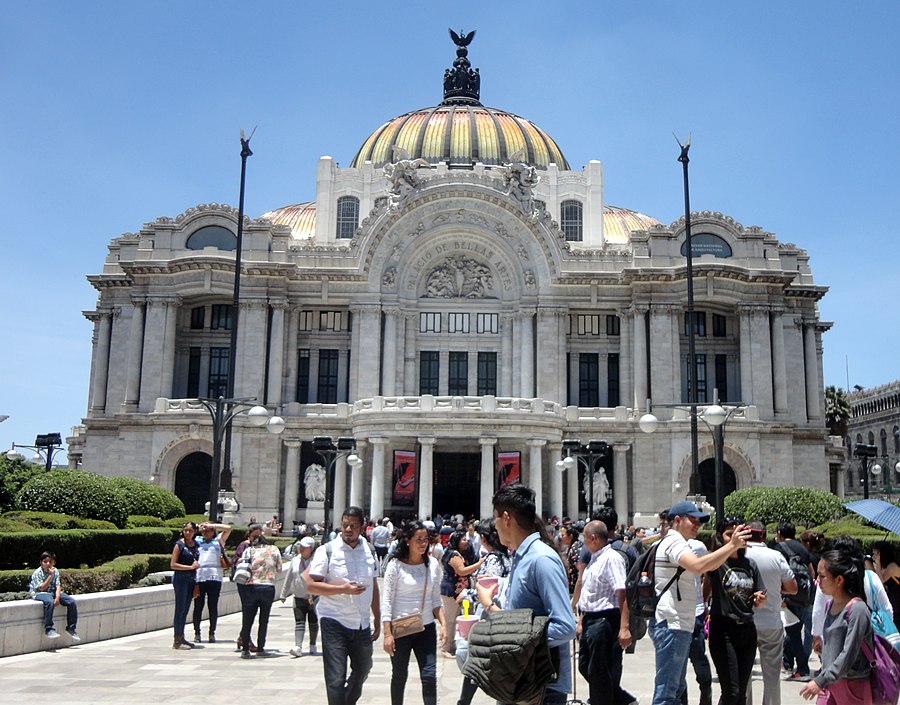
There are a lot of things which are worth exploring in this beautiful country . Exploring something new in a city or the state you are visiting helps you learn about the place. It also helps a person mentally because there are many hidden things; exploring and finding them can give you a sense of achievement. It also motivates a person and helps in giving them the energy to go on exploring. There are many historical and ancient sites to explore, like museums where you can learn about historical cultures, richness, and many other historical elements. Other than this, there are national parks where you can explore flora and fauna and can enjoy among them. Beaches are best to explore marine life and other aquatic creatures like crabs, jellyfish, whales, fishes, turtles, etc.
There are many city parks built in each of the Mexican cities. They have many different unique features, which makes them popular among the Mexican people. These parks are great for morning or evening walks as they provide fresh winds and the right environment . Other than this, you can also explore the greenery of those parks. The parks are free for public use, but you might be charged for parking. You can reach these city parks by public transport. In some of the gardens, there are badminton, basketball, and tennis courts built for sports. These parks can also serve as the right picnic spot or if you want to spend some time with your partner, parents, or family. There are vendors available outside the parks for beverages and snacks. In some of the gardens, there are public canteens for meals or snacks. These parks have a spotless environment because the cleaning staff is very regular in maintaining it. Other than this, the locals feel their responsibility to keep these parks clean; therefore, sometimes, they are also seen cleaning the parks. You must maintain that cleanliness, and you must not harm any tree, flowers, or plants of these parks.
- Parque México , Condesa
- Parque Hundido , ry clean en Insurgentes
- Parque Alameda , Centro Histórico
- Parque Lincoln , Polanco
- Parque Masayoshi (La Pagoda) , Coyoacán

National Parks
There is at least one Mexican national park in each city; therefore, there are many national parks in the entire country. National parks are for conserving wildlife and nature; consequently, you can see many species of different types of plants. Along with various plant species, there are many types of animals and their species present in this park. There are many tours that a driver and a guide accompanies so that you can gain knowledge from experts who know those parks deeply. There is a camping tour available in most gardens that allow enjoying in the national park at night with various people. You can also make friends there if you are traveling alone. National parks often serve as a good vacation trip with friends or family. National parks help get in-depth knowledge of various plants and animal species and know how to conserve nature and its elements. There are many representations and short clips of plants and animals' lifecycle, including their food, source of food, and many other things. The best and the most popular national parks are listed below and in which cities they are present.
- Sumidero Canyon National Park , Chiapas
- Grutas de Cacahuamilpa National Park , Guerrero
- Islas Marietas National Park , Nayarit
- Basaseachic Falls National Park , Chihuahua
- Iztaccíhuatl-Popocatépetl National Park , Puebla
- Lagunas de Montebello National Park , Chiapas
- Nevado de Toluca National Park , State of Mexico
- Arrecifes de Cozumel National Park , Quintana Roo
- Palenque National Park , Chiapas
- Cumbres de Monterrey National Park , Monterrey
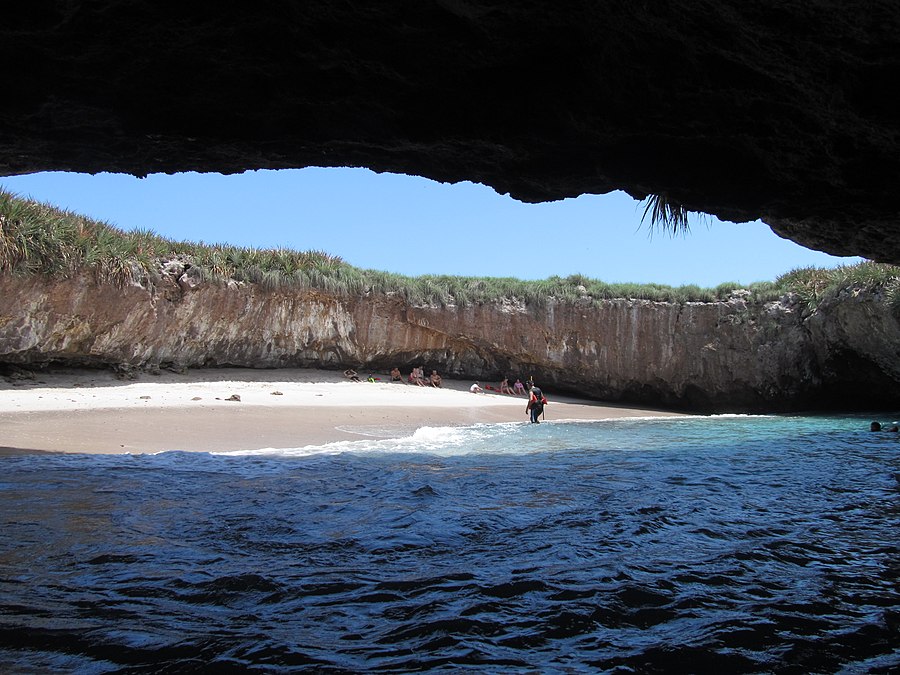
Beaches play an essential role in providing relaxation. A beach is a place that is close to a water body. Most of the beaches consist of sand. Beaches have many benefits. Walking on the beach is more beneficial than walking on a concrete track. After all, when you step on the sand, you make many efforts because your legs pierce in the sand. Walking on the beach can reduce your stress and calm your mind because the cool sea breeze provides positive energy. You can discover your creativity skills by making new drawings or building a sandcastle of many shapes. Sunbathing on a beach can help you get ample vitamin D, which can cure many skin-related diseases. However, you must note that too much sunbathing can damage the skin by causing sunburn; therefore, you must apply some sunscreen, which will help you protect yourself from the sun. There are many beaches in this country. You can also find some beachside bars and restaurants to enjoy different dishes and beverages along with the sunset and waves.
- Acapulco , Guerrero
- Balandra Beach , La Paz
- Sayulita , Riviera Nayarit
- Medano Beach , Cabo San Lucas
- Isla Holbox , Yucatan Peninsula
- Puerto Vallarta Beach , Jalisco
- Zipolite Beach , Oaxaca
- Yelapa Beach , Jalisco
- Playa Las Gatas , Zihuatanejo

Landmarks are extremely important for a country. It serves as a major tourist attraction of the town. It also serves as a substitute for a particular place you want to visit. These landmarks include various monuments built in ancient times, which reflects the richness of ancient architecture. Other than this, some cities have evidence of dating back to ancient times. There are pyramids in this country which serves as the main tourist attraction of cities. Most of the revenue comes from these landmarks. Some landmarks are human-made, and some are natural. There is a butterfly biosphere where there are many species of butterfly which are for the exhibition. These landmarks can be reached easily as most of them have public transport services.
- Ángel de la Independencia , Mexico City
- Monte Alban , Oax
- San Miguel de Allende , Guanajuanto
- Monarch Butterfly Biosphere Reserve , Michoacan
- Great Pyramid of Cholula , Puebla
- Uxmal , Yucatan
- Zipolite , Oaxaca
- El Tajin , Veracruz
- Bonampak Murals , Chiapas
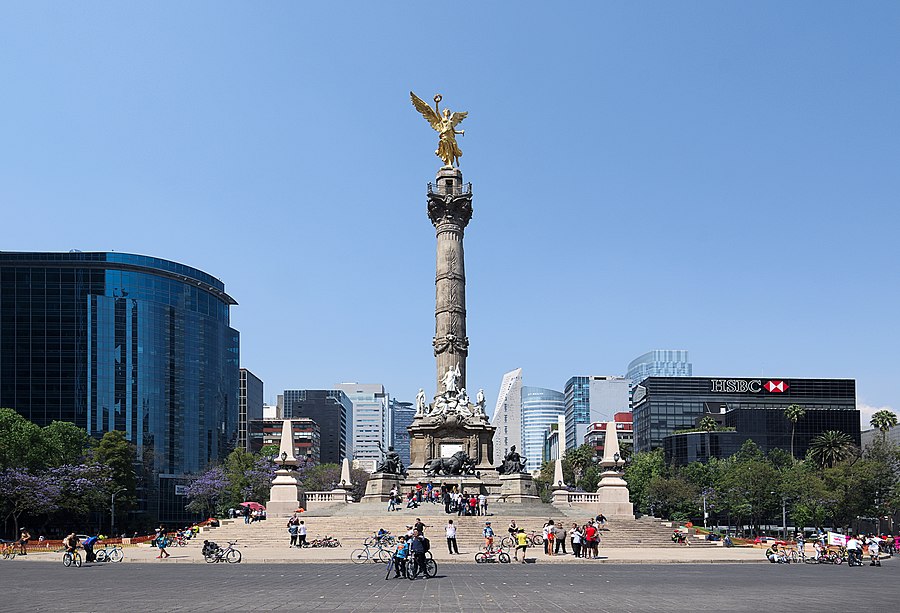
Museums are the place that many people want to visit. It helps us to learn about various things of different categories in-depth. Museums are known for preserving history, and Mexico is a place with many historical artifacts, monuments, arts, incidents, and many more. There are museums for ancient literature which have most of Spanish history. Museums are a fun way of learning as a visual image helps us understand better than text. You can comfortably spend a day in a museum. Some of the museums have amusement parks with few rides for children to enjoy there.
- National Museum of Death , Aguascalientes
- Tijuana Cultural Center , Tijuana
- Tijuana Wax Museum , Tijuana
- Tijuana Trompo Museum , Tijuana
- Museum of San Miguel Fort , Campeche
- Museum of Mayan Medicine , Chiapas

- Chilaquiles : It is a trendy dish in Mexico, which is a typical breakfast dish amongst the Mexicans. The base ingredient of this dish is corn tortillas. After cutting the fried tortillas, they either use green or red salsa as the topping. Then they put pulled chicken or scrambled eggs on top of the salsa topping. At last, they garnish the dish with cream or cheese.
- Pozole : It is a soup, both vegetarian and non-vegetarian ingredients and is different from other soups. You can also get vegetarian soups under the name pozole. The vegetarian version has plenty of spices and herbs. The base ingredient is hominy corn. The non-vegetarian version consists of chicken and pork. Onion, lime, lettuce, radish, and chili are the garnishes for the soup. The traditional taste comes from brewing it for hours on low flame.
- Tostadas : This Spanish word's literal meaning is 'toasted.' It is a corn tortilla that they fry in boiling oil till they become golden and crunchy. They come in two versions. In the first version, they only serve fried tortillas, while in the second version, they top the tortillas with refried beans, seafood, cooked meat, cheese, and ceviche.
- Chiles en Nogada : It is one of the lost patriotic dishes of Mexico. It is so because this dish contains all the three colors which are there on the flag of Mexico. Pablanochilies represent the green color as they have a filling with a mixture made with fruits, spices, and meat. The pomegranate seeds represent the red color, while the cream sauce with a base of walnut represents the white color of the flag. It is a must-try dish in Mexico.
- Enchiladas : It is a historical dish that dates back in history as old as the Mayan Times. The base ingredient of this dish is the corn tortilla. Traditionally this dish uses corn tortillas, but now the use of flour tortillas is also becoming popular. Cheese, seafood, meat, vegetables, and beans are the filling of these tortillas. Sometimes, the locals use all of these ingredients as fillings, while it is the customer's choice. After stuffing, they either cover or dip the tortillas with chili sauce.

- Paloma : It is one of the cocktails which is highly popular in Mexico. It is simple, as well as refreshing. The base ingredient is tequila, consisting of juice or grape soda, lime, and tequila Blanco. Spicy Mexican dishes often accompany the drink.
- Kahlua : It is a liqueur that has a flavor similar to coffee. The base ingredient of this drink is the Arabica variety of coffee beans. Kahlua also serves as the base ingredient in many famous cocktails: B-52 or the White Russian. The people of Mexico especially love this drink.
- Margarita : This drink is famous all over the world, but it originated in Mexico. The base ingredient of a margarita is tequila. The traditional method of making a margarita is by mixing triple sec, lime juice or tequila, and salt on the glass's rim. It comes in two types of servings; frozen or on the rocks. It also has many variations or flavors. Some of them are classic; strawberry, mango, and many more.
- Horchata : This drink is also famous in many parts of the world, but Mexican horchata has a variation that makes it stand out from other horchatas available. Mexican horchata has enormous popularity globally. The two main ingredients are cinnamon and rice. If we go to the texture, the drink is creamy and sweet. Traditionally, the locals either drink it cold or with some added sugar for sweetness.
- Mexican Coke : Coke is a globally available drink, and it is easy for everyone to presume that coke has the same taste globally. But, there is a difference in Mexican coke because of its different production methods. The difference is that the sweet substance used to sweeten Mexican coke is cane sugar. Initially, corn syrup was the substance used to enhance it, but the authorities stopped its use. Due to sugar cane, the coke gets a naturally sweet taste that is void of artificial sweeteners.
Mexico's tap water is not fit for drinking as it has mini pollutants that contaminate water and makes it unfit for drinking . On reading the stats, which showed that 96% of this country's surface water has different impurities in it. Water pollution in the city is very high. The main reason behind it is the chemical discharged from the industries into lakes and rivers without filtering . On getting mixed with different water bodies, it pollutes it, making it unfit for drinking purposes. Mexico's government is very lenient regarding pollutions; therefore, many industries escape from penalties and legal procedures. Even the wastewater of the municipal area is not treated correctly. This country's primary water source is surface and groundwater, which makes 457 million cubic meters. Seven rivers flow across this country, providing enough water to Mexico.
Among these seven rivers, two rivers are the largest on the Pacific and Atlantic coast. This country's precipitation is up to 773 meters, out of which 77% of these falls between June and October. It cannot be a reliable source of water as rainfall can vary from month to month. So the tap water is not fit for drinking. Therefore, you can buy plastic water bottles readily available in the entire country, but using these water bottles will increase your plastic consumption, which is also harmful to nature. Therefore, you must not use a single water bottle made up of plastic . Instead, you can buy a refillable bottle and refill it whenever you need it. If you live in an apartment where you have to do your things independently, you can contact the nearest water dealer to get a filtered water supply.
Activities involved in various tasks help create a memory and gain new experiences from different activities. There are activities related to multiple things like discovering new species in national parks. You can also visit museums to enjoy various ancient arts, literature, music and many more. Adventure lovers can perform many water sports like discovering marine life through snorkeling, scuba diving, and many others.
- Visit Museums
- Visit ancient pyramids
- Visit monuments
- Visit National Parks
- Perform water sports
- Safari tour
Accommodation
As Mexico is a tourist country, there are many accommodation options available in each city. Some hotels provide luxury rooms and top-class facilities at high rates. Therefore, we can say that different accommodation options are available. The pricing depends on the facilities they offer and where they are present. Other than this, they also depend on the cost or the rent they charge. People who want luxurious facilities can go to booking resorts which offer excellent facilities at a high price. Accommodation in this country comprises four major categories: green hotels, camping areas, hostels, guesthouses, and apartments. These different categories are best for people in different situations.
Green Hotels
Green hotels are different from regular hotels as they have a certification of greenery by the state or central government or any regulatory body working under the government . These hotels adopt every eco-friendly measure they can. These hotels generate electricity with the help of renewable energy sources like wind and solar power. These hotels are not easy to maintain; therefore, they enjoy several privileges from the Mexican government. These restaurants serve organic dishes made of ingredients untouched by any chemical pesticides for fertilizer. These dishes have many health benefits that do not harm the digestive system. Other than this, Green hotels maintain their farms or set-up deals with local farmers for getting organic and fresh items. Bedsheets and towels made up of natural fabrics, including silk, linen, cotton, and many others, are present in such hotels . Shampoo and soap have organic and herbal compounds. These types of hotels have limited use of plastic.
Hostels and Guest Houses
If you are a solo traveler and are in search of a pocket-friendly accommodation option with only essential services provided, then you can check in a hostel. Most hostels in Mexico offer shared rooms with another partner; therefore, you can make new friends in the hostel. You can even go out exploring Mexico together as this will not make you feel lonely. Sometimes it happens that any traveler of a different country comes and accommodates in the hostel. It can help you with learning new languages and interacting with people. Some of the hostels provide a one-time meal as a complementary service. Hostel rooms can be fun if you come here with friends. Some hostel closes by 8 P: M at night; therefore, before checking in, you must confirm the rules and regulations of the hostels.
Guesthouses are also excellent options for people traveling with their loved ones or in a group. You will find that these guesthouses come in different price ranges. They are fully-equipped with all types of electronics, furniture, appliances, and other items that a person might need. Unlike hostels, these guesthouses will provide you with more privacy and an independent environment.
An apartment is a flat which is available for sale. There are some apartments which are available in each city of this country. These are semi-furnished apartments with a modular kitchen where you can make your food rather than bringing from outside without any guarantee of quality and hygiene. Apartments will give you private space to spend with your loved ones together without any disturbance. There are some apartments built near the beaches or lakes, and you must try getting a top-floor flat, as it will give a scenic view of sunset and sunrise every day which you can enjoy with a morning coffee, tea or evening beer. The chilly winds from the sea will always keep your apartment fresh. Apartments are best when traveling in a group like family, friends, or partner for a longer duration. Apartments also provide enough security as most of the building has CCTV cameras and guards. There are many side facilities like a fitness studio, yoga studio, indoor sports area, etc., in apartment complexes and buildings. Some of the luxury apartments also offer a hygienic swimming pool as the staff cleans it regularly.
Couchsurfing
Couchsurfing means to stay at someone's house without any charge, but in exchange, you have to help them in their daily chores. There are many hosts in this country as most people live alone and are always searching for any person who can live with them. You can also make friends who may help you reveal many things about the city you visit. Crime rates in Mexico are very high; it is the reason why Couchsurfing may not be a good option for a tourist. There are chances that the host is part of a mob or a gang. It may cause you a lot of trouble as these people may cause you harm. Before setting a deal with a Couchsurfing host, you must read the reviews of previous Couchsurfers. It will help you find if living in a person's home is safe or not. Also, ensure that you keep your valuables safe, as there are chances that the host or other tourists steal them.
Camping in various places in this country is available, but the availability of camping grounds is less because many people are trying this . However, there are still camping sites open in major cities of this country. The camping area is often green, which makes it more adventurous to camp. This type of accommodation is not entirely reliable because you will quickly get bored with it. It is suitable for trying it for 3 to 4 days or a week maximum. You can even make friends with other people who come to camp. For winters, rather than using a bonfire, you should use an electric heater, which operates on batteries. It is because bonfire causes many carbon emissions in the form of smoke. You must be aware of many insects that can cause irritation or itching to your skin in summers; therefore, you must carry proper precautions with you while camping.

- Acapulco - A sophisticated urban beach setting known for its top-notch nightlife, elegant dining, and nightmarish traffic. Many of the older (pre-1990s) concrete structures have suffered tropical decay.
- Cabo San Lucas - A resort city on the southern tip of Mexico’s Baja California peninsula, is known for its beaches, water-based activities and nightlife.
- Cancun - One of the worlds most popular and famous beaches, known for its clear Caribbean waters, its lively party atmosphere, and its wealth of recreational facilities. During Spring Break it is noted for drinking, sunburns, and debauchery.
- Guadalajara - A traditional city, capital of Jalisco state, and the home of mariachi music and tequila. Guadalajara is blessed with perpetual spring weather, and its colonial downtown is graceful and sophisticated.
- Mazatlan - Lively Pacific coast town, Mazatlan is a shipping port, a transportation hub with ferries to Baja California, and a beach resort destination with miles of sandy shore. It is a popular Spring Break destination due to its variety of affordable lodging options. Mazatlan's Carnival is the oldest in Mexico and one of the largest in the world.
- Mexico City - Capital of the Republic, one of the three largest cities in the world, and a sophisticated urban hub with a 700-year history. In Mexico City, you will find everything from parks, Aztec ruins, colonial architecture, museums, to nightlife and shopping.
- Monterrey - A large modern city that is the commercial and industrial hub of Northern Mexico. Monterrey enjoys a dry, mountainous setting and is known for its high-quality educational and transportation infrastructure.
- Playa del Carmen - A popular tourist destination. Cancun's "little sister."
- Puerto Vallarta - A resort town on Mexico’s Pacific coast, known for its beaches, water sports and robust nightlife scene.
- San Luis Potosi - Located in central Mexico, a colonial city that was once an important silver producer, but today, relies on manufacturing for its economic base.
- Taxco - In central Mexico west of Cuernavaca, this nice steep mountain town was once a major silver producer, and now has a strong place in the trade of decorative silver, from cheap fittings to the most elegant jewelry and elaborate castings.
- Tijuana - Mexico's busiest border crossing for pedestrians and private vehicles, and a long-time bargain Mecca for southern Californians due to its proximity with San Diego .
Getting There and Moving Around
There are many ways of traveling to Mexico . These ways are both direct and indirect. You will find that they are not only affordable but efficient in reaching your destination on time. The most straightforward way to get to Mexico is by taking a flight to any city in the country. There are many airports present in the country, and they have connecting routes to different cities of the world. Since Mexico is a North American country, roadways are also available for low-budgeted travelers. You will need to show your Visa or passport at the border. If you are going to try indirect ways like long-distance buses, rental cars, trains, boats, etc., you need to be careful as the crime rates are very high, and local thugs and mafia members often create problems for both locals and tourists.
For moving around Mexico, there are different modes of transports available. These transports include bicycles, rental cars, public buses, metro trains, ferries, and domestic flights. You will find that these options are very cheap but may not be suitable all the time . Instead of going for motorized vehicles, you should opt for electric-operated cars and bikes. It is because these vehicles don't cause any pollution.
Mexico is well-connected to all major cities of the world. Many airlines have regular flights to Mexico City . Therefore, we can say that the air route and connections are quite good. The various airports in Mexico provide both national and international flights. These flights are affordable, and you will get excellent flight services. These airports have shuttle buses that can help you reach your hotel or the city center. While booking a flight to Mexico, ensure that you book a flight that directly takes you to your destination. Do not prefer a transfer flight unless there is no option left. The air pollution caused by the running of an aircraft from one city to another city is more than the total breakdown from motorized-cars. It is the reason why anyone should prefer direct flights. Transfer flights usually cause more air pollution as they travel to different destinations before reaching the final goal. Also, transfer flights may cause you many issues such as time waste, delay in flights, wrong seat booking, etc.

There are different types of buses that run inside and outside the Mexican border. There are public buses, private buses, mini-buses, airport shuttle buses, tour buses, etc. You will find that these buses are so efficient that they can meet all the tourist requirements. If you want to reach Mexico, then long-distance buses are available from any city in the United States. These long-distance buses are air-conditioned and well-furnished to provide comfort and convenience to the travelers. They run at high-speed, and the chances of accidents are meager, as these buses' drivers are highly professional and experienced. Then there are public and private buses. These buses offer services inside the country only. These buses are great for traveling to different cities or states at affordable prices. Another type of bus that runs in most cities is tour buses. These buses are for tourists as they cover all tourist spots in a city like museums, monuments, parks, landmarks, cafes, restaurants, and even hotels. These buses come with a driver and a multilingual guide and efficiently provide an excellent Mexican experience to the tourists without overcharging them.

Like most cities, trains stopped working in Mexico in the mid of the 20th century. You will find that presently freight, short line, and passenger rail lines are present in Mexico . These trains have limited reach but are efficient in reaching different cities in Mexico. The San Diego Trolley is one railway service that runs from San Diego 's downtown to the California -Baja California border. It is useful for reaching Mexico as it is safer than roadways. You will find that most locals depend on these trains to travel to other cities, but not in a town. The Mexican government plans to establish new high-speed trains and other rail connections, but the president and other authorities often cancel them. Therefore, trains are not suitable for moving around a city; instead, they will only help you reach some towns.
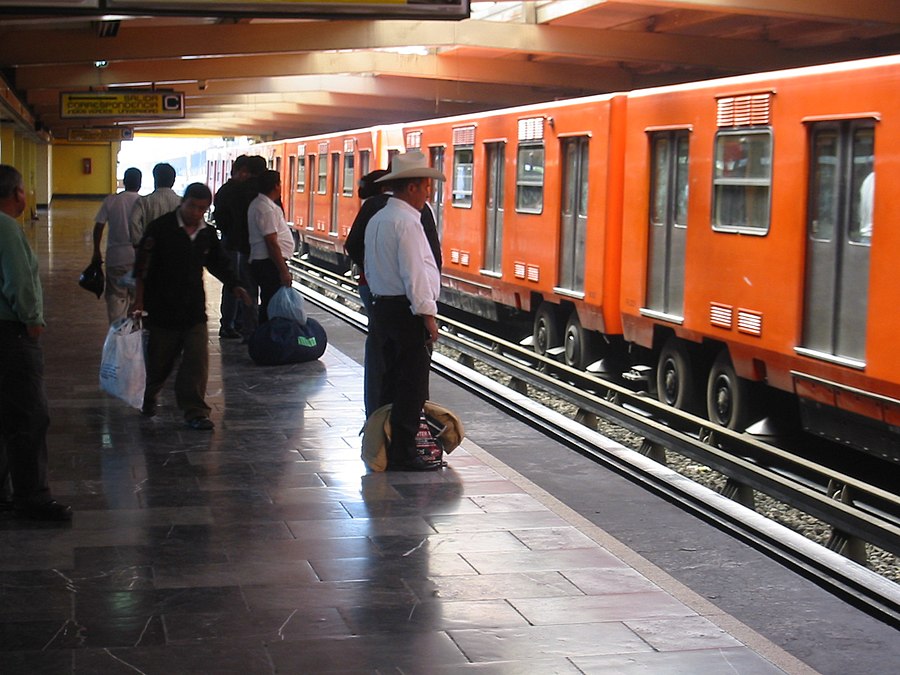
Hitchhiking
Hitchhiking is possible in Mexico, but the one reason that it is not a preferred choice of tourists is the crime rates . Because of the high crime rates, mafia activities, the locals and tourists avoid asking for rides from strangers. Even many locals don't stop for any unknown person on the highway or roads. Therefore, hitchhiking is a big challenge. Some locals will help you out, but the chances of meeting such people are relatively low. Another challenge, while hitchhiking is the language barrier. Since most of the people speak Spanish, they won't understand English properly. It would be best if you keep a translating tool like Google translator or other applications with you. You can also opt to learn some Spanish phrases before visiting the country. The best chances of hitchhiking are with buses, trucks, and other heavy vehicles. But most buses or public vehicles will demand some money in exchange after dropping you at your destination. Therefore, ensure that you make it clear to the driver that you have no money. Some drivers will not help you, but they will provide you with some cash or food you can use to reach your destination.
Other ways for reaching and moving around Mexico include rental car services like Uber and other private companies . These companies often overcharge tourists , so they must not get trapped in their trap. You must prefer a taxi booking app to avoid any inconvenience. Rental cars are not the best choice for traveling as they are usually petrol or diesel-operated. These fossil fuels emit harmful greenhouse gases that make the air quality poor. Therefore, you must not use such rental car services unless they are electric-operated ones. The electronic rental cars are better choices as they run on a widely available renewable energy source; electricity. These cars are cheaper and more efficient in reaching your destination. Ferries, cruise ships, and boats are other options for getting to Mexico and move around the country, but they operated on selected water bodies. The chances of these water transports being illegal are higher. Therefore, you must rely on roadways, railways, and airways to reach and move around in Mexico.
Sustainable Shopping
Sustainable shopping is present in Mexico as the communities are not well-developed and often rely only on available items . There are many trade restrictions from the Mexican border to other countries; therefore, sustainable shopping is becoming popular. You will find that most urban areas like Mexico City have more international stores like Gucci, Prada, and other brands. The other rural and town areas are the places where sustainable shopping is widely popular . Its popularity is that the locals prefer using hand-made items and other locally available products that support other people of their communities.
On the other hand, the urban areas offer some sustainable shopping places such as food markets, flea markets, eco-fashion shops, and second-hand shops. These shops are widely popular as the locals are from low-income groups and can't always afford every brand new item. These places are run by local farmers, hawkers, gardeners, bakers, artisans, fishers, and producers . Therefore, the pricing of the items in these places is reasonable.
The food markets operate on specific days of the week only. Over-fishing is becoming quite common globally, and by providing fresh produce once or twice a week, the over-fishing problem lessens. The food markets also have local food stall vendors, gardeners, bakers, and farmers that sell fresh organic items . The flea markets are another common type where locals sell second-hand items at cheap and reasonable rates. These markets also consist of some street food stalls. The second-hand shops and eco-fashion stores are also an excellent choice for finding cheap items for your stay in Mexico. These places are comparatively better places to shop for items than branded stores as they will help you understand the local culture, traditions, and livelihood .
Recycling is available in Mexico . You will find that although the government is lenient in laws relating to pollution and the environment, the locals find it their responsibility to reduce, recycle, and reuse their waste. You will find that there are some recycling units set up in different cities and regions in Mexico. These places are great for finding some cheap and recycled items. Most Mexican people don't recycle their waste, so the landfills are increasing every day. Some volunteering organizations and some cultural groups present in Mexico try their best to make the locals and the tourists aware of the benefits of recycling. The pollution problems are higher in urban areas as the residents of such sites are not responsible and often cause a lot of harm to their environment . You will find that smaller towns and villages are not as tricky as the locals prefer using sustainable sources. Also, they limited supply to products, so they try their best to make the best out of their money. As a tourist, you must try your best to reduce your plastic usage and prefer recycled items. Doing so will help you keep your carbon footprint minimal.
Waste management in Mexico is not proper. You will find that the streets have waste littered over them . Mexico's government is also very lenient and doesn't put penalties or other restrictions on such actions. The Mexican people don't use proper disposal methods as there is a deficiency in the availability of garbage disposal containers. You will not find such boxes in every street, which is why the people often leave their trash on the streets hoping that the garbage truck drivers will pick it up. There are many mob activities present in Mexico. These gangs often cause trouble to the locals and the authority by spraying paint on walls, cars, and houses. They also throw out the trash from the dumpsters. Most locals don't speak against these gangsters as they live in fear of their lives. It is the reason why the standard of living in Mexico is low.
Work and Study Abroad
There are some excellent education and career opportunities in Mexico . You will find that these opportunities are higher in urban cities like Mexico City, Puebla, Guadalajara, and Guanajuato. These cities have some excellent educational institutes and organizations that are often open to foreigners. You will find that the competition is lower than other American institutes, and the chances of getting admission are higher for an international student. The organizations, on the other hand, often look for people to handle their foreign delegates. These organizations offer jobs to tourists that have good communication skills and can speak different languages . To get admission to the educational institutes, you will need to register yourself to see if you can meet all the eligibility criteria. Since there are many historic sites and monuments present in Mexico, courses like history, archaeology, paleontology, and other sciences are good options . You will get to explore historical places and enhance your knowledge.
Exchange Student
Some educational institutes have a tie-up with a reputed foreign university. These universities help such institutes in gaining reputation and creating opportunities for the students . These Mexican institutes send some students who are useful in studies to their partnership university. These universities provide specific programs to such students. Another type of student exchange program that runs globally is also present in Mexico. The program helps students from different countries to study and explore a foreign country. Usually, this program facilitates its services to students that provide an excellent donation to them. You can directly get yourself register for it on the internet after fulfilling all the requirements. You will find some fantastic career opportunities in Mexico, but most of them are only in urban areas.
Au pairing is the right way to find accommodation in a foreign city and get paid for taking care of the couple's house and children. Usually, women are the preferable choice, but men too are becoming good options for housekeepers. You can look for such families on the au pairing website, or you can ask the locals. Asking the locals is a better choice. While searching for such a job, you must present yourself as reliable, trustworthy, kind, and well-mannered. If the family finds you suspicious, they will not hire you. Most families take a lot of time before hiring an au pair as the crime rates are very high. Many criminals also try to fraud such families and cause them misfortune by stealing from them or kidnapping their children. Finding a family will be challenging, but it will all be worth it once you find one.

Volunteering
Volunteering activities are great ways to make a city or a country a better place. You will find that the locals often engage in volunteering activities to better live in their area. Various mob activities regularly occur, which destroys property, littering waste, and injury to the locals. It is the reason why many locals participate in volunteering activities to help out their neighbors. Many non-profit organizations and volunteering groups present in Mexico hold weekly or monthly events where locals and tourists can participate. These activities focus on protecting the environment, spreading awareness, helping local families, etc. They are very efficient in doing so, and by participating in their programs, you can become a responsible tourist. Participating in such volunteering activities will give a sense of satisfaction and happiness by helping out someone in need.
- Europe | List of Countries in Europe | List of Cities in Europe
- North America | List of Countries in North America | List of Cities in North America
- Asia | List of Countries in Asia | List of Cities in Asia
- South America | List of Countries in South America | List of Cities in South America
- Oceania | List of Countries in Oceania | List of Cities in Oceania
- Africa | List of Countries in Africa | List of Cities in Africa
- Countries in North America

Ecotourism in Mexico: 9 Sustainable Tours You’ll Love
By: Author Lora Pope
Posted on Published: November 29, 2022 - Last updated: July 7, 2023
This post may contain affiliate links. By clicking and making a purchase through the links, I earn a small commission at no extra cost to you. See my disclaimer for more information. This and display ads allow me to keep the site up to date and give back .
Want to fill your next trip to Mexico with tours and activities you can feel good about?
Ecotourism in Mexico is booming, and this list of socially responsible and sustainability-focused tour companies is the perfect place to start planning your trip.
Not only will you know that your money is supporting a plethora of good local causes and local families directly, but also that your travels will leave a positive footprint- something that hasn’t always been at the forefront of tourism in the past.
A Few Best Practices and Responsible Travel Tips
Before we look at some of the best responsible tours in Mexico, here are a few quick tips on how to be a more responsible traveler no matter where you go.
- Consider carbon offsetting your flight, or book with an airline that will carbon offset on your behalf
- Choose sustainable accommodation such as an eco-resort, or search for hotels with good sustainability initiatives such as plastic-free policies, recycling programs, low-energy appliances, etc.
- Consider animal welfare before booking tours/activities that involve animal interaction or entertainment
- Use reef-safe sunscreen
- Support local businesses over big chains
- Don’t take photos of locals without their expressed consent, and even then, only if you have established a connection with them. The locals are not scenery!
- Be respectful of local culture and customs.
- Search for tour companies with social/environmental impact initiatives (such as the ones on this list!)
- And last but certainly not least, take time to research how to travel more ethically.
Eco tours in Mexico
Eco colors tours.
What makes Eco Colors Tours a responsible choice?
- Small-group, limited travel to minimize the impact on natural areas
- Collaborations with WWF, SEMERNAT, Adventure Travel association, Ecotourism Society, and The Smithsonian School to create environmental protection plans
- Awareness campaigns about the ecosystems of Mexico and how to help rehabilitate them
A few of their best tours:
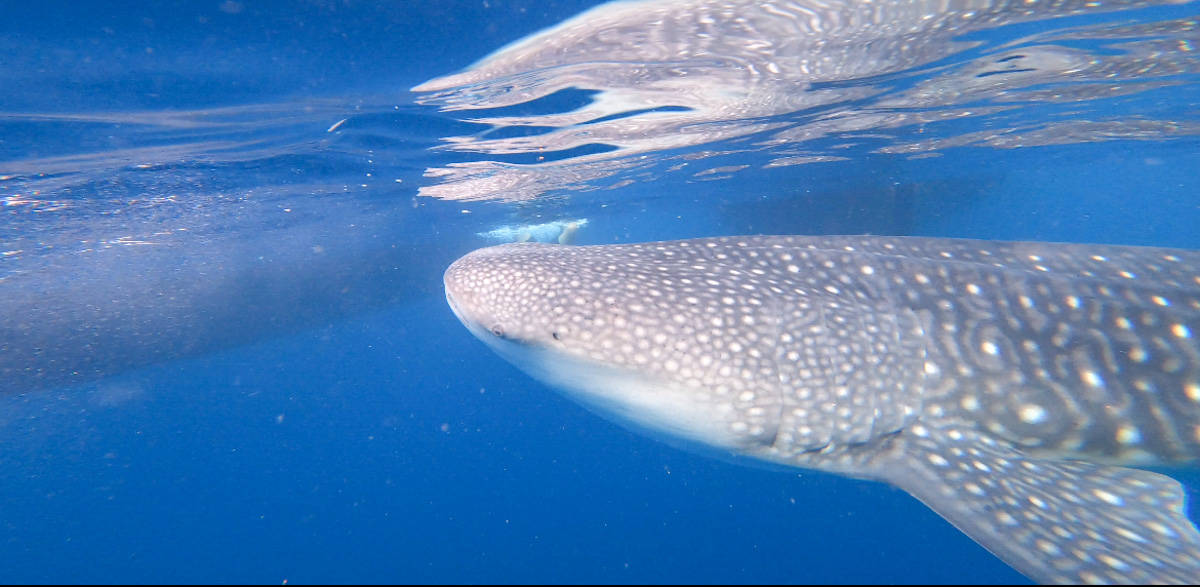
Whale Sharks Cancun Tour
- Length: 5-8 hours
- Cost: $165 pp.
I think we’ve all put snorkeling with the whale sharks tour on our travel bucket list for Mexico at one point or another, but when it comes to wild animal interactions and enjoying protected ecosystems, it’s of the utmost importance to choose an ethical tour company.
Thankfully, Eco Colors has one of the best whale shark tours around! Transportation, lunch, beverages, and snorkeling equipment are all included, and a percentage of your tour fee goes towards educational programs for children on the island of Isla Mujeres.
Temazcal Ceremony in Cancun
- Cost: $745 per couple.
This tour presents an opportunity to interact with the locals in a genuine and responsible way and participate in community-led cultural learning, but this day-long adventure also includes some quintessential Mexican experiences all under one tour umbrella.
You’ll learn about the construction of a traditional Mayan home, learn to make tortillas as they were made thousands of years ago, visit the circle of sea snails and enter a Temazcal with a local shaman.
At the end of the day, you’ll be treated to a visit to a secret cenote for a swim and a yummy gourmet dinner.
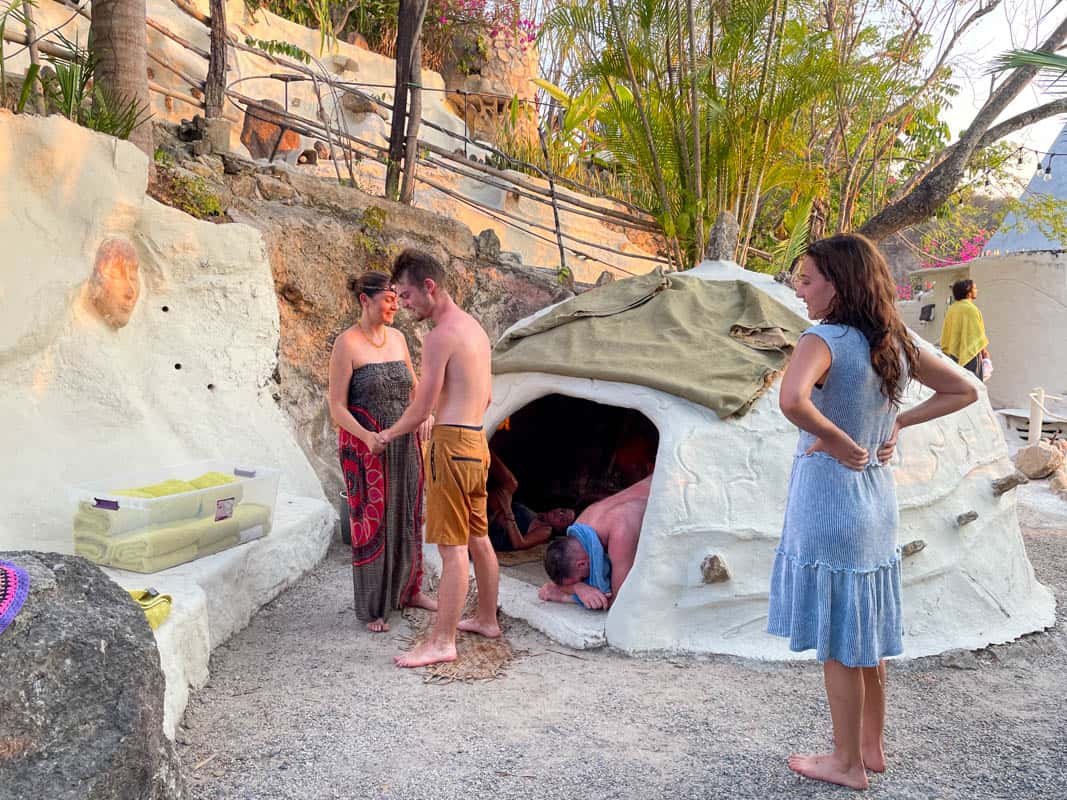
Univers Maya Yucatan
What makes Univers Maya Yucatan a responsible choice?
- “English for All” program supports free English language classes for local children
- Environmentally friendly approach to tourism
El Cielo and Cozumel
- Length: Half-day
- Cost: $70 pp.
Here’s an incredible aquatic destination in Mexico you may not have heard of yet. First, you’ll head to the oasis free-diving sites, Palancar and Columbia, at the Cozumel Reef Marine National Park.
This reserve still has a flourishing, colorful reef teeming with tropical species, but this is one of the least impressive stops of the day.
Next, you’ll head to El Cielo Reserve, which is a shallow diving site that’s home to thousands of giant starfish.
Finally, you’ll end your day with a visit to El Cielito, which is an ocean pool/sand bar known for being one of the best places to view rays.
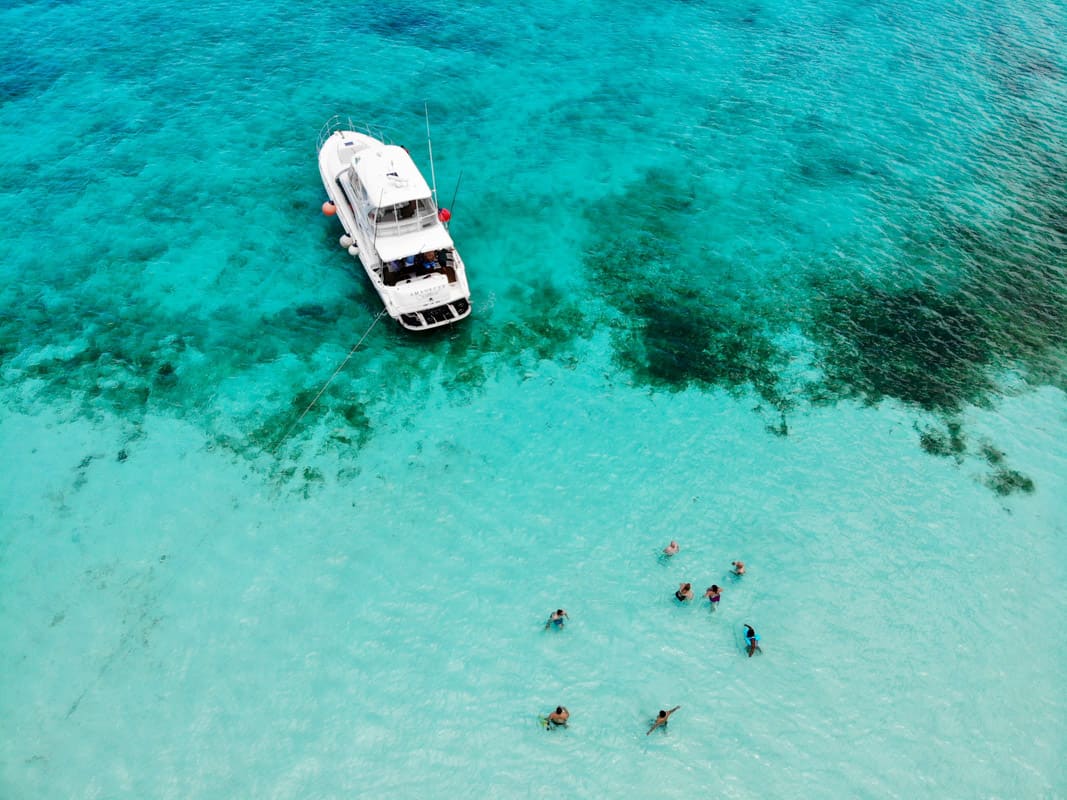
Sian Kaan Boat Safari
- Length: Full Day
- Cost: $160 pp.
Visit the infamous UNESCO Sian Kaan reserve with a company willing to go the extra mile. You’ll start off perusing the mangroves in search of manatees and crocodiles. Then, after a quick break for a buffet lunch, you’ll head out into the shallow seas for some dolphin and turtle watching.
Journey Mexico
What makes Journey Mexico a responsible choice?
- Works closely with local communities to support their businesses and encourage participation in cultural tourism in Mexico in a responsible way
- Financial contributions to several local environmental non-profits
- Works with the Global Sustainable Tourism Council to promote tourism as a catalyst for sustainable development.
Axolotls and Chinapas in Xochimilco
- Length: 6 hours
- Cost: Varies
My goodness, this is a Mexico City experience like nothing you’ve ever dreamed of. First thing in the morning, you’ll board a colorful gondola and cruise down the floating gardens of Xochimilco, birdwatching and learning all about the area’s unique history.
The best part of this tour? You’ll have the rare opportunity to learn about the conservation of the internet-famous Axolotls and potentially see one of these endangered beauties in their natural habitat. You’ll also be treated to a fabulous lunch made from produce grown right in the floating gardens.
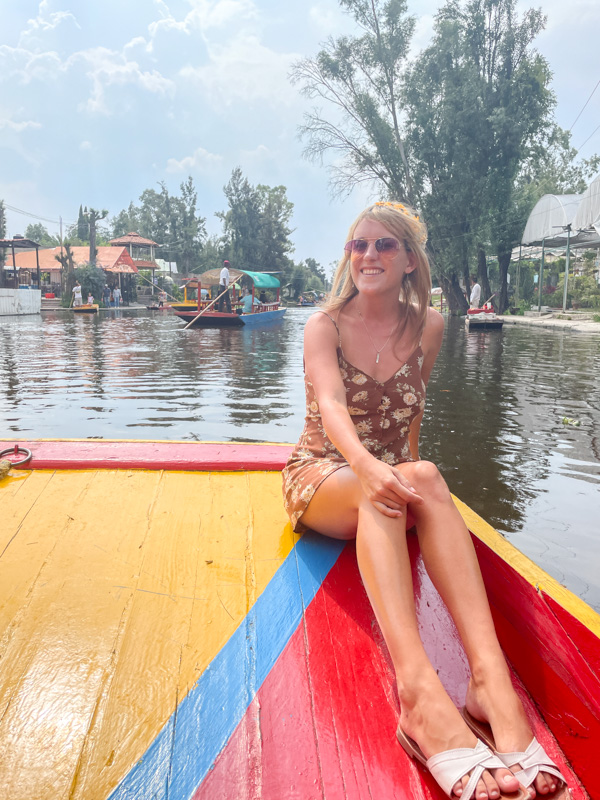
Hammocks Artisan’s Home Workshop in Tixkokob
Chances are, if you’ve been to Mexico before, you’ve seen the iconic hand-woven hammocks that grace the walls of every souvenir shop and thought about the possibility of bringing one home. This is actually one of the largest income generators for local artisans and families.
With this tour, you can learn the incredible techniques that go into creating these hammocks while visiting a family workshop, and if you’d like, you can even try your own hand at weaving!
Of course, in the end, you’ll have the option to bring home one of these masterpieces straight from the source and with an incredible travel story behind it.
Maya Ka’an
What makes Maya Ka’an a responsible choice?
- Certified under the Sustainability Requirements for Ecotourism in the municipality
- Strict adherence to biosphere reserve guidelines and additional sustainability efforts made to reduce waste and water consumption
- Works exclusively with local tour providers to keep profit within the community
Chewing Gum: A Mayan Legacy
- Length: —
Take an adventure through the Mayan jungle and visit a traditional chicle camp. Here, you’ll observe the ancient practice of extracting gum. If you’re lucky, you may even get to try some! Afterward, you’ll be treated to some refreshments and a boat tour around the Sian Kaan lagoon.
Kayaking in the Siijil Noh Ha Lagoon
On this tour, you’ll visit the criminally underrated Ejidal Reserve and spend the day enjoying the natural areas, both on dry land and in the water. You’ll have the opportunity to hike and search for wildlife, kayak the still lake, and hop on in for an afternoon swim. You’ll also be able to meander the onsite eco-museum and learn about the history and conservation needs in the area.
Rutopia
What makes Rutopia a responsible choice?
- United Nations and B-Corp sustainable business/social enterprise certified
- Contributions to local economic development programs and efforts to conserve local heritage sites
- Prohibits activities with captive animals or irresponsible volunteer projects with vulnerable communities
- NO commodification of culture-genuine interaction and learning with community partnerships only
- Anti-discrimination policy covering prejudice based on gender, sexual orientation, race, religion, cultural expression, or social class.
**All of Rutopia’s tours are fully customizable, multi-day itineraries developed to meet your needs by one of their travel experts. To learn more, visit their website here .
Banyan Tree Mayakoba
What makes Banyan Tree Mayakoba a responsible choice?
- Certified by Preferred by Nature, EarthCheck Gold, PROFEPA, and Distinctive S
- No single-use plastics allowed on-site or during excursions
- Local conservation initiatives including tree planting, beach cleanups, reef conservation, and sea turtle protection programs
- Community support including financial aid for education and small business startup training
- Duration: 2 hours
Especially great for couples, this fusion and local cuisine dinner cruise will take you down the canals and through the mangroves of the Mayakoba river on a traditional trajinera boat.
You can also opt to take this cruise at breakfast time to watch the sunrise, but the nighttime experience is so extraordinary that it’s the inspiration source of the name for this tour. “Ixchel” translates to the moon goddess.

What makes Vive Mar a responsible choice?
- Leader in the conservation of sea turtles and birds in Mexico
- Gives back to the community with environmental education
One of the most remarkable wildlife connections you can have is releasing baby sea turtles into the wild. With Vive Mar , you can partake in this experience in Puerto Escondido, one of Mexico’s most popular beach towns.
During the turtle nesting season, they invite visitors to come and partake in a sea turtle release. You’ll head out at sunset and release a turtle into the ocean, which instinctively know to go towards the sea. If you’re living in Mexico, you can also volunteer with them.
RED Travel Mexico
What makes RED Travel Mexico a responsible choice?
- Tourism for Tomorrow award, as well as recognition from National Geographic
- Partnership with
- Pioneers of Ecotourism in Mexico Oceanic Society Films to build awareness about ocean conservation efforts
The Original Gaspereno Mule Ride Adventure
- Duration: 6-8 hours
- Cost: $780 for 3 travelers, $145 per additional traveler (private tour)
Ever dreamed of living on a ranch or starring in a cowboy movie? Now’s your chance to make that dream a reality.
On this tour, you’ll take a 2-3 hour mule ride through the Sierra, looking over the deserts and the sea in the distance until you make your way to the Gaspereno Ranch. Once you’ve arrived, chef Ivan will prepare you a stunning farm-to-table meal.
Want to capture these memories forever? You can even add a private photographer o your experience or rent a go-pro so that you won’t have to miss a second, and you can relive this journey over and over.
Historical Mining Trail Hike
- Cost: $850 for 3 travelers, $140 per additional traveler (private tour)
Take a day-long guided hike through the gorgeous canyons of La Paz while learning about the local desert flora and the region’s rich mining history.
You’ll see the remnants of old mines, receive a personalized wood walking stick to take home with you, and chow down on a delicious chef-prepared lunch.
Wildlife Connections
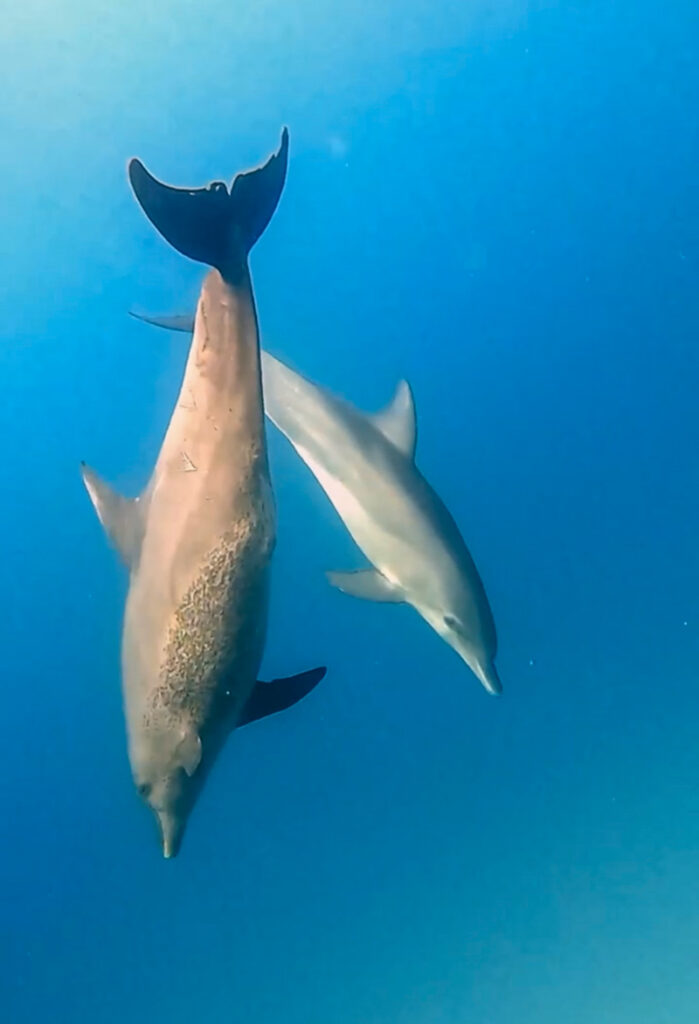
What makes wildlife connections a responsible choice?
- First company in Mexico to work with free wild dolphins
- Guides are professional biologists with master’s degrees in Marine Ecology
- Contribute to the research of marine conservation in Mexico
Swimming with free wild dolphins
There are many places in Puerto Vallarta that advertise swimming with dolphins, but as a responsible traveler, you should avoid supporting these.
Instead, try this tour with wildlife connections , where you’ll have the chance to swim with dolphins in the wild. You’ll head out on the boat with marine biologists who use a hydrophone to listen for dolphin communication.
Depending on their mood, you have a good chance of swimming with them! From December to March, you can also see humpback whales, giant mantas, marine turtles, and if you’re lucky – orcas!
Whale watching
Puerto Vallarta is one of the best places to go whale watching in Mexico! Every winter, thousands of humpback whales migrate to the Bay of Banderas.
While there are many whale-watching tours to choose from , the best ethical choice is with wildlife connections. You’ll be in the company of a biologist, participating in a research project that helps to protect them.
It’s great to see ecotourism in Mexico growing every year. I hope this post could inspire you to check out some of these eco tours in Mexico on your next trip!
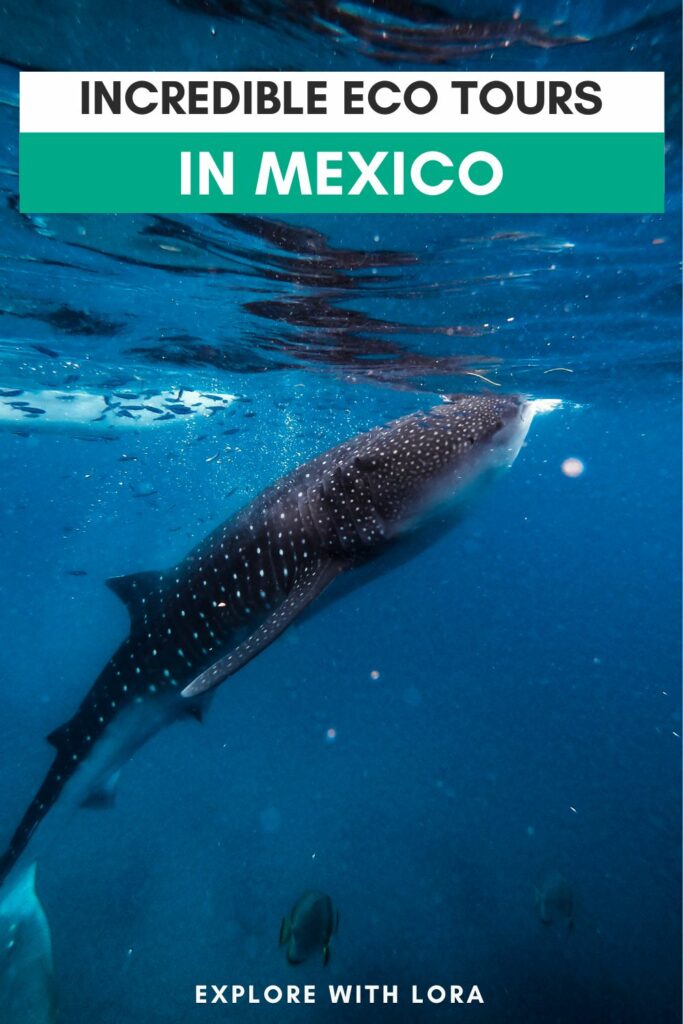
Lora is a full-time digital nomad on a quest to visit every country in the world and pet as many dogs as she can along the way. Over the last 15 years, she has traveled to 70+ countries and six continents solo. She currently calls Puerto Vallarta, Mexico home and enjoys ending each day with sunset and tacos on the beach.
View all posts
Leave a comment Cancel reply
Your email address will not be published. Required fields are marked *

Sustainable Travel in Mexico
In recent years, the importance of sustainable travel has gained significant momentum, with conscious travelers seeking experiences that not only satisfy their wanderlust but also contribute positively to the destinations they visit.
Mexico, with its rich cultural heritage, diverse landscapes, and vibrant communities, offers an array of opportunities for sustainable exploration. In this blog, we delve into the essence of sustainable travel in Mexico, highlighting eco-friendly accommodations, conservation initiatives, and responsible travel practices that allow you to experience the country’s beauty while making a positive impact.
What Makes Mexico So Special?
Mexico is a country with a unique blend of cultures, traditions, and natural wonders that make it truly special. Its vibrant and welcoming communities, colorful festivals, and rich artistic expressions showcase the warmth and hospitality of the Mexican people.
The country's cuisine is internationally acclaimed, with its bold flavors, diverse ingredients, and traditional techniques. From savoring street tacos to experiencing high-end Mexican gastronomy, the culinary scene in Mexico is a delight for food lovers.
Mexico's natural beauty is equally captivating. From the lush jungles of Chiapas to the dramatic canyons of Copper Canyon, the country's landscapes offer endless opportunities for exploration and adventure. The diverse marine life found in the Sea of Cortez and the Mesoamerican Barrier Reef is a paradise for snorkelers and scuba divers.
Why is Mexico famous for tourism?
Mexico is famous for tourism due to its incredible diversity and cultural richness. The country offers something for every type of traveler, whether it's exploring ancient Mayan ruins, relaxing on pristine beaches, or indulging in vibrant culinary experiences.
Mexico's historical sites, such as Chichen Itza and Teotihuacan, draw visitors from around the world who are captivated by the country's ancient civilizations. The colonial architecture of cities like Mexico City, Guanajuato, and Oaxaca provides a glimpse into Mexico's colonial past and architectural heritage.
Furthermore, Mexico's beautiful coastlines along the Riviera Maya, Los Cabos, and Puerto Vallarta offer idyllic beach destinations, where travelers can unwind and enjoy water sports in stunning natural surroundings.
What is Mexico doing for Sustainability?
Mexico recognizes the importance of sustainable tourism and has implemented various initiatives to protect its natural resources and cultural heritage. The Mexican government, in collaboration with local communities and organizations, has established protected areas, biosphere reserves, and national parks to preserve the country's diverse ecosystems. These efforts aim to promote sustainable development while safeguarding the natural beauty that attracts millions of visitors each year.
Furthermore, Mexico has implemented programs to support eco-friendly practices in the tourism industry. The Sustainable Tourism Certification Program (CST) ensures that hotels, tour operators, and other tourism-related businesses adhere to environmental, social, and cultural sustainability criteria. This certification helps travelers identify and choose accommodations and services that prioritize sustainability.
Does Mexico have Ecotourism?
Yes, Mexico is renowned for its ecotourism opportunities. With its vast biodiversity, Mexico offers incredible natural landscapes that are perfect for eco-conscious travelers. From exploring the stunning cenotes of the Yucatan Peninsula to witnessing the monarch butterfly migration in Michoacán, there are countless ecotourism experiences to enjoy.
Mexico's ecotourism destinations often prioritize conservation and responsible tourism practices. For example, in the biosphere reserve of Sian Ka'an, visitors can take guided tours that educate them about the importance of preserving the area's fragile ecosystems. Similarly, in the Baja California Peninsula, visitors can engage in responsible whale-watching tours that contribute to scientific research and conservation efforts.
Regenerative Travel in Mexico
Regenerative travel goes beyond sustainability by aiming to leave a positive impact on the environment, local communities, and cultures. Mexico offers several regenerative travel examples, including:
- Biosphere Reserves: Explore biosphere reserves such as Sian Ka'an in Quintana Roo and Sierra Gorda in Queretaro. These protected areas not only promote conservation but also actively involve local communities in sustainable development initiatives.
- Community-led Conservation: Support community-led conservation efforts such as the Ejido Verde project in Chiapas, which focuses on reforestation, carbon sequestration, and the sustainable management of forests. By participating in these initiatives, you contribute to the restoration of ecosystems and the empowerment of local communities.
- Agave-based Sustainable Practices: Learn about agave-based sustainable practices in regions like Tequila, Jalisco, and Oaxaca. These practices emphasize organic farming, water conservation, and the preservation of traditional production methods, ensuring the long-term sustainability of agave-based industries.
- Coastal Protection Programs: Engage in coastal protection programs, such as the sea turtle conservation efforts in Riviera Nayarit or the coral reef restoration projects in Cozumel. By supporting these initiatives, you contribute to the preservation of marine ecosystems and the protection of endangered species.
1. Exploring natural wonders
Mexico boasts incredible natural landscapes, from lush rainforests to pristine coastlines and enchanting cenotes. Embrace sustainable adventure by exploring protected areas and national parks that promote conservation and biodiversity. Opt for responsible tour operators who prioritize ecological preservation, minimize disturbance to wildlife, and educate visitors on the importance of environmental stewardship.
2. Supporting Local Communities
Immerse yourself in the vibrant local culture and support communities by engaging in responsible tourism activities. Seek out community-based initiatives that provide authentic experiences while directly benefiting local residents. This could include participating in cultural exchanges, supporting local artisans and businesses, or volunteering for community development projects. By engaging with locals and respecting their traditions, you can forge meaningful connections and contribute to sustainable socio-economic growth.
Mia Bacalar
A sustainable paradise, Mia Bacalar is the best of Mexican culture, gastronomy and warmth, surrounded by natural wonders, to enjoy every second of your stay. It is one of the most ecological, private and luxurious hotels in Bacalar. They are devoted to the regeneration of the environment and have several initiatives and programs that contribute to sustainable tourism.

Top 5 must visit destinations in Mexico
- Mexico City As the vibrant capital of Mexico, Mexico City is a bustling metropolis that seamlessly blends history, culture, and modernity. The city is home to iconic landmarks such as the majestic Palacio de Bellas Artes, the ancient Templo Mayor, and the lively Zocalo Square. Delve into Mexico's rich history by visiting the National Museum of Anthropology or exploring the UNESCO-listed historic center with its charming colonial architecture. Don't miss the opportunity to indulge in the city's culinary scene, which ranges from street food stalls to world-class restaurants.
- Oaxaca Oaxaca, known for its vibrant indigenous culture and picturesque landscapes, is a must-visit destination for eco-conscious travelers. Stroll through the charming streets of Oaxaca City, a UNESCO World Heritage site, and admire the colonial architecture while supporting local artisans by purchasing their handicrafts. Explore the surrounding countryside, including the Hierve el Agua petrified waterfall and the lush forests of the Sierra Norte, through eco-tours and community-led initiatives. Indulge in Oaxacan cuisine, famous for its diverse flavors and use of organic, locally-sourced ingredients.
- Cancun While Cancun is often associated with mass tourism and all-inclusive resorts, sustainable travelers can still enjoy this beautiful coastal destination responsibly. Opt for eco-friendly accommodations that prioritize sustainable practices, such as using renewable energy sources, promoting waste reduction, and supporting local conservation efforts. Explore the Mesoamerican Barrier Reef, the second-largest coral reef system in the world, through guided snorkeling and diving tours that emphasize conservation and education. Take a day trip to Isla Contoy, a protected nature reserve that showcases Mexico's incredible biodiversity.
- Tulum Tulum's idyllic beaches and ancient Mayan ruins have made it a favorite among eco-conscious travelers. Sustainable accommodations in Tulum range from eco-lodges to boutique hotels that strive to minimize their environmental impact. Discover the Sian Ka'an Biosphere Reserve, a UNESCO World Heritage site, where you can observe diverse wildlife, explore cenotes (natural sinkholes), and kayak through mangrove forests. Support sustainable dining by choosing farm-to-table restaurants that focus on local, organic ingredients. Explore the ancient ruins of Tulum and learn about the region's fascinating history.
- Cabo Cabo, situated at the tip of the Baja California Peninsula, offers a mix of stunning beaches, dramatic desert landscapes, and a burgeoning eco-tourism scene. Choose accommodations that follow sustainable practices, such as conserving water and energy, supporting local communities, and preserving the area's natural beauty. Embark on eco-friendly adventures, such as whale-watching tours that promote responsible wildlife observation, exploring the marine reserves of Cabo Pulmo, or hiking through the Sierra de la Laguna mountains. Enjoy fresh seafood sourced from local, sustainable fisheries.
Tips for travelers
Explore natural wonders, support local communities, embrace traditional cuisine, respect cultural heritage, choose eco-friendly accommodations, share this article, subscribe for updates, subscribe to our newsletter for more interesting articles about sustainable travel.
About the author

Palak Bothra
Palak studied Management and Entrepreneurship then continued to get her Master's Degree in Digital Marketing. A dedicated spirit to the start-up world, Palak has 4 years of experience in organic growth strategies.
Connect with our community
Join the Good.travel revolution

A Guide to Sustainable Travel in Quintana Roo: Eco-Friendly Adventures Await

Quintana Roo, a Mexican state nestled on the Yucatán Peninsula, beckons travelers with its turquoise waters, ancient Mayan ruins, and lush tropical jungles. But as eco-conscious adventurers, we must tread lightly and ensure that our exploration doesn’t disrupt the region’s delicate ecosystems. This comprehensive guide will help you embark on Sustainable Travel in Quintana Roo, from eco-friendly accommodations to low-impact activities, so you can indulge in the region’s magic without leaving a hefty carbon footprint.
Select Eco-Friendly Accommodations

Sustainable travel begins with where you lay your head. In Quintana Roo, eco-friendly accommodations range from off-the-grid eco-lodges to luxury resorts with sustainable practices. Here are a few options to consider:
Azulik Tulum : This adults-only resort is constructed using local materials, and its treehouse-like villas are nestled amid the jungle canopy. With solar panels, limited electricity, and a commitment to sustainable design, Azulik offers an immersive eco-experience.
Papaya Playa Project : This eco-conscious boutique hotel in Tulum focuses on sustainability and community. Its accommodations are made from locally sourced materials, and it supports various environmental initiatives, such as beach clean-ups and reforestation programs.
Sandos Caracol Eco Resort : Located in Playa del Carmen, this all-inclusive resort emphasizes environmental responsibility. Solar panels, water conservation efforts, and a nature reserve on the property contribute to its sustainable ethos.
Support Local Communities
One of the most effective ways to ensure sustainable travel is to engage with and support local businesses. From dining at family-owned restaurants to shopping at artisan markets, your support can make a significant impact on the region’s economy.
Le Zebra Beach Restaurant & Bar: Located in Tulum, this beachfront eatery focuses on sourcing ingredients from local farmers and fishermen, promoting sustainable cuisine and supporting the regional community.
Mercado 28: In Cancún, visit this bustling market to find locally made souvenirs, sample regional dishes, and support small businesses that sustain the local economy.
Respect the Environment

Being a responsible traveler means taking care of the environment during your stay. Whether you’re exploring the Mesoamerican Barrier Reef or trekking through the Sian Ka’an Biosphere Reserve, be mindful of your actions and their potential impact.
Follow Leave No Trace principles : Carry a reusable water bottle, avoid single-use plastics, and dispose of your waste properly.
Opt for reef-safe sunscreen : Conventional sunscreens can damage coral reefs, so choose a biodegradable, mineral-based alternative to protect marine life.
Observe wildlife responsibly: Maintain a respectful distance from animals and never feed them, as it disrupts their natural behaviors and diets.
Choose Low-Impact Activities
Quintana Roo offers a plethora of eco-friendly activities that allow you to connect with nature while minimizing your impact.
Cenote Diving: Dive or snorkel in the region’s famous cenotes, natural freshwater sinkholes that hold spiritual significance for the Mayans. Be sure to choose a certified guide who prioritizes conservation and education.
Sian Ka’an Biosphere Reserve: Explore this UNESCO World Heritage site that encompasses over a million acres of protected ecosystems. Guided tours with local operators help support the community while ensuring minimal impact on the environment.
Visit Mayan Ruins: Discover the ancient wonders of Tulum, Coba, or Muyil with a knowledgeable local guide who can share the historical and cultural significance of these archeological sites.
Sustainable travel in Quintana Roo is not only possible but deeply rewarding. By choosing eco-friendly accommodations, supporting local communities, respecting the environment, and engaging in low-impact activities, you can immerse yourself in the region’s rich culture and natural beauty without compromising its delicate ecosystems.
As you explore the wonders of Quintana Roo, remember that our collective efforts can make a significant difference in preserving this enchanting destination for generations to come. So grab your reusable water bottle, pack your reef-safe sunscreen, and embark on a sustainable adventure that will leave you with memories to treasure and the satisfaction of knowing you’ve made a positive impact on the world.
You May Also Like
A cinematic paradise: an insider’s look at the riviera maya film festival, unraveling the secrets of quintana roo public transportation: a guide for the intrepid traveler.
My first trip into Mexico was in 1986 and since then I have been back to Mexico dozens of times. I have vacationed in Mexico. I have lived in Mexico. I am also a permanent resident of Mexico. I hope to share with you my enthusiasm, knowledge, and experience with the culture, geography, and gastronomic delights of Mexico.

Unveiling the Quintessential All-Inclusive Resort Experience in Quintana Roo
More from author, + there are no comments, cancel reply.
You must be logged in to post a comment.

You May Also Like:

Exploring the Vegan Scene in Tulum and Beyond: A Culinary Adventure for the Conscious Traveler

Unearthing the Timeless Wonders: 7 Must-Visit Mayan Ruins in Quintana Roo
- Search Please fill out this field.
- Manage Your Subscription
- Give a Gift Subscription
- Sweepstakes
- Destinations
How One Lagoon Is Becoming a Hub for Sustainable Tourism in Mexico
Three new boutique hotels are serving as templates for turning the town of Bacalar—and its iconic lake—into Mexico’s most responsible tourism destination.
Standing on a dock overlooking Lake Bacalar—nicknamed the Lagoon of Seven Colors—I finally understood why other travelers had told me this was the most beautiful place in Mexico. As I slipped into the crystalline fresh water, I noticed how it appeared to change from dark blue to lavender, depending on the depth of its limestone floor and the position of the sun.
Located in the state of Quintana Roo, just north of the Belize border, Bacalar hasn't yet drawn the attention (or overdevelopment) of popular destinations farther north in the state, such as Cancún , Playa del Carmen, or Tulum . But interest in the area is rising, thanks to the town's laid-back vibe—and the extraordinary colors of the 26-mile-long lagoon.
And while many in this community of about 40,000 people see the benefits of inviting more visitors, they're also fiercely protective of Bacalar's natural wonders. In addition to the lake, these include seven cenotes , the water-filled sinkholes for which the Yucatán is famous, and stromatolites, living fossils thought to be among the first forms of life on earth. Scientists say maintaining the lagoon's ecological balance is crucial to the organisms' continued existence.
Among those working to navigate these competing priorities are the eco-conscious hoteliers behind three new boutique properties. Mindful of the toll mass-market success has taken on other parts of Mexico, these hospitality pros are sourcing materials as locally as possible, employing staff from the region, and promoting soft-adventure activities that allow sustainability-minded travelers to connect with nature while minimizing their impact. This past September, I ventured to Bacalar from Mexico City to preview what's in store.
The Intimate Oasis
Stepping through the carved wooden doors of Casa Hormiga felt like stumbling into a temple garden. Operated by Sofia Lynch and José Maria Padilla, an Argentine-Mexican couple who moved to the area in 2009, the 18-room hotel hides a clutch of thatched-roof concrete buildings and two swimming pools among enormous palms and other endemic plants, like lush birds of paradise. At Casa Ritual, the hotel's on-site spa, therapies often incorporate regional customs and medicinal practices. My 2½-hour treatment began with a ceremonial cacao drink—a common tradition in the Yucatán—and ended with a rejuvenating herbal soak in water infused with basil, rosemary, lemongrass, and slices of grapefruit. The next day I bagged a spot at La Playita, a club on the lagoon that partners with Casa Hormiga. After my swim, the shaded restaurant patio was an ideal place to enjoy a plate of fish tacos and take in the spectacular view. Doubles from $396.
The Modern Retreat
On arrival at Habitas Bacalar , I was ushered into the open-air reception area for a short intention-setting meditation session. From there I followed a long gravel path lined with native gumbo-limbo trees to find the hotel's 35 A-frame cabins. While some face the lagoon and others the jungle, all of the accommodations have been built using the growing brand's signature low-impact modular construction to avoid any major modifications to the land. Siete, the on-site restaurant, features a mostly vegetarian menu with seasonal ingredients sourced from vendors in the Yucatán, while the wellness center specializes in Mayan-influenced treatments. It can also arrange activities including paddleboard yoga and aerial cross-training. Doubles from $400.
The High-Design Haven
Mexican starchitect Frida Escobedo has consistently garnered praise for using natural materials to create striking architectural projects, and her latest endeavor—the 22-room Boca de Agua , slated to open in October 2022—is already creating a buzz. Every detail of the hotel's design, including sapodilla wood certified by the Forest Stewardship Council and limestone sourced from only 31 miles away, has been chosen for its minimal environmental impact. And, as Mexico City–based cofounder Rodrigo Juárez told me, the hotel is also partnering with global nonprofit Saira Hospitality to offer professional hospitality training to the surrounding community to provide long-term, sustainable work opportunities. Rates not available at press time.
- Sandos Caracol
- Sandos Playacar
- Sandos Cancun
- Sandos Finisterra
- Sandos Atlantic gardens
- Sandos Benidorm Suites
- Sandos El Greco
- Sandos Monaco
- Sandos Papagayo
- Travel Tips
- Sustainability
- Playa del Carmen
Sandos Hotels & Resorts
Ecotourism in Mexico, a world of possibilities
Suppose you are tired of seeing buildings, concrete, and steel everywhere in the city and want to connect with nature again. In that case, it is time for you to give ecotourism a chance in Mexico, a way of traveling that allows you to reconnect with yourself while you get away from the hustle and bustle and daily stress of big cities.
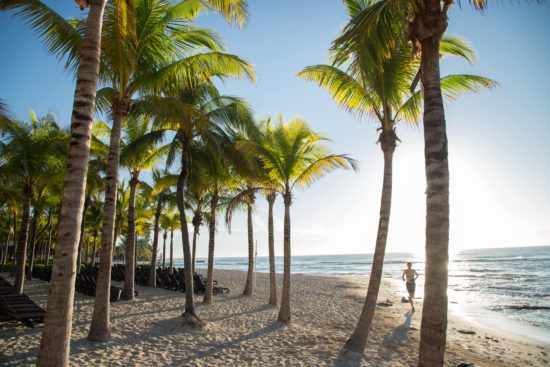
By delving into nature during your next vacation, not only will you be enjoying the natural attractions, but you will also be promoting the care of resources while helping the development of local species, who often depend on ecotourism to survive.
For Sandos, it is very important that you not only experience the ultimate vacation experience and taste the wonderful gastronomy of our restaurants, but we also want to encourage you to explore our destinations and experience everything they have to offer up close, especially when it comes to ecology.
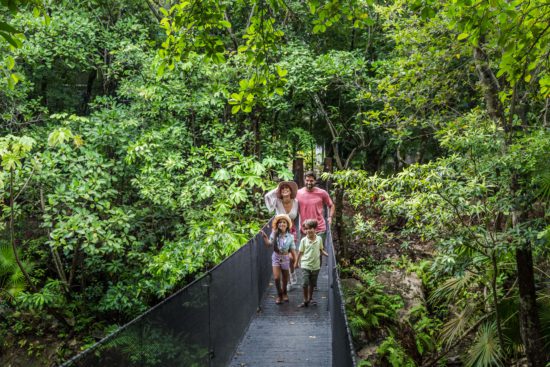
Mexico offers experiences in an infinity of ecological zones where you can relax, connect with your loved ones, and even embark on an extreme adventure. From north to south, the diverse ecosystems flora and fauna change, making it so rich that our country has earned the status of megadiverse. For this reason, no matter which region you visit, you will always find a corner where you can practice ecotourism activities and where you can take actions that allow the care of endangered species.
The Best Eco Friendly Vacation Spots
The best example of a sustainable ecofriendly resort is not in Hawaii, Cabo San Lucas or Puerto Vallarta it is in Playa del Carmen, Mexico.
Sandos Caracol is the first all-inclusive hotel that not only conserves the biosphere reserve surrounding the resort but also promotes sustainable travel (responsible travel) and long-term conservation.
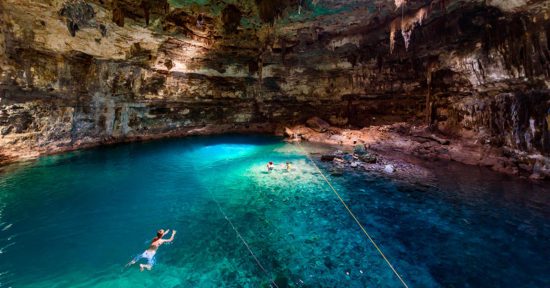
Sandos Caracol employs local guides and marine biologists to ensure that the natural areas such as the cenote and river system are treated with respect and kept pristine to maintain a healthy balance with the surrounding ecosystems.
The resort is just a short flight away from Mexico City and people in the US can fly direct to Cancun from a number of cities including Chicago. The eco hotel is popular with wildlife lovers who flock here to see spectacles such as the monarch butterfly migrations, and watch the howler monkeys, peacocks, spider monkeys, that are found on the grounds daily. Gusts can also take part in a number of eco tours and day trips.
If whale watching is on your bucket list then heading to Sandos Finisterra during the winter will allow you to spot whales from your beachfront suites, or you can organize a tour through our concierge.
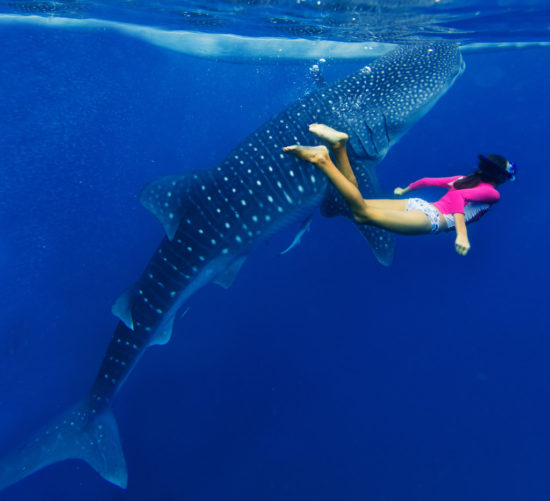
One of the most complete and diverse areas of Mexico is the Riviera Maya, where you will find all kinds of recreational activities to get closer to nature in ways that will change your perspective of the world. Imagine seeing the birth of a turtle or realizing how small the human being is when swimming with the sea’s titans , such as the whale shark; imagination is the only limit.
Ecotourism In The Riviera Maya
This southern region is home to three of our resorts, with a strategic location, perfect as a starting point for any of the excursions you decide to do in the area. Whether you want to spend a quiet day observing endemic birds , admire the beauty of the sea turtles up close, get lost in the jungle while swimming in a legendary cenote, or simply rest very comfortably in front of the sea a few steps from the jungle, Sandos Cancun, and Sandos Playacar will welcome you with open arms.
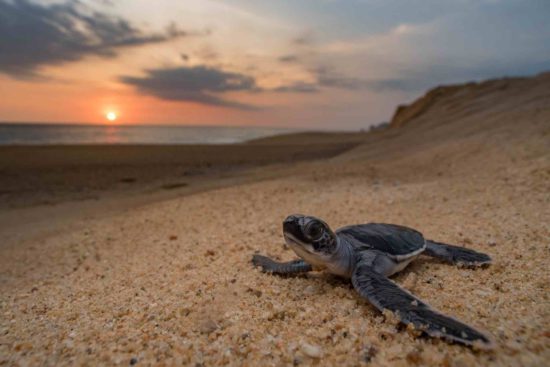
At the Riviera Maya, you will find our star of the jungle, Sandos Caracol. This hotel offers a magical experience with nature. Little by little, discover the exhilarating secrets that the jungle tucks away, from a water park for the whole family to natural wonders such as cenotes. Let yourself be carried away by the All Nature Experience program.
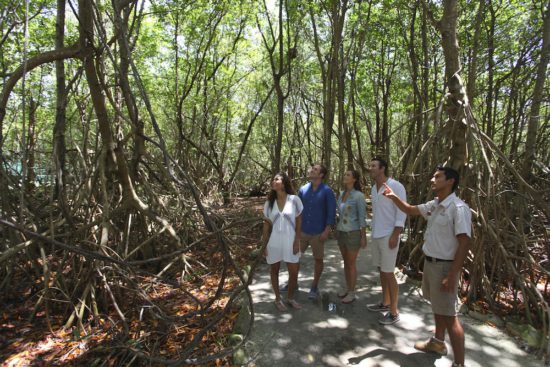
Regardless of your age, you can fully enjoy activities as simple as planting a tree and as exciting as crossing a mangrove river. It is also the perfect setting for romance; you can start the day by kayaking or cycling, while at sunset, a romantic boat ride that makes you feel like you’re in a movie. If you need reasons to visit Sandos Caracol, this complete program is guaranteed to give you plenty.
Ecotourism In Los Cabos
Los Cabos tourist corridor in the southern part of Baja California Sur is the door to a vast and wonderful marine life, unique in the world. In this paradise that combines a desert ecosystem with the Pacific Ocean’s secrets, you will find activities that you will undoubtedly remember for a lifetime.

Do not miss the opportunity to explore the coast and meet friendly sea lions resting on the rocks, or admire the arrival of the humpback whales either from the top of the mountain or aboard a boat if you want to experience their greatness up close.
Sandos Finisterra is the ideal place for an adventure in Los Cabos, as it is not only located a few steps from emblematic sites such as El Arco, but the situation also provides easy access to the entire tourist corridor, offering an unsurpassed view of the Sea of Cortez.
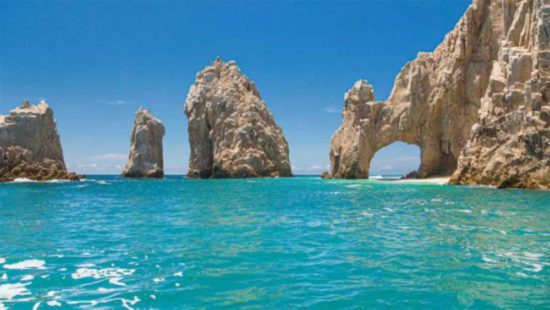
Don’t think twice and start planning your next ecotourism adventure in Mexico; you have many paces to choose from; the only thing you have to do is pick a point on the map and start exploring all of the possibilities around it.
If you have any questions or want to consult with the professionals, meet with our Seek & Go representatives upon arrival, they will gladly give you a variety of activities in nature to choose from that you can enjoy comfortably, but above all safely.
Share this article
Recent News Slideshow
The best activities to take part in this day of the dead, sandos hotels & resorts: giving guests more reasons to smile , the benefits of booking your vacation early, most commented posts.
- Most commented
Subscription

Ecotourism In Mexico: Here’s A Cheat Sheet

Mexico’s rich, vibrant culture is often overlooked by travelers who choose to stay within the confines of their all-inclusive resort. Unfortunately, that means local restaurants and businesses are missing out on those valuable tourism dollars. This guide to ecotourism in Mexico taps into the country’s more authentic side, while also keeping your footprint in mind.
Avoid the hordes of crowds who escape to Mexico during the winter by planning your trip for November. This marks the beginning of the dry season before tourism starts to ramp up. By going in the shoulder season, you’ll find better rates and more time alone with nature.

Where to stay
Tulum’s Azulik Hotel doesn’t have TVs or electricity, but guests aren’t roughing it when they stay in this eco-luxurious lodge. Built with organic architecture in tandem with the Mayan jungle, the resort inspires travelers to unplug from modern life.
For Tulum travelers on a budget, Harmony Glamping is a hippy-chic campsite built with sustainable materials such as reclaimed pallets. Tents start at just $35 a night.
On the Pacific side, avoid Puerto Vallarta’s mega-resorts and head to Sayulita, a low-key surf town with a more authentic vibe. Stay at Haramara Retreat, a gorgeous off-grid getaway. The hotel was built using traditional construction techniques to minimize environmental impact.

Where to eat and drink
Mexico’s Baja peninsula has no shortage of farm-to-table dining, but Flora Farms sets the gold standard. The sprawling, 25-acre working farm only serves food it grows or raises on-site.
Coffee lovers will be smitten with Finca El Pacifico, an organic coffee farm nestled in the mountains of Oaxaca. Here you can sip a fresh cup of joe surrounded by breathtaking vistas.
If vino is your tipple of choice, take a tour of Casa Madero. It’s the oldest winery in the Americas with philanthropic ties to a local children’s home.

Venture deep in the jungle to Maya ka’an, where you can fully embrace ecotourism in Mexico. Maya ka’an is a special project that gives travelers a glimpse into authentic Mayan life. Participate in a sweat lodge ritual, listen to stories from a community elder and watch traditional craftsmen at work.
Sneak away to Isla Holbox , nicknamed the “anti-Cancún,” a sliver of paradise with ecotourism ingrained in its DNA. Accessible only by boat, you won’t find plastic straws, reef-toxic sunscreen or even cars on the island. However, you will find deserted beaches shaded by endless coconut palms.
Hike through the Sierra de la Laguna UNESCO Biosphere Reserve , one of the Baja peninsula’s most seldom-explored areas. The reserve balances nature conservation with sustainable human development, with a ranchero culture still very much intact. A visit here will show you ecotourism in Mexico at its finest.

Go off the beaten path to Chiapas and explore colorful colonial towns and majestic Mayan ruins that have yet to be overrun by tourists. Mexico’s mysterious southernmost state has its own distinct culture and language. Consequently, it almost feels like you’re in a different country.
Meander through La Ruta del Tequila, a picturesque valley near Jalisco with roads lined by family-owned distilleries and sustainable agave farms. Here you can observe the centuries-old tradition that goes into crafting mezcal and tequila, while indulging in a sample or two.
-Shannon Valdes Leiderman
You might also like

Go Glamping At The Grand Canyon

Trips For Women, Supporting Women

How This Adventure Travel Company Supports Local Communities
Join our community.
Enter your email so we can keep you in the loop on our soon-to-launch travel writing course and giveaways! No spam, ever. Promise.
Mexico has long been a popular holiday spot for those seeking some sun, sea, and sand. Warm weather, lower prices and a booming tourism industry have made the country a firm favorite for millions of travelers each year. And with over 5,000 miles of coastline, sun-seekers flock to resort cities across the country. From Cancun in the east to Puerto Vallarta and Cabo in the west, most people are familiar with Mexico’s top tourist towns. But for a greener stay, you’re better off skipping the country’s hot spots in favor of more sustainable alternatives. Here’s how to support eco tourism in Mexico.
Why Avoiding Resort Cities is the Sustainable Choice
Whilst resort cities offer an appealing drawcard to travelers, they are anything but sustainable.
Resort cities bring a whole host of environmental problems. They destroy natural areas, disturb wildlife, pollute waterways, erode beaches, and emit tons of carbon through intense resource use. Ironically, they are damaging the very environment that attracts tourists to them in the first place.
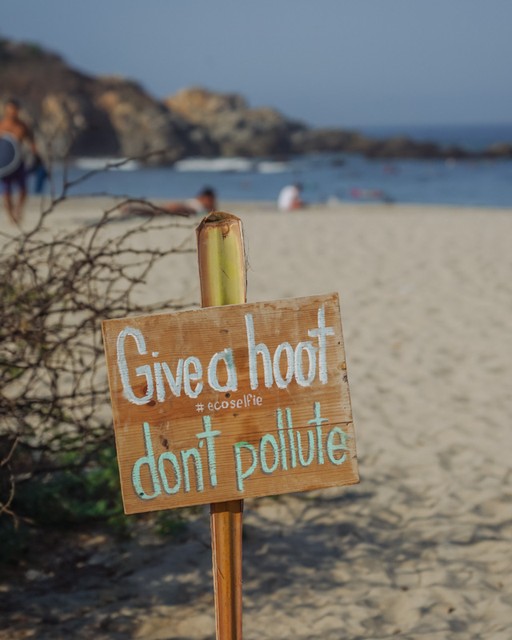
Culturally, these cities exist behind a curtain, shielding visitors from the real, authentic culture of the destination they are visiting. Local language, cuisine, currency, and culture are disguised, and some holiday-makers might spend their entire holiday without experiencing any kind of local life. Whilst many would argue resorts bring valuable income to communities, the reality is that most of this money is taken out of the local economy by international tourism corporations.
And as these cities rise in popularity with travelers, and visitors flood in by the hundreds of thousands, these issues are intensified, placing substantial pressure on the environment, society, and culture of the destination.
Eco Friendly Alternatives to Mexico’s Popular Resort Cities
Mexico’s tourism industry is a victim of its own success, and many popular resort destinations around the country are plagued by these issues. Sadly, most travelers to Mexico cluster in just a handful of resort cities around the country.
But why not consider somewhere else? Mexico’s more eco friendly destinations are just as worthy of a visit, with the same level of tourist amenities, just on a smaller scale. Often these destinations are more naturally scenic, offer a much more authentic view of Mexican culture, and are less crowded and more affordable.
And the good news is, you don’t need to get too far off the beaten track to have a more authentic, low-impact holiday in Mexico.
All the destinations recommended below still have great tourist facilities, with accommodation for all budgets, a range of both local and international restaurants and easy access via plane or comfortable long-distance bus. You can still enjoy all the luxury and comforts of a holiday, but do so in a smaller destination that is less detrimental to the unique environment, society and culture of Mexico.
Replace Cabo with Todos Santos
At the southern tip of the Baja Peninsula is the raucous resort city of Cabo San Lucas. Party central, Cabo has long been a destination for spring breakers, bachelorettes, and other rowdy revelers. Luxury all-inclusive resorts line the coast, every kind of chain store can be found in the malls around town and the restaurant scene is largely international focused. To say the least, Cabo is not an overly accurate depiction of Mexican culture.
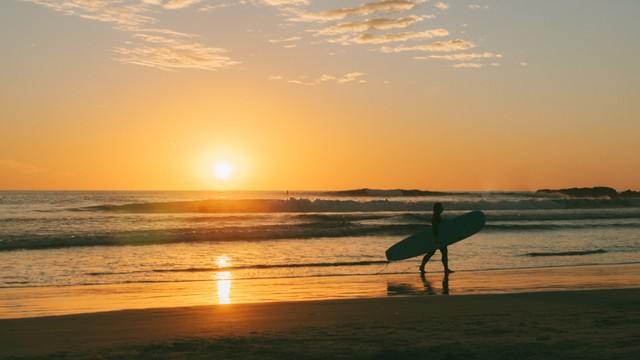
But less than an hour north of Cabo San Lucas is the small, laidback town of Todos Santos . Declared as one of Mexico’s pueblo magicos (magic towns), Todos Santos could not be more different than chaotic Cabo. Although still a popular tourist destination with all the usual amenities, the eco friendly tourism industry in Todos Santos is much more low-key and better integrated with the local culture and community.
The centre of town is a grid of charming cobblestone streets, with historic red-brick buildings and colorful flags waving overhead. There are miles of unspoiled golden coastline prime for surfing, where turtles nest and whales splash offshore, without the disruption of noisy beach clubs and hordes of tourists. The accommodation and dining scene consists of independent, small-scale businesses, most of which have strong sustainability initiatives to support the environment and community of the area.
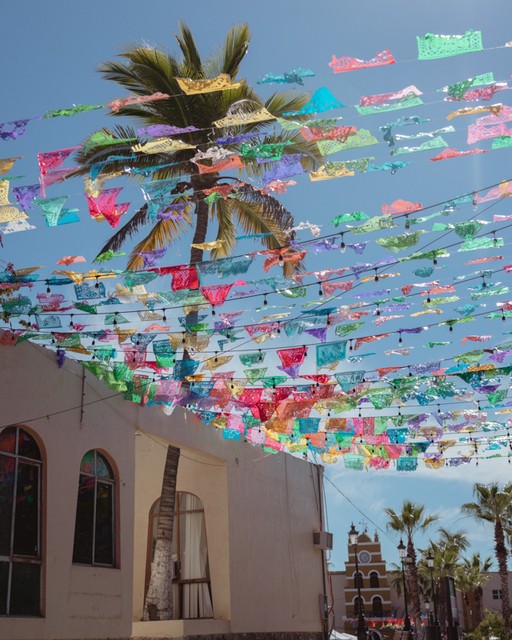
Swap Puerto Vallarta for San Pancho
Puerto Vallarta has long been a holiday destination for Canadian and American snowbirds chasing the sun. What was once a small beach town has developed into a sprawling resort city on the Pacific Coast in the state of Jalisco. This intense urbanisation has had major environmental consequences, with loss of biodiversity and large-scale deforestation to support an ever-growing tourism industry. Welcoming up to 5 million visitors per year, Puerto Vallarta is without a doubt one of the most popular destinations in Mexico.

Instead of cramming yourself onto a packed stretch of sand and standing shoulder to shoulder with other tourists in line for restaurants, head just a few hours north to San Pancho . Officially San Francisco, this slow-paced, hippy town is located in the neighboring state of Nayarit.
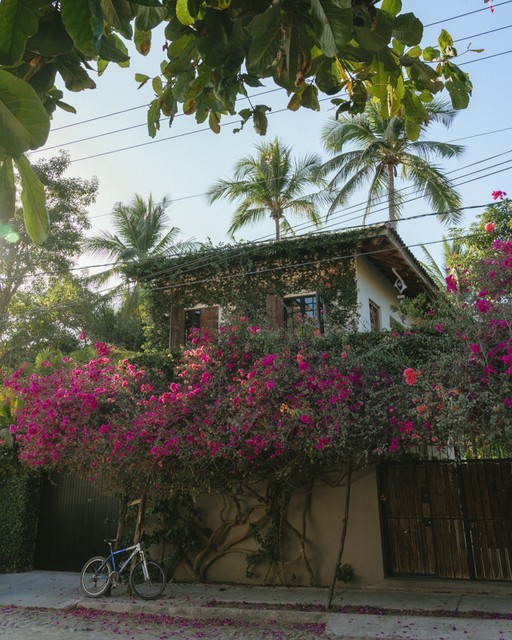
The town is host to fantastic eco-friendly accommodation options, delicious vegan restaurants, and a tight-knit community with a passion for its people and the environment. By supporting this smaller-scale tourism industry, your tourist dollars will remain in the local economy and provide benefits to residents. Plus, you can find some peace and quiet and truly enjoy the stunning beaches, jungle and landscapes Mexico’s Pacific Coast has to offer.
Skip Cancun and Head for Huatulco
Cancun is synonymous with tourism in Mexico. But less than 50 years ago, Cancun was nothing more than a jungle-covered peninsula on the Caribbean Sea. The area was specifically selected by the Mexican Government and developed from the ground up as a resort city to attract tourists and bring money into Mexico.
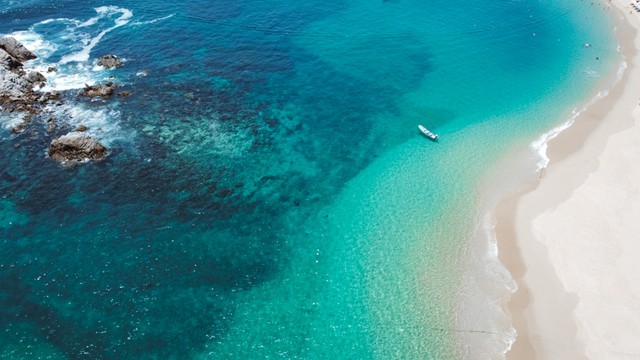
Cancun’s Zona Hotelera (Hotel Zone) embodies everything that is wrong with tourism. This 14-mile strip of land is jam-packed with towering resorts, glitzy malls, huge foreign entertainment venues and virtually nothing authentically Mexican. It met the original brief perfectly and has become a gringo paradise attracting millions of tourists each year.
But not all planned tourist developments end up like Cancun. Tucked away on the Oaxaca coast is Bahias de Huatulco . A collection of nine sparkling bays in the Pacific Ocean, Huatulco is another of the Mexican Government’s planned resort cities. Thankfully, the brief for developing Huatulco was a lower-impact collection of low-rise resorts spread across the different bays, with large swathes of national and marine parks in between.
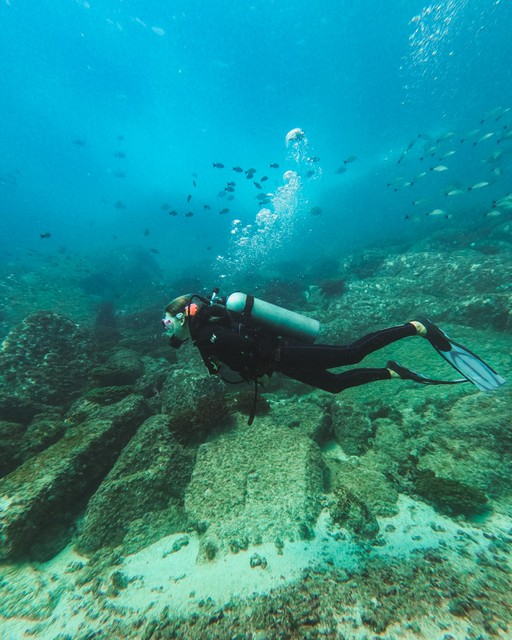
In the eyes of the government, Huatulco might be considered a failure. But for tourists seeking a quieter slice of scenic beach paradise, it’s the perfect place. The dazzling blue waters are home to some of the country’s best snorkeling and diving, and boat trips to hidden bays are a popular activity.
Change Playa Del Carmen for Puerto Escondido
South of Cancun on the Riviera Maya is Playa del Carmen. Once a local Caribbean town, Playa del Carmen is now tourist central, having undergone extensive development. Mangroves and rainforest were swapped for a concrete jungle of nightclubs, hotels, and glitzy malls. These international creature comforts attract holiday-makers with the lure of familiarity away from home.
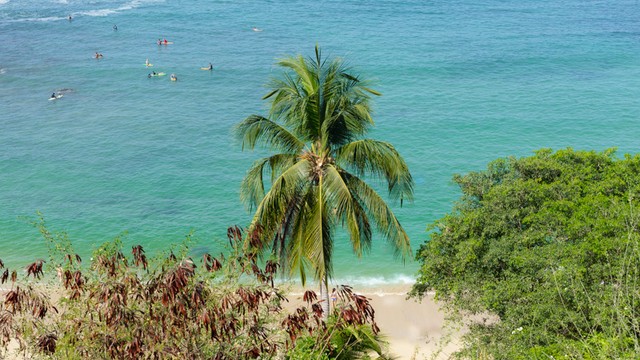
But even if you prefer your vacay spots more developed than a lone palm-fringed beach, there are better spots to choose from than Playa del Carmen. Puerto Escondido on the Oaxaca coast is a small city hosting several different beaches and neighborhoods. You can enjoy all the tourist amenities of Playa del Carmen, in a more authentic, Mexican destination that has developed around tourism, not for tourism. You will still find turtles nesting on the beaches, whales and dolphins splashing offshore, unspoiled coastline and quiet, local streets where real Mexican families live.
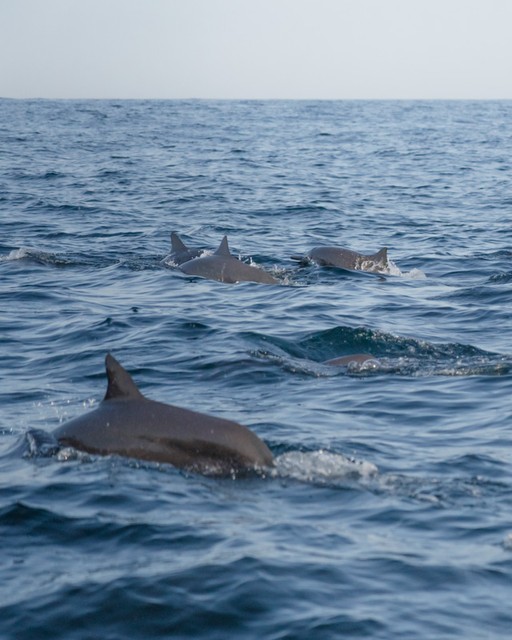
If you want to stay in the centre of the action with parties, restaurants, and plenty of buzz, choose Zicatela. If you prefer something a little hippier, with dirt roads and funky vegan cafes, La Punta is your spot. Or if you want a perfect mix of the two, with a laidback vibe yet easy access to amenities, Rinconada is a great choice.
Trade Tulum for Bacalar
Tulum has grown exponentially in popularity in the past decade, and the environment and infrastructure of the town can’t keep up with the hordes of visitors arriving each year. Ironically, this bohemian beach town has branded itself as an eco-friendly, spiritual haven. In reality, these so-called sustainable hotels are polluting the cenotes, using electricity from diesel generators, and clearing the jungle for further developments.
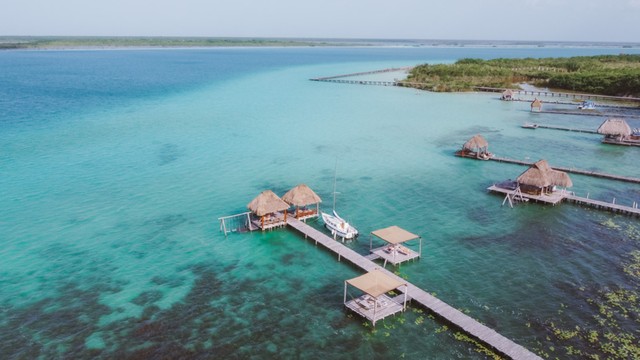
Just three hours south of Tulum is Bacalar . It might not be a beach town, but it may as well be, with its incredible Laguna de Los Siete Colores (Seven Color Lagoon). With its vibrant blue waters, Bacalar’s lagoon gives any Caribbean beach a run for its money.
Many consider Bacalar the Tulum of 20 years ago, with a sleepy, hippy vibe luring travelers in and keeping them there longer than expected. You can still find beautiful boho-style accommodation, aesthetic cafes, and funky restaurants like Tulum. But you’ll also discover affordable prices, more Mexican locals and visitors, and a stunning, preserved natural landscape in and around the lagoon.
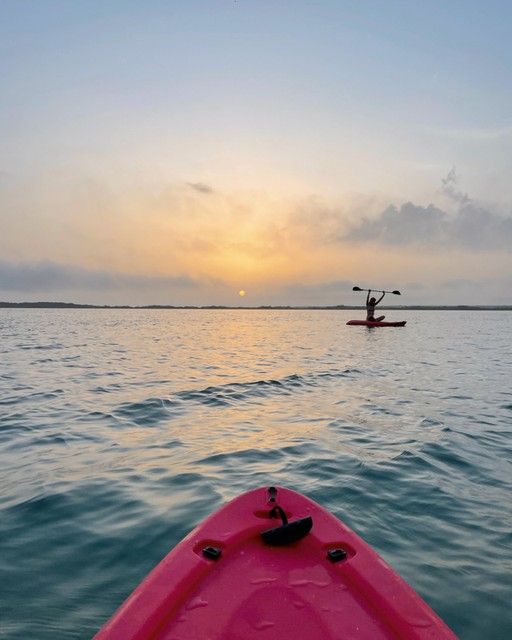
Supporting Eco Tourism in Mexico
If you’re thinking of heading south of the border, consider skipping the popular resort cities. Sure, you might have heard more about them online, know friends and family who have visited them, or maybe you’ve even been yourself. Instead, opt for one of these smaller, more authentic and sustainable towns. Spread your money, support Mexican-owned businesses, and have a holiday with a positive impact. Chances are, you’ll enjoy yourself even more!
Post by Sally Rodrick of sustainable travel blog, Sally Sees . Follow her on Instagram at @sallysees . Inspired by this post? Check out our Escapes for more eco-friendly places to visit around the world.
More From The Journal
32 bloggers leading the way toward more mindful travel.
These 32 bloggers and influencers are leading the way toward more thoughtful, sustainable and mindful travel.
5 Ethical Whale Watching Tours from Coast to Coast
From Cape Cod to San Diego, these ethical whale watching tours use responsible providers and environmental best practices.
Best Islands to Visit for Eco-Conscious Travelers
From Dominica to the Galapagos, these are the best islands to visit for eco-friendly travelers who want to have a positive impact.
Sign up for monthly inspiration.
Mexico Travel: Expert Tips on Sustainable Tourism
Sustainable tourism is a hot topic, with the travel pause enforced on us by the coronavirus pandemic giving us the opportunity to reflect on our lifestyles.
(Ray in Manila via Flickr / CC BY 2.0)
While no one is saying we shouldn’t travel, it’s a good time to promise ourselves that we might travel more thoughtfully. Sustainable tourism is sometimes referred to as ‘green’ tourism as it aims to reduce any negative impacts on the environment. But in fact, sustainability also extends to people, protecting their culture and way of life while enabling them to make a decent living. So what can you do to travel more sustainably? Here are our expert tips for becoming a more responsible tourist.
Embrace Slow Travel
If you can, take fewer vacations – but stay longer. Maximising your time in a destination but minimizing the environmental impact of getting there makes sense. Fortunately, many of Mexico’s most popular regions for tourists lend themselves to slow travel: when it comes to attractions, there’s ample variety and plenty to do. Visit the Mayan Riviera, for instance, and you’ll have time to venture inland from its beautiful resorts to charming but relatively overlooked towns such as Valladolid or Merida. With more time, you can explore endless hidden ruins, discover remote beaches and swim in the cooling waters of the area’s many cenotes.
Head off the beaten track
It’s also a good idea to avoid tourist hotspots – and you’ll soon find that dodging the crowds makes for a much more rewarding travel experience. For instance, you could switch up popular archaeological sites like Chichen Itza and Tulum for the less visited but equally fascinating Coba and Ek Balam. Alternatively, head inland. Consider ditching headliners Mexico City and San Miguel Allende in exchange for the chance to get acquainted with under the radar places such as Taxco and Guanajuato. Support locally-owned businesses and restaurants to be sure that you’re doing your bit for the economy.
Travel out of season
People need to make a living from tourism, but when a year’s visitors are crammed into a few months, the rest of the 12 months can be tough. By traveling out of season, you can help by spreading out income from tourism. In what’s known as the ‘shoulder seasons’, the weather can be just as warm, dry, and sunny, but prices typically represent better value for money, meaning there’s a financial reward for your thoughtfulness too.
Rent a hybrid or electric vehicle
To get the most out of your vacation, it’s likely that you’ll want to travel around. After all, what’s the point of visiting a place as colorful and exciting as Mexico if you’re just going to stay in your resort? If you do decide to explore, think about how to do so without causing unnecessary pollution. For short trips where it’s not practical to explore solely on foot, perhaps bicycle hire is an option. Consider taking the bus rather than relying on your own car. If you do choose to go down the private rental route, seek out a hybrid or electric vehicle where available.
Use sustainable sunscreen
One of the most important responsibilities we have as tourists is to ensure our travels don’t adversely impact the environment. Making a few simple changes can have positive consequences. For example, change your sun cream brand for one which won’t leave a harmful oily film in the water. Traditional formulas contain chemicals that aren’t good for marine life, but there are biodegradable alternatives on the market: look for active ingredients like titanium oxide and zinc oxide. At water parks such as Xcaret and Xel-ha, you can pick up the ocean and reef-safe sunscreen if you haven’t bought your own.
Give careful consideration to wildlife encounters before you book
Wildlife encounters can be some of the most memorable experiences we have while away. But it’s vital we do our research to ensure that the creatures we come into contact with aren’t affected by our actions. If you’re keen to swim with dolphins, for instance, think about steering clear of dolphinariums and aquariums. Instead try seeking out a wild pod off the coast of Baja California, where cetaceans are often spotted. The area’s great for whale watching too.
Minimize detergent and recycle paper
Most of us have stayed in hotels that offer not to change towels and bed linen every day, but it’s up to us to make sure we do so. Reusing towels might not seem a big deal, but if everyone does it, the impact is huge. Similarly, where possible, opt for paperless ticketing and do your research online rather than by asking for a leaflet. If you do end up with a collection of paper maps and flyers, see if you can recycle them or pass them on so that incoming visitors can reuse your cast-offs.
We hope you’ll agree that sustainable tourism practices are easier to adopt than you might have thought. Let’s all do our bit for the planet and try to be more considerate, greener tourists going forward.
Kaloyan Valentinov Danchev is the founder and president of a luxury travel firm, Fidelis Marketing Group . It is a business group that sells tourist facilities of the highest quality and tours to the best attractions of the locations in which we have a presence.
Latest Articles
- A Comparison of Fort Lauderdale Helicopter Rides April 12, 2024
- 7 Unique Things to do in Villahermosa April 12, 2024
- 5 Unique Juneau Shore Excursions April 12, 2024
- 3 of the Best Tours of Switzerland and Austria April 11, 2024
- Where to Buy Vintage Gold Necklaces April 11, 2024

Sustainability & Ecotourism in Los Cabos: A Full Guide [2024]
By: Author Stefania Guglielmi
Posted on Last updated: March 1, 2024
Categories Mexico , North America , Responsible travel
Planning a trip to Baja California Sur and wondering what to do when it comes to ecotourism in Los Cabos? Los Cabos is an amazing sustainable destination, and you’ll discover all about it in this guide.
Los Cabos is a gorgeous area in the southern tip of Baja California Sur, and it comprises Cabo San Lucas and San Jose del Cabo , two beautiful resort cities.
The area boasts pristine beaches, a laid-back nightlife, and it offers plenty of activities for nature lovers , as well as those who care deeply about booking sustainable activities and being responsible tourists (like you and me!).
When Los Cabos Tourism invited me to explore the sustainable side of Los Cabos, I had to say yes! Los Cabos is, in fact, one of the leading ecotourism destinations in Mexico , and its sustainability efforts, combined with the glorious natural attractions it possesses, make it an unrivaled spot for a vacation.

I’ve spent a lot of time in Mexico over the last few years, but somehow I had never made it to Baja California Sur or Los Cabos – what a mistake!
Check out this full guide about sustainability & ecotourism in Los Cabos so you can make the best of your time there.
⚠️ Please never book activities that involve captive animals , such as riding camels or swimming with dolphins. Horseback riding is usually ok, but do your research and make sure the tour you book with is a responsible one that takes care of the animals.
Table of Contents
ECOTOURISM ACTIVITIES IN LOS CABOS
When it comes to sustainable travel in Los Cabos, there’s no shortage of activities to be enjoyed . Below you’ll find some of the very best ones, offered by responsible providers.
Adopt and Release a Baby Turtle
Adopting and releasing baby turtles is possibly one of the most enjoyable (and satisfying!) things to do in San Jose del Cabo . We were lucky enough to be in Los Cabos in the right season for this activity, and it was one of the highlights of our trip.
The turtle hatching season in Los Cabos goes from late July till November, so keep this in mind if this is an activity you want to include in your itinerary.
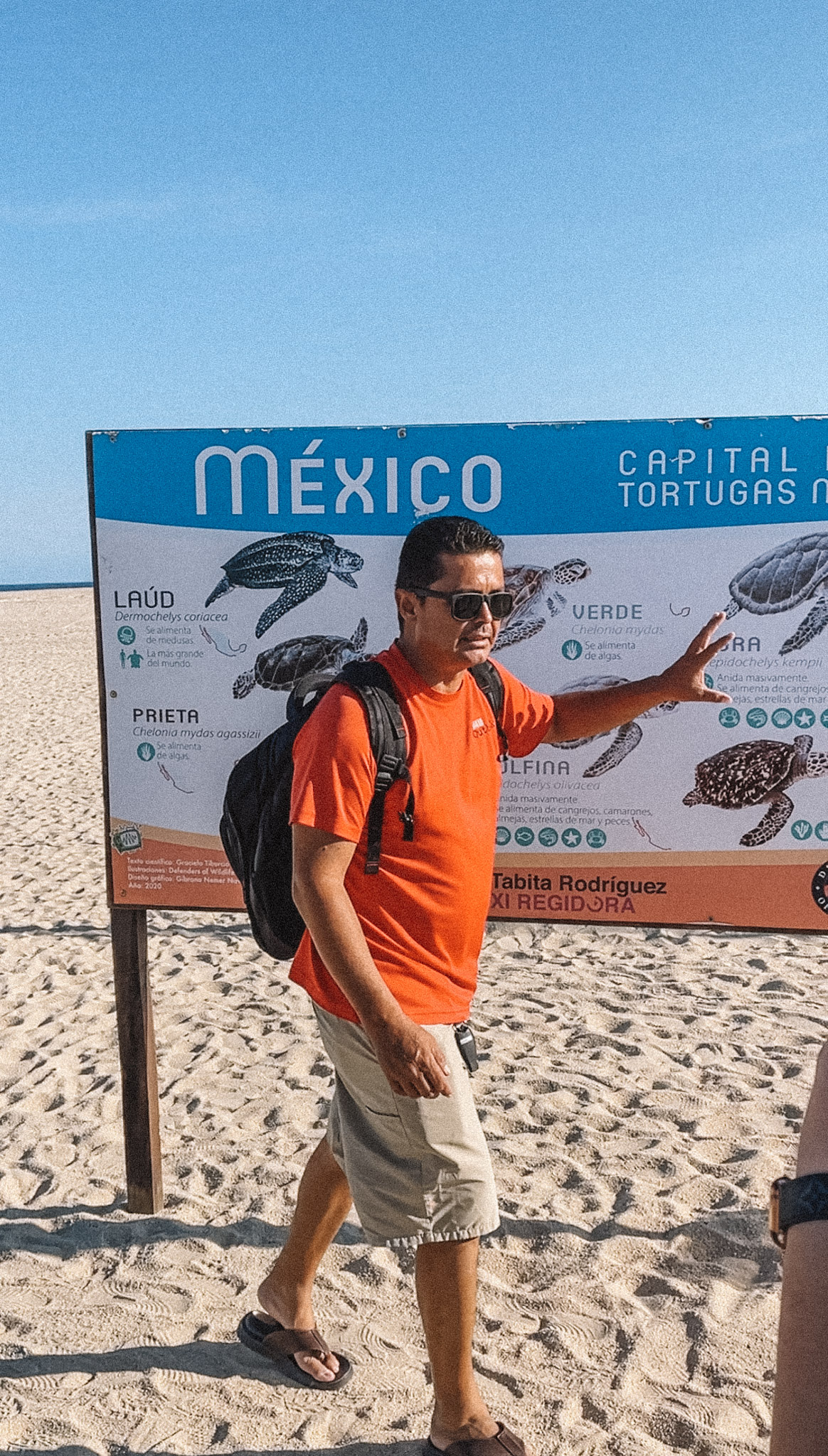
When you book a turtle release tour with CalypsoTrip , you’ll be taking part in a wildlife conservation program, helping preserve the species and learning about it in the process.
An expert will enlighten you on their behavior and lifespan, their natural habitat, and the importance of protecting them, as endangered sea turtles are sadly more common than we think .
The most exciting part is arguably when the hatchlings are released from their nests and make their way to the ocean , ready to start their life in the water. Witness the magic of the natural world while being actively involved in the protection of the species.
You can also book this same activity through Viator, which offers a full refund if you need to cancel the tour for any reason, and you do so up to 24 hours in advance.
➤ The Turtle Release Eco-Experience includes a guided commentary about the turtles’ biology and their environment as you release them, and hotel pick-up and drop-off. ➥ BOOK IT HERE
➤ You can otherwise book this Los Cabos Turtle Release Conservation Program . You’ll have the chance to adopt a baby turtle, and learn about the species and how endangered they are as you help release them into the ocean. You’ll also visit a donkey sanctuary! ➥ BOOK IT HERE
A Farm-to-Table Cooking Class
Mexico is world-renowned for its cuisine , and learning the secrets behind the country’s tastiest traditional dishes is the ultimate way to enjoy them. When in Los Cabos, though, the experience is enhanced by its focus on sustainability and in providing a farm-to-table culinary journey.
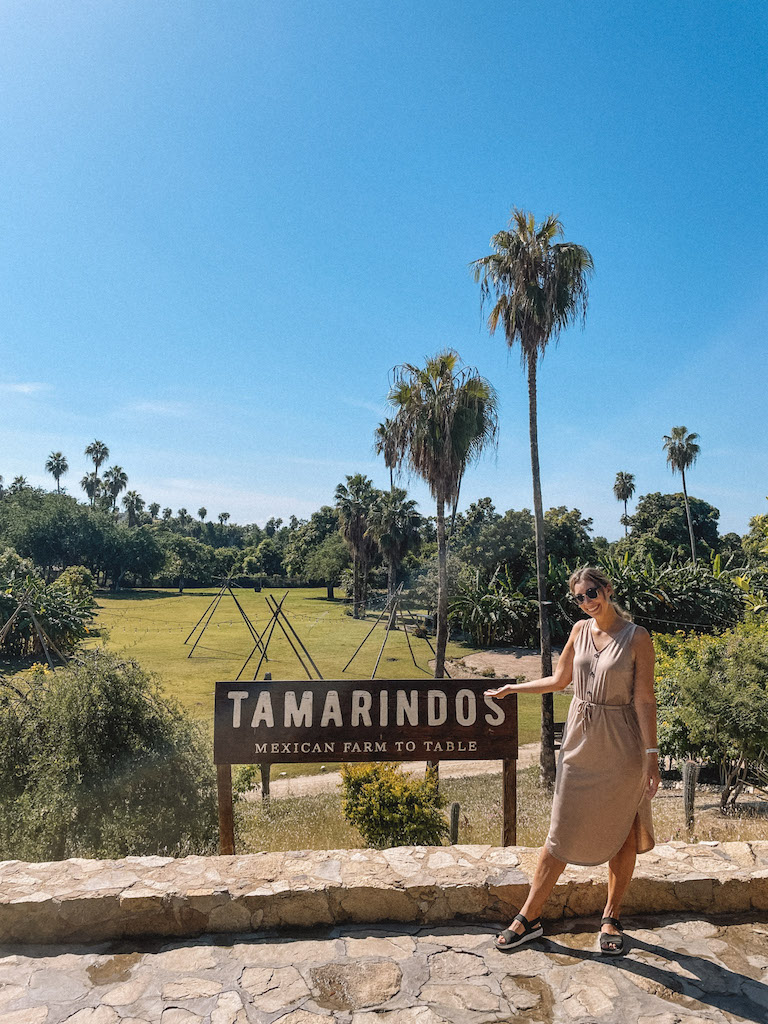
Tamarindos is an organic farm barely 15 minutes from San Jose del Cabo, where you’ll get to harvest your own herbs and vegetables before immersing yourself in a hands-on cooking lesson.
You’ll learn to prepare a 4-course traditional meal following the instructions of a local chef while learning all about Mexican and Mediterranean cuisines (plus getting new recipes to take home with you!)
Groups are limited to 6 people, so the experience is very personalized, and you can even decide what dishes you’d like to learn and prepare, relishing in them once they’re ready.

It’s one of the most rewarding activities to enjoy in the area, and it perfectly aligns with the concept of sustainable travel in Cabo. We loved our cooking class and meeting other travelers!
➤ The Farm-to-Table Experience includes the cooking class and lunch (drinks are paid separately). ➥ BOOK IT HERE
➤ An alternative is the Azteca Cactus Taco – Farm to Table Cooking Class in Los Cabos . Discover the roots of Mexican cuisine in a rancho, where you’ll tour a local farm, feed the animals, and harvest nopales (a prickly pear cactus that stars some Mexican specialties). Then, it’s time for your hands-on cooking class!
As you prepare tasty dishes, learn about the traditional ingredients and local culinary customs. Cap off the class by savoring tortillas, salsas, and Nopales a la Mexicana . ➥ BOOK IT HERE
Blue Flag Beaches of Los Cabos
Los Cabos is where the Sea of Cortez meets the Pacific Ocean, and it’s an area mainly recognized for its stunning beaches. Rightly so, as they are indeed spectacular, and 25 of them even boast a blue flag certification .
The blue flag certification is an internationally recognized award that guarantees beaches have met (and continue to do so) strict criteria on sustainability, safety, environmental impact, and accessibility .
It assures travelers that the beach is clean and safe , and also that it has a good emergency plan, a good number of lifeguards, its management is respectful to the ecosystem and wildlife, and basically, that it’s an eco-friendly facility.
There are over 20 stunning beaches which boast the blue flag recognition, including Acapulquito , Las Viudas , Palmilla , Lover’s Beach , and La Gaviota .
▶ One of my favorites, though, is Chileno Beach , located in Cabo San Lucas. It features a long stretch of white sand and turquoise waters, which are perfectly swimmable, and has a very laid-back vibe.
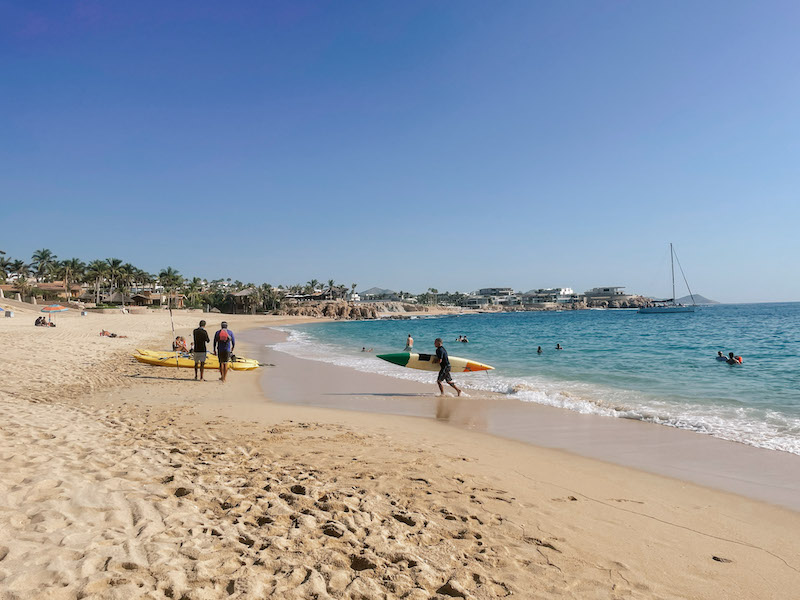
Snorkeling is one of the main activities at Playa Chileno , as is spending the day sunbathing by the shore or going for a swim. There are toilets and showers on-site, but you won’t find beach clubs or restaurants, which helps maintain the relaxed atmosphere of the beach.
This is where we went snorkeling and oh my gosh! I definitely was not expecting to see so much fish!
▶ Santa Maria Beach is another unmissable beach situated 7 miles north of Cabo San Lucas, in the gorgeous Santa Maria Bay. Calm waters are fringed by powdery white sand and massive rock formations to the sides, creating a dramatic backdrop that has become one of its main attractions.
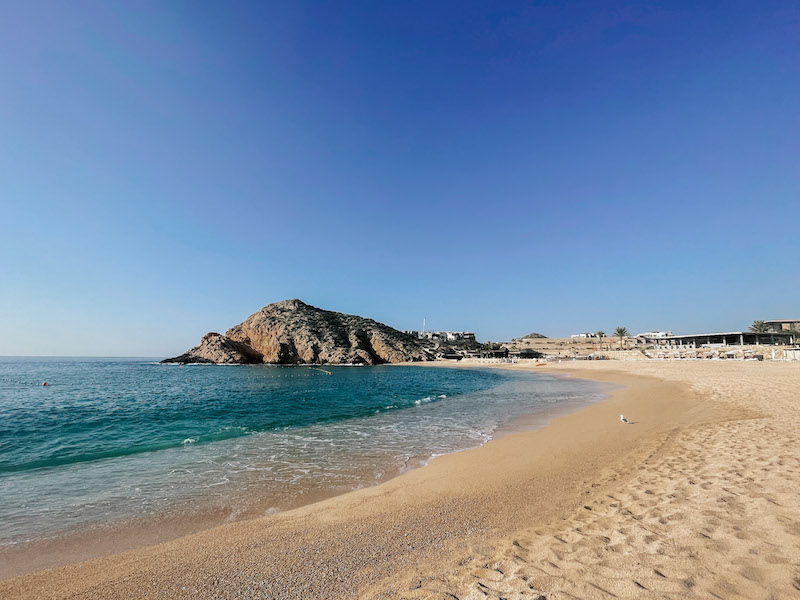
This blue flag beach is sort of secluded, and an astounding spot for snorkeling (among the very best in Los Cabos, actually), as it’s home to schools of colorful reef fish and insanely clear waters . There are several boats ready to take you on a snorkeling trip during the day.
Umbrellas and beach chairs can usually be rented at the entrance, although the service is offered by a vendor and not a beach facility per se. It’d be wise to take your own if you plan to spend the whole day at the beach.
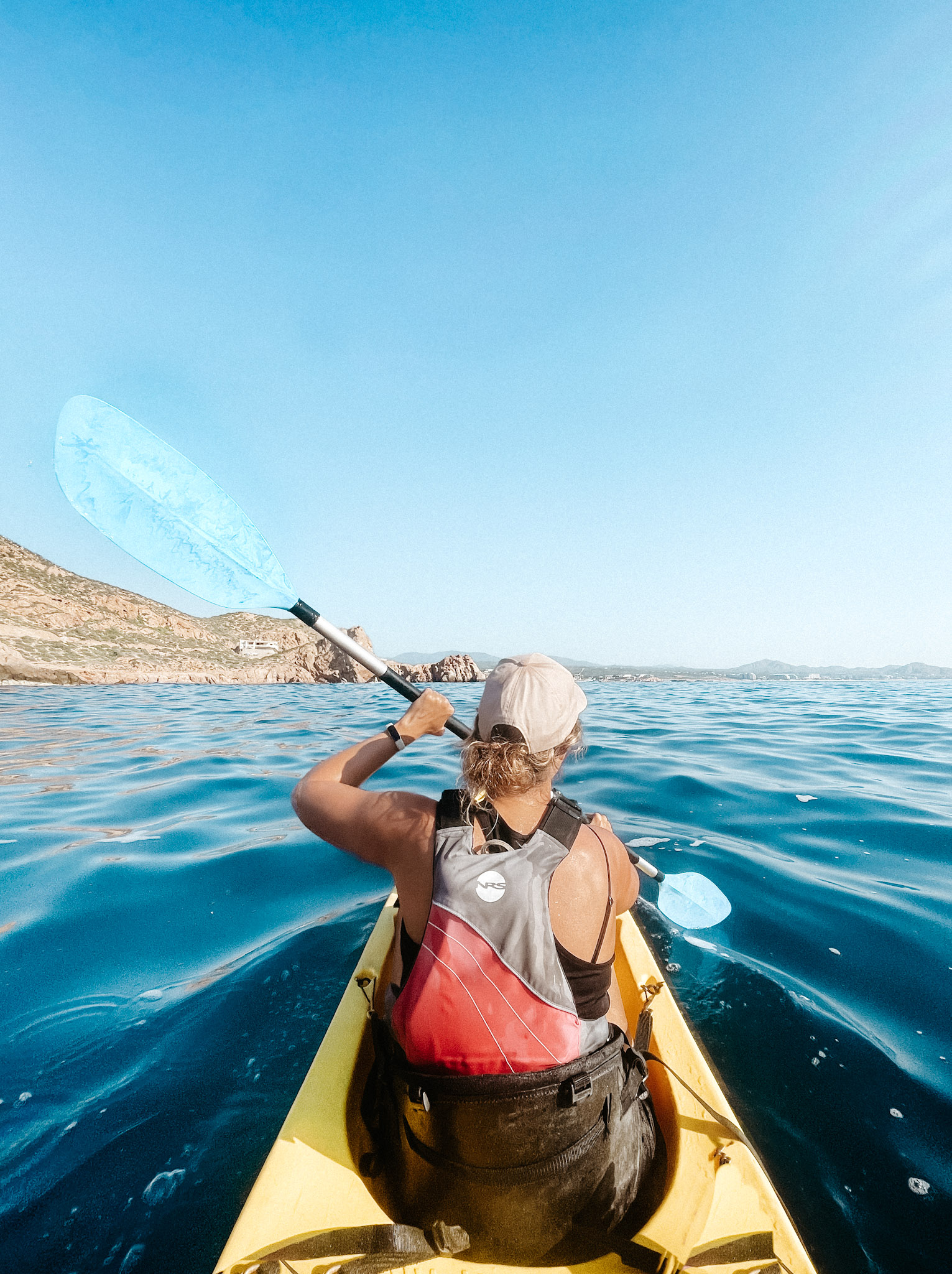
One of the best ways to enjoy these protected and oh-so-gorgeous locations is by getting in the water. In my opinion, kayaking and snorkeling in Cabo is a must, and you can do so with a comprehensive tour that includes the activities and equipment like we did with High Tide Los Cabos .
You can paddle from one beach to the other on a glass-bottom kayak and then snorkel in beautiful tidal pools among fish, urchins, and maybe even turtles and starfish. You can book your tour directly on their website or on Viator.
➤ The Snorkeling Tour to Chileno and Santa Maria includes swimming stops at coral formations, as well as round-trip transportation and free time at the beach. ➥ BOOK IT HERE
➤ This Kayak and Snorkel Tour is a private experience. You’ll explore both bays on a glass-bottom kayak, and snorkel in prime locations with your own group. ➥ BOOK IT HERE
Go on a Sustainable City Tour
To discover the gorgeous area through a local’s eyes, truly understand it, and learn about its hidden gems and very best spots, there’s not better way to do it than by joining a city tour .
It’s one of the ultimate activities in Los Cabos, and you’ll help support local communities while immersing yourself in the history and stories of San Jose del Cabo.
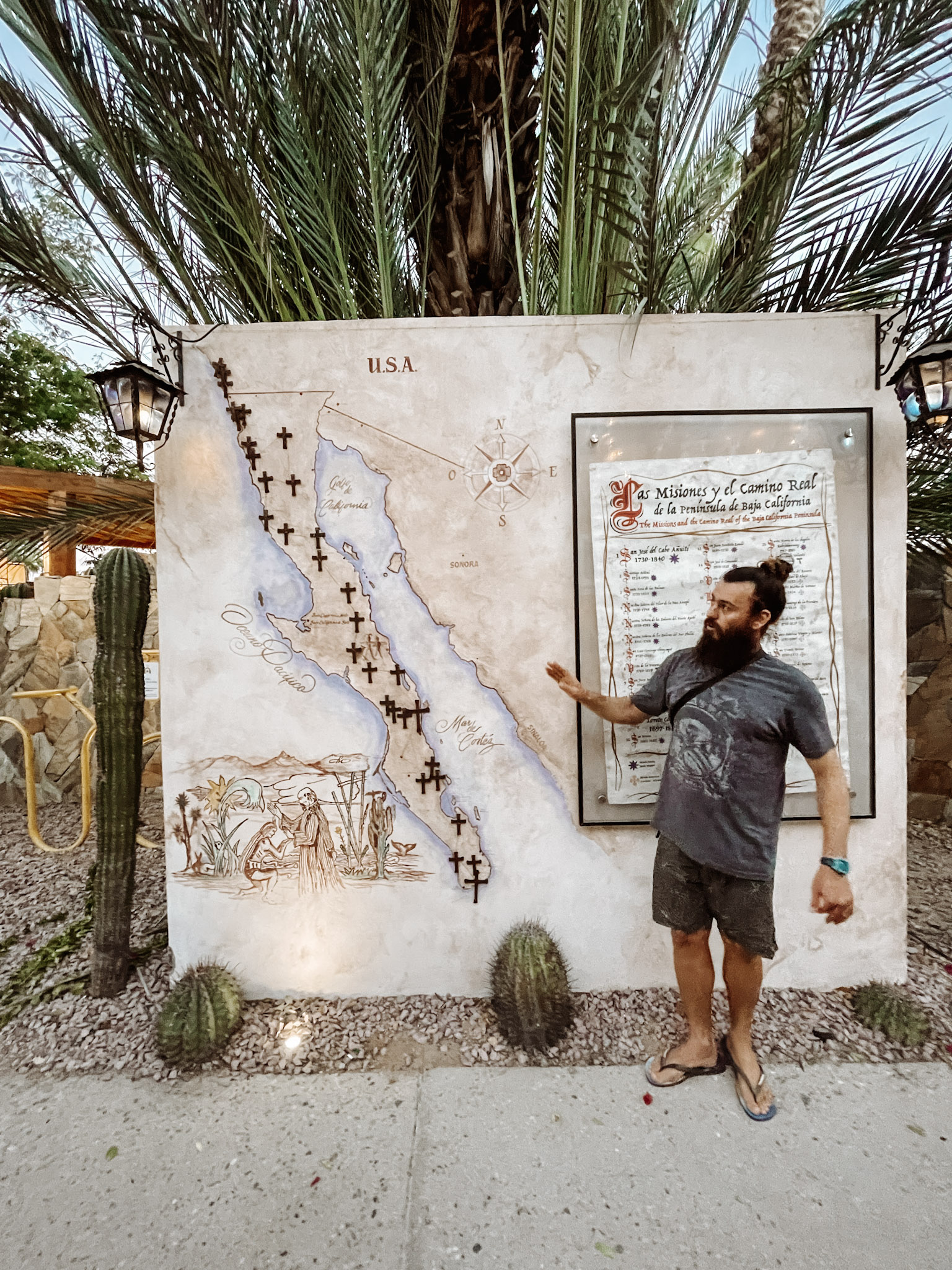
The city tour by Cabo City Tours that we suggest aims to keep the local identity alive through education, offering free field trips to public schools and NGOs , and introducing the values of the community and its traditions to new residents.
This project is funded by visitors like you who book this incredibly interesting and sustainable tour when in Los Cabos.
The city tour is based in the art of storytelling, and as you make your way around San Jose del Cabo, your knowledgeable guide will tell you the stories of the region’s tribes, battles, and pirates .
We are not particularly into history, but this was not the usual boring, historical tour – our guide was fun, and we loved learning so much about the area! You’ll also learn about the legends that have lived on for centuries, as well as statistics and interesting facts about the city.
Plus, you get to walk all around San Jose del Cabo , which is a very cute, super colorful town! When visiting Los Cabos, I highly recommend taking part in this tour.

➤ This Cultural Walking Tour takes place in the evening, and lasts close to 2 hours. It operates on a small-group basis and enables you to explore the city center in depth. ➥ BOOK IT HERE
Day Trip To Cabo Pulmo
Cabo Pulmo National Park is situated 60 miles north of Los Cabos, which makes it an unmissable day trip destination. This is the ideal trip for those interested in ecotourism in Cabo!

The park stretches for about 5 miles on the coastline, backdropped by glorious mountains and surrounded by desert.
It features the only hard coral reef in North America , home to over 800 sea creatures and estimated to be over 20 thousand years old! The turquoise waters of its beaches are ideal for swimming and snorkeling, and you can also enjoy fantastic scuba diving in Cabo Pulmo .
The total of the park’s protected area is banned from fishing , and since its establishment, the abundant marine life that had been driven away from the coral reefs have gradually come back.
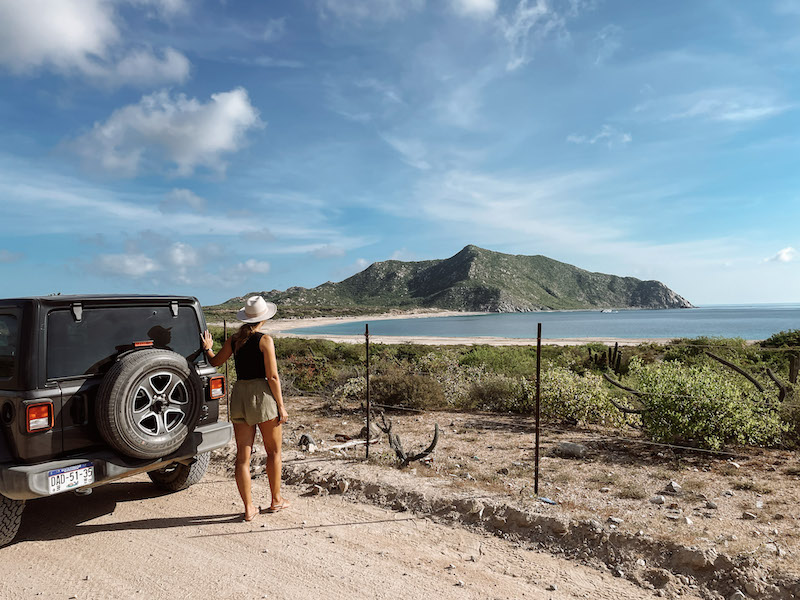
In fact, Cabo Pulmo’s coral reef was on the verge of dying due to overfishing and pollution, and several conservation programs managed to rescue it and bring it back to life. Today it boasts striking natural beauty and has benefitted marine animals greatly.
Sea turtles, rays, sharks, fish, invertebrates, and humpback whales are among the creatures that call Cabo Pulmo National Park their home. The park is a UNESCO World Heritage Site and it’s also recognized by the Ramsar Convention .
While swimming, snorkeling, and scuba diving are by far the best and most popular activities in Los Cabos’ marine park, there’s plenty more for you to do while you’re there.
Paddleboarding , sea kayak, sailing , hiking , and indulging in the local cuisine are some of the things you can enjoy on your day trip to the national park.
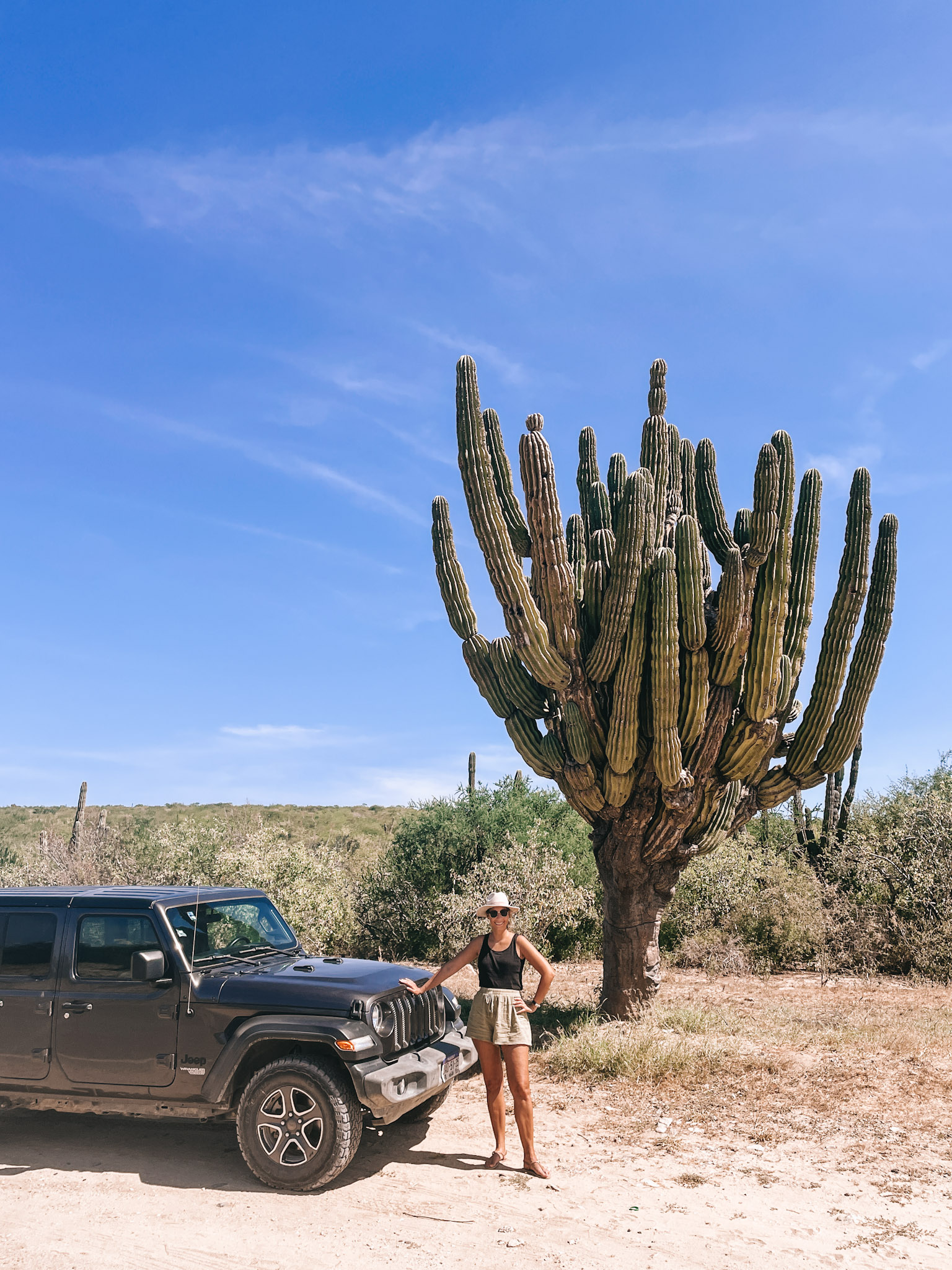
➤ One of the best ways to visit Cabo Pulmo is on a jeep tour like the one we went on with High Tide Los Cabos. The 4×4 vehicle will allow you to get there via the most scenic road, with stunning views of Sea of Cortez along the way.
You’ll also be able to explore the off-road, mountainous trails without worrying about the driving.
A visit to Playa Arbolitos is included, where you’ll enjoy snacks before getting in the water for some snorkeling along the reef and among plenty of sea life .
This Private Jeep Tour is a 7-hour trip and includes hotel pick-up and drop-off, as well as lunch, use of equipment, refreshments, and entrance fees. ➥ BOOK IT HERE
Whale Watching in Los Cabos
December through April is the migration period for gray and humpback whales . Thousands of these spectacular creatures make their way south from the Arctic to the warmer waters of the Baja Peninsula in Mexico, where they’re going to mate and give birth .
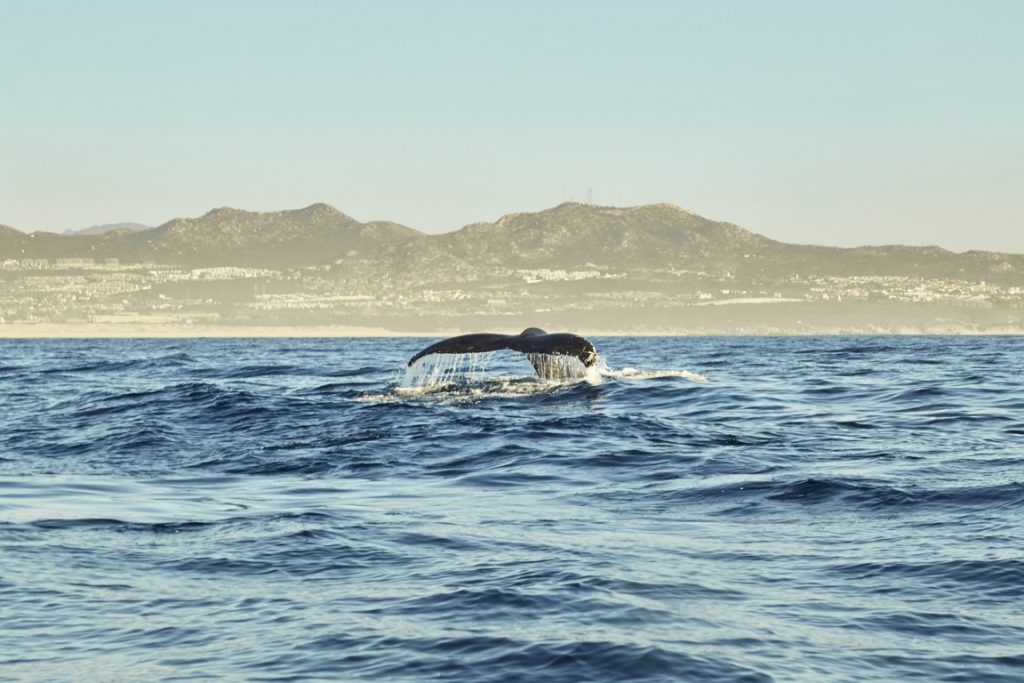
It’s therefore a great time to enjoy (responsible!) whale watching, getting a close-up look of the giant mammals and watching them interact.
Unfortunately, I was in Cabo at a different time and was not able to witness it this time like I did last year in Puerto Vallarta but oh well – one more reason to come back!
During the whale season, chances of seeing the animals are high (it’s not always 100%, but very very close), and you may even get a glimpse of them from the beach. To really get close to them, learn about their behavior, and snap stunning pictures, though, you’ll need to take a tour .
There are many tours in the area that offer whale watching experiences – remember to choose a responsible operator that matches your sustainable travel in Los Cabos.
Most tours are accompanied by an expert guide or biologist who’ll be able to answer all of your questions, and explain the whales’ migration patterns, eating habits, and life cycle as you admire them in their natural habitat.
➤ The Zodiac Whale Watching Adventure is led by a marine biologist and operated by a sustainable company. You’ll enjoy a free second tour if you don’t see the whales! ➥ BOOK IT HERE
Animalon by the Sea Dinner Cruise
This activity is NOT available anymore.
Animalon by the Sea is a 3-hour sunset dinner cruise designed by an acclaimed Mexican chef, Javier Plascencia.
The journey takes place on a beautiful 49’’ boat that will sail across the sea of Cortez as you indulge in a delicious 5-course meal, fully made with seasonal and locally sourced ingredients.
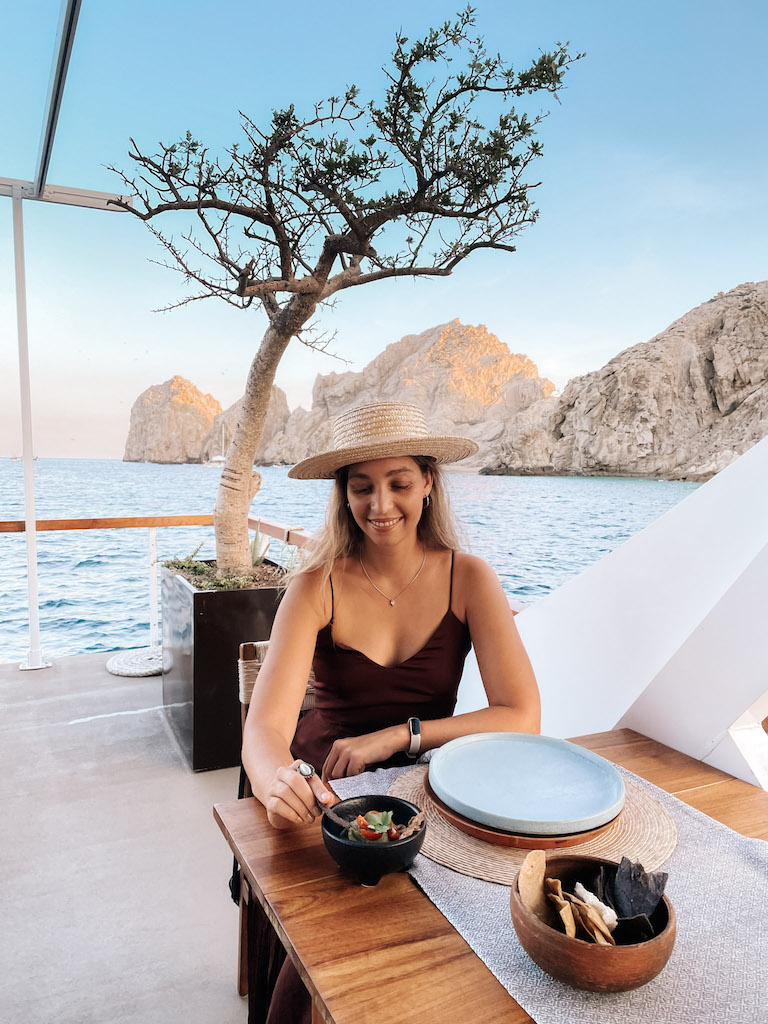
The activity places great emphasis in offering an ocean-to-table experience , which makes it unique and very sustainable.
If you go for the full experience, the menu is carefully paired with the perfect wine for each dish .
During the cruise, you might get to see dolphins , sea lions , and even whales swimming alongside the boat on the seas of Baja California Sur.
As the day comes to an end, you’ll be able to witness the peninsula and the famous Arch of Cabo San Lucas bathed in the golden sunset light. The boat lights up after dusk, conveying an enchanting atmosphere.

I loved the whole experience! It was probably my favorite activity in Los Cabos. The food was very good, and I was so surprised to see such beautiful creations come from the tiny boat kitchen.
But what makes this cruise so special is that you get the fine dining experience of a restaurant combined with some incredible sunset views that you can only get on a boat.
FARM-TO-TABLE RESTAURANTS IN LOS CABOS
Eating is a very ( extremely ) important part of any vacation…even more if said vacation is in Mexico!
Sustainable tourism in Los Cabos is taken very seriously, as you probably realized by now. That means that you’ll be able to find farm-to-table, sustainable restaurants where you can indulge in Mexican delicacies, being offered great quality without having a negative impact on the environment.
Below you’ll find two fantastic restaurants that guarantee impeccable service and food and a deep commitment to sustainability.
Flora’s Field Kitchen at Flora Farms
Flora’s Field Kitchen is located in Flora Farms, a sustainable estate that works the land by hand and where over 100 different herbs and vegetables are grown .
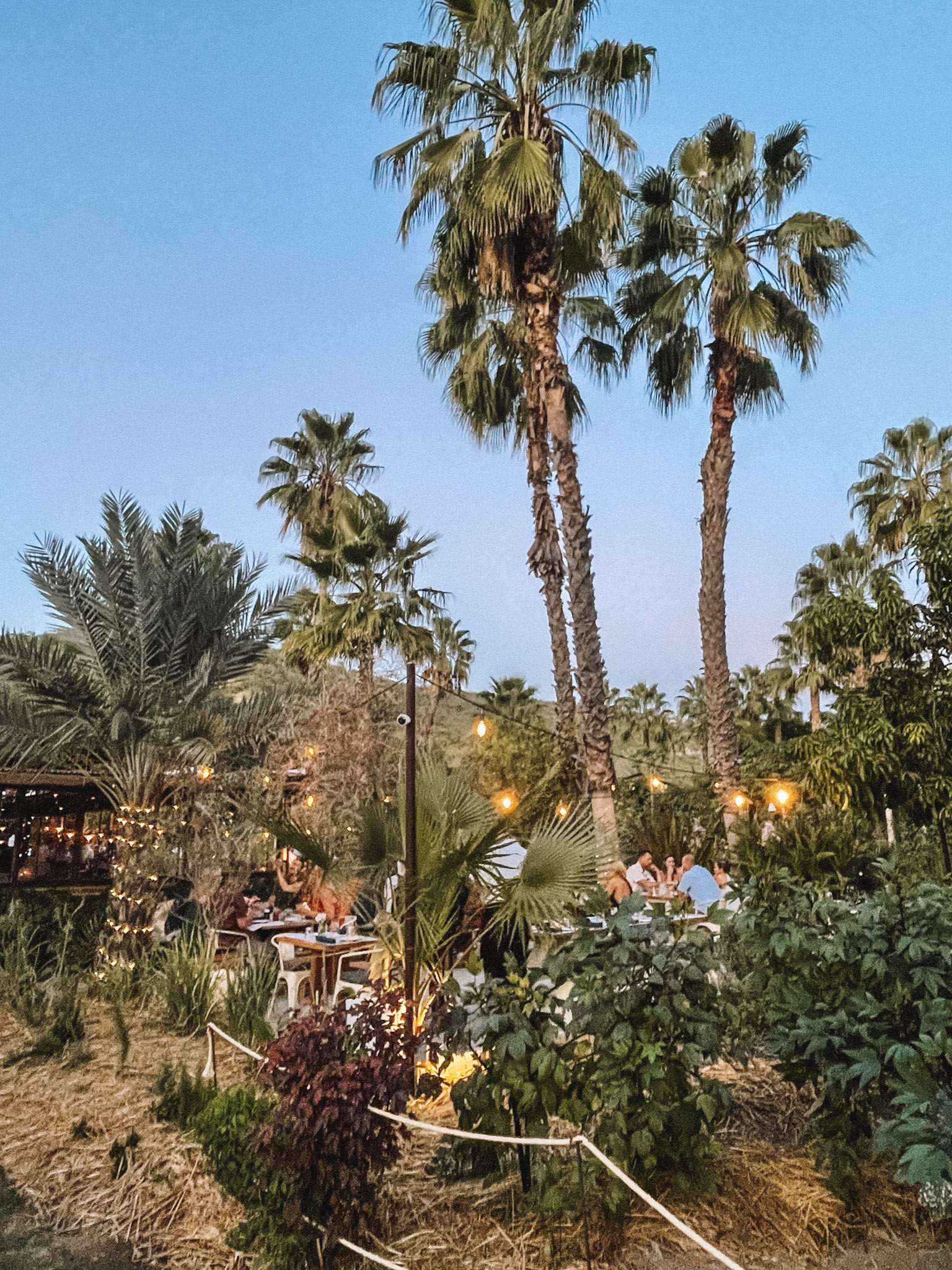
All items on the menu are handmade using the freshest ingredients , all of which come directly from the farm. This is where their field-to-table concept originates , creating a circle that starts with nourishing the soil and plating the seeds, and culminates in the wholesome dishes you’ll get to enjoy.
In fact, the restaurant aims to only serve what they grow and produce , which means their menu is seasonal. You’ll find vegetarian dishes as well as meat options, which come from animals raised humanly and with a healthy diet in the ranch.
There’s also a bar with views of the field that serves all the classic cocktails as well as fruit and vegetable-based ones, wine, and tap beer from Flora’s Brewery.
If you’re in the mood for pizzas, Mama’s Pizzeria , a section within Flora’s Field Kitchen, has its own wood-fired oven where 15 different types of pizza are baked . And it was good pizza! Trust me – I’m Italian after all 😉

We tried multiple dishes from the menu and liked each and every one of them. Everything tasted fresh, which makes sense considering the ingredients come from their own farm.
For drinks, I had both the Perro Perdido with sparkling wine and a Lavender Martini, and they were both so good.
House-made ice creams and sorbets for dessert can be bought at the ice cream cart on-site.
This restaurant is extremely popular, so you’d better book in advance if you want to eat here!
Opening Hours : Tuesday to Saturday from 9 AM to 10.30 AM, 11 AM to 1.30 PM, and 5.30 PM to 9 PM. Sunday brunch runs from 10 AM to 2 PM.
Don Sanchez
Don Sanchez is a restaurant located in San Jose del Cabo that specializes in contemporary Mexican cuisine.

All of the fruits and vegetables used in their kitchen are organic and locally produced ; seafood is regionally sourced and animals are also raised in Los Cabos. This way they ensure prime quality as well as a responsible treatment to the environment.
The restaurant is known for its excellent service and flavorful cuisine , and it offers a great wine menu to pair with your dishes, as well as the popular spirits of the region, including tequila and mezcal. They even have their own wine private label!
READ ALSO : Tequila Tasting in Cabo San Lucas
After starting with two unusually looking mezcal cocktails, we left the chef take over and prepare a tasting menu for us and it was a great choice. We loved every dish! In fact, this was one of the very best meals we had this year.
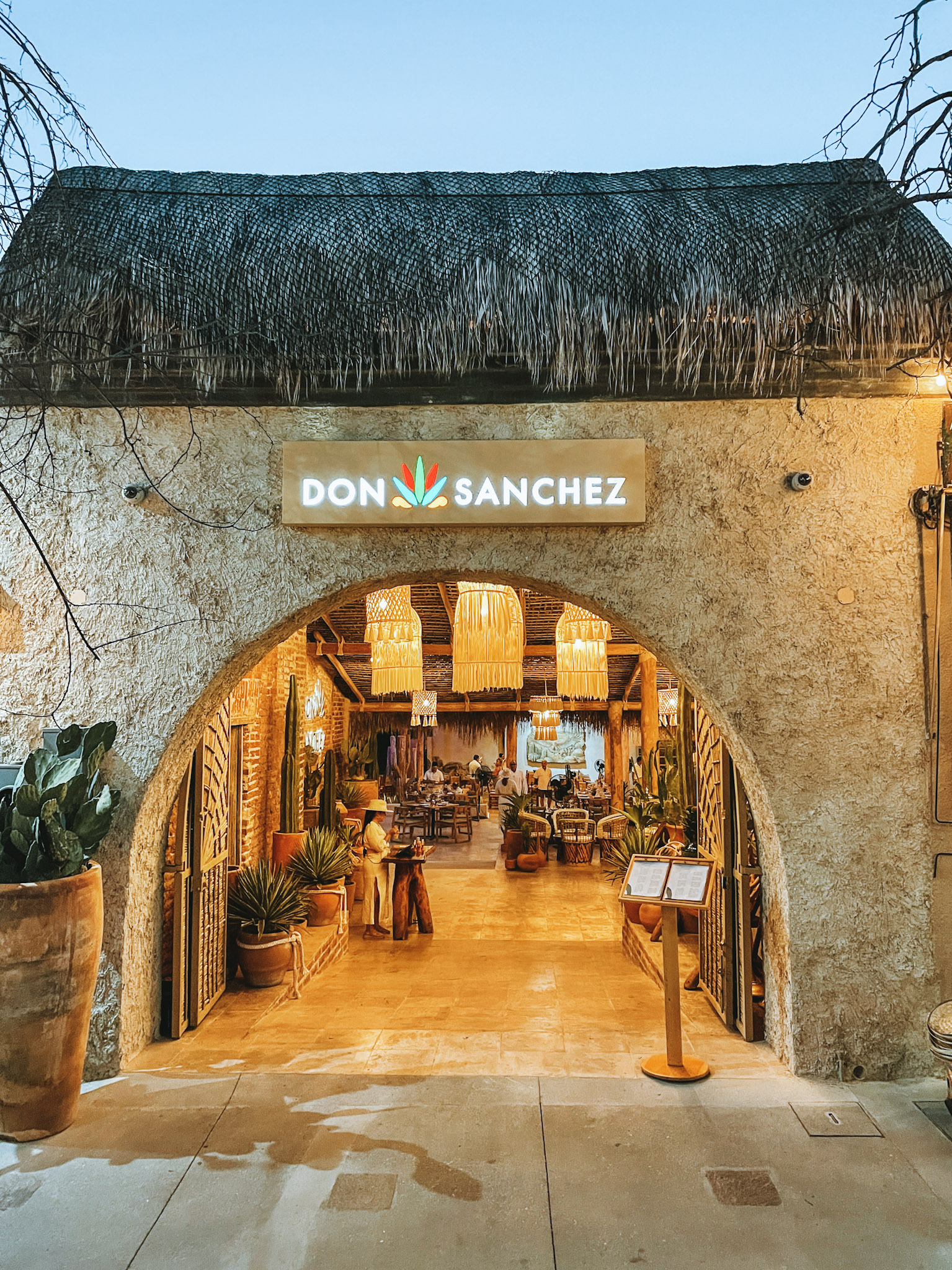
Their philosophy, which states that the creation of the best meals starts with the best ingredients, has led them to carefully choose where their produce comes from and implement the fabulous farm-to-table concept.
The menu includes raw seafood and tasty tacos, as well as meat-based main dishes and healthy salads and appetizers. There are quite a few options for vegetarians . In fact, we aren’t vegetarians, but we loved the plant-based dishes we were offered.
Opening Hours : Daily from 5 PM to 10 PM
WHERE TO STAY: AN ECO HOTEL IN LOS CABOS
We stayed at Hotel El Ganzo , considered one of the most sustainable accommodations in all of Mexico. In fact, it’s the first hotel in the country to be certified as a B Corporation , meaning that they meet the highest standards when it comes to environmental and social responsibility.
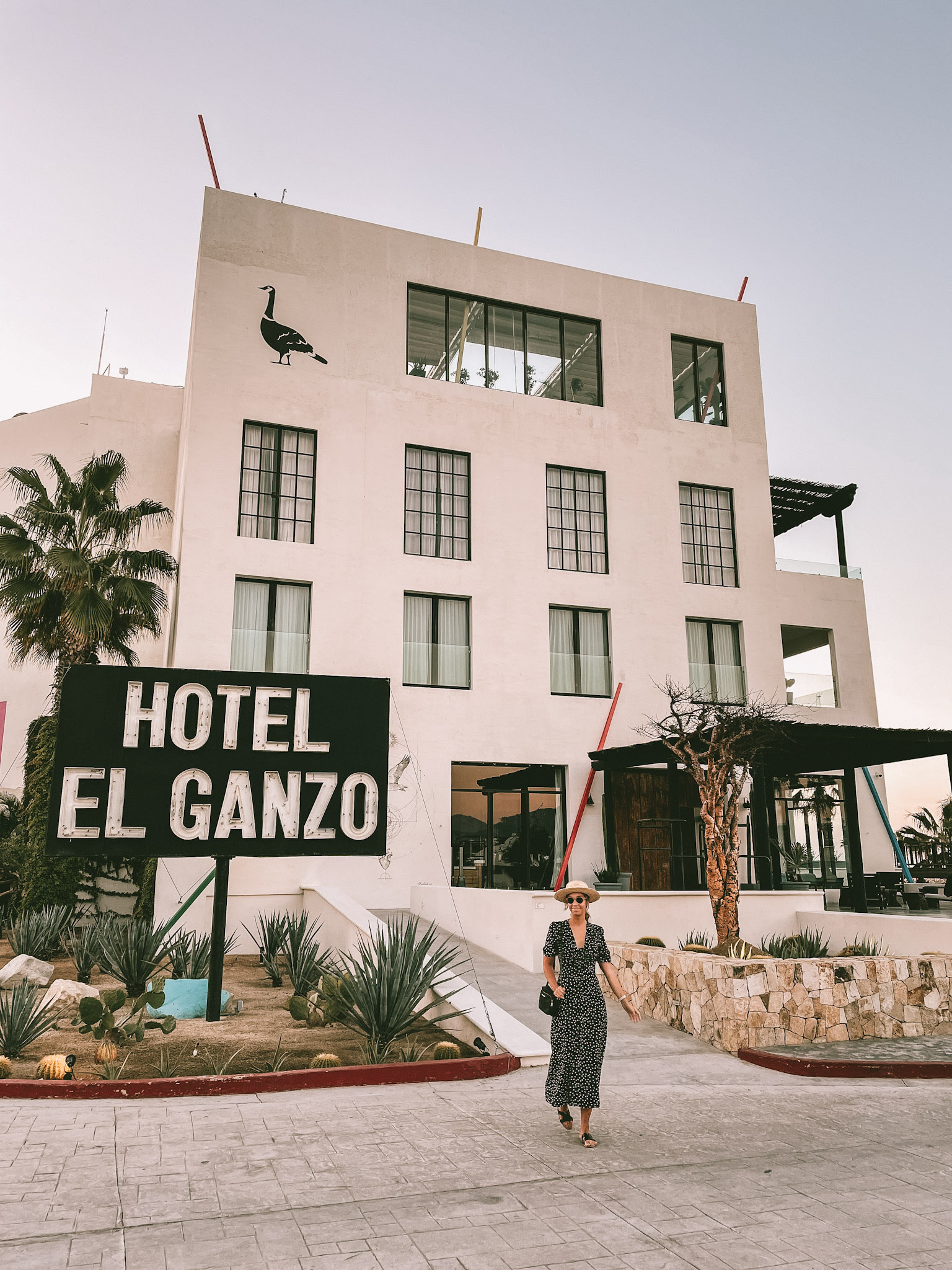
This eco-friendly hotel features luxurious one and two-bedroom rooms , some of which face the ocean, and a penthouse & honeymoon suite.
Our room was very spacious and featured a seating area, a very comfy bed, and a fully stocked complimentary minibar.

The highlight was probably the expansive terrace with a private jacuzzi overlooking the marina – nothing better than enjoying the view in the jacuzzi while sipping a glass of wine!

The bathroom was fully equipped, including a shower and soaking bath, organic toiletries, and robes.
There are also several dining options at El Ganzo , from an on-site restaurant to a rooftop bar to a taco food truck.
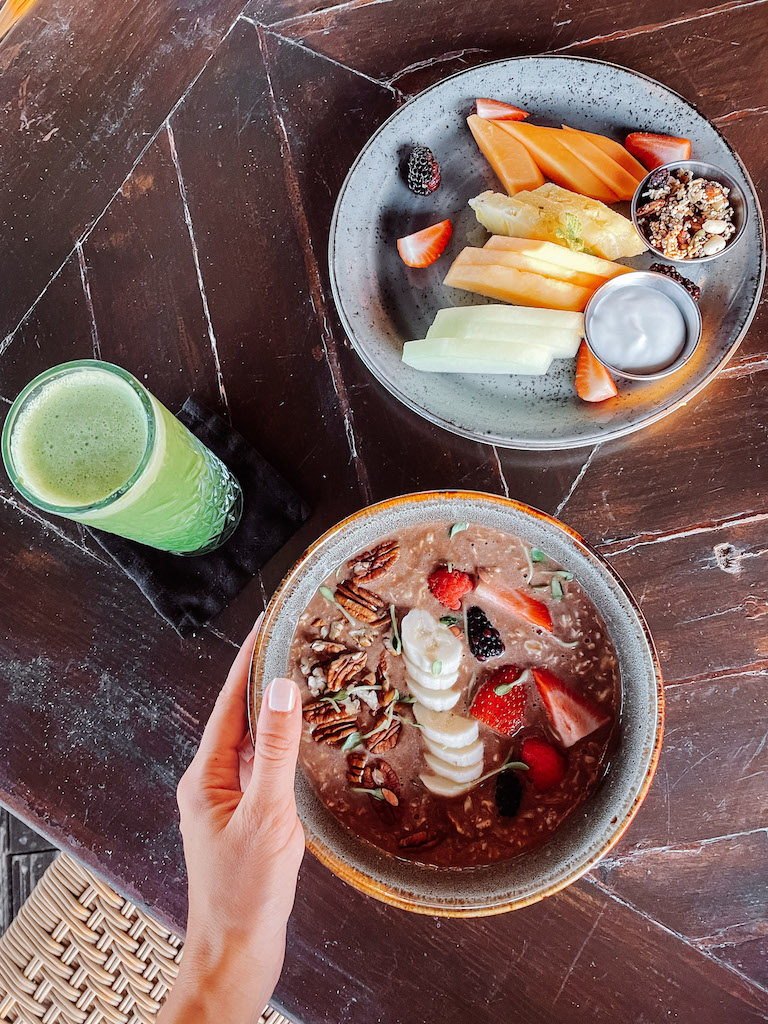
At El Ganzo you’ll find a private beach club reachable by a 1-minute boat ride, two swimming pools, and a fitness center. Pets are welcome as well!
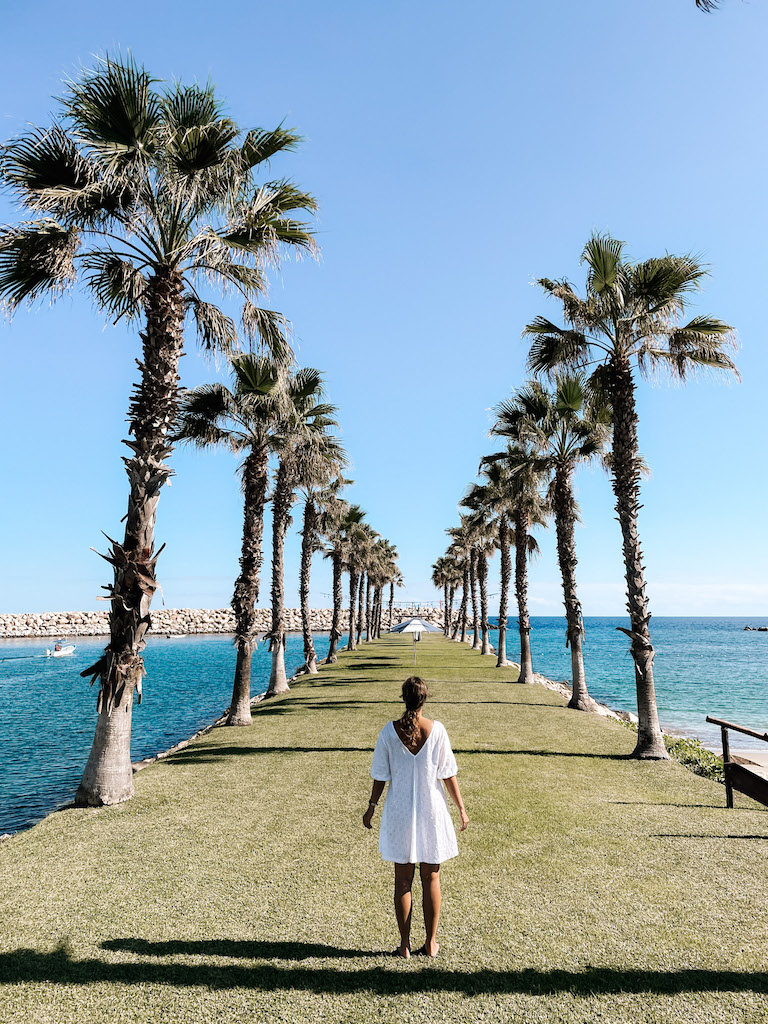
Its main rooftop pool is an infinity pool with incredible views over the San Jose del Cabo Marina, and a transparent jacuzzi in the middle of it. This must be the most Instagrammable pool in all of Los Cabos !

Besides luxurious rooms and suites, El Ganzo boasts a wellness & spa center where you can get anything from facials to massages, hydrotherapy, beauty treatments or yoga classes.
El Ganzo’s commitment to sustainability, though, is likely its main attraction if you’re reading this article. The hotel has in place an Environmental Management System that helps it monitor and reduce its waste .
The rooftop pool is heated with solar power, food waste is composted, single-use plastics have been eliminated, and guests’ carbon footprint impact is reversed by the purchase of carbon bonds.

El Ganzo also has a strong engagement with the community . It supports local businesses, provides a space for creativity and socialization at its Community Center, hires locally, and educates its staff during work hours.
The hotel also seeks partnerships with sustainable companies, like Water Matters, and encourages its guests to take part in the programs and support the eco-friendly projects it carries out.
CHECK RATES AND AVAILABILITY HERE
➤ Looking for something different? Other sustainable hotels in Los Cabos include Viceroy Los Cabos , Villa del Faro , Grand Velas , and The White Lodge .
Stefania Guglielmi is the founder of Every Steph. Originally from Bologna, Italy, she's been traveling full-time since 2016 and has visited over 50 countries across 6 continents. She believes sustainable travel and luxury travel can go hand in hand and has been advocating for responsible tourism since 2014. Stefania's advice and travel experiences have been featured in important publications such as Business Insider, Refinery29, and Yahoo Money.
Sign me up for the monthly newsletter!

Ecotourism in Mexico
Mexican ecotourism is regarded as one of the finest approaches to experiencing the country’s natural beauty and cultural heritage – a conscientious mode of travel that fosters sustainable development and preservation while enabling tourists to admire and discover the natural surroundings.
Mexico is a country famous for its remarkable biodiversity, magnificent scenery, and dynamic culture. Its ecotourism industry offers a unique opportunity to explore the country’s diverse ecosystems, such as its rainforests, beaches, mountains, and deserts.
Whether you’re interested in adventure activities, cultural experiences, or simply enjoying the stunning landscapes and wildlife, ecotourism in Mexico has something to offer for everyone.
The best places in Mexico for ecotourism
Baja california sur.
Baja California boasts four biosphere reserves, with two standing out as prime tourist destinations.
The first destination is the Sierra de la Laguna in the southern part of the peninsula which features an incredible contrast of woodland and scrub ecosystems that are home to various endemic vegetation species. Visitors can embark on eco-friendly hikes organized with respect for the environment.
Meanwhile, the Gulf of California’s hundreds of islands, islets, and coastal areas offer a wealth of marine biodiversity, earning it the nickname “ Aquarium of the World .” Along with hiking, numerous eco-friendly tour companies operate throughout Baja California in places like Loreto, La Paz, Todos Santos, and Cabo on the Pacific Coast.
The Mexican state of Campeche may be underrated, but it is home to many breathtaking natural wonders including the awe-inspiring Calakmul Biosphere Reserve. This is one of Mexico’s largest forest reserves and, if you include the neighbouring countries of Guatemala and Belize, it becomes the second-largest forest in Latin America after the Amazon.
Calakmul also houses one of the most significant and largest Mayan ruins, with majestic temples peeking out from the dense tropical jungle.
It would be highly advised to hire a car to fully explore the biosphere and its surrounding areas.
Quintana Roo
Quintana Roo in South-eastern Mexico is undoubtedly the most frequently visited state in the country, making it more susceptible to significant impacts on its delicate ecosystems.
This state is home to several natural wonders , including the world-renowned Mesoamerican Barrier Reef System, which stretches from the northeastern tip of the Yucatan Peninsula down to Honduras. The reef system is a crucial habitat for numerous marine species such as sea turtles, sharks, and dolphins, making it a popular destination for scuba diving and snorkelling enthusiasts .
Additionally, Quintana Roo is home to a multitude of natural areas, including the UNESCO World Heritage site of Sian Ka’an Biosphere Reserve. Here, you’ll discover a diverse range of flora and fauna, including jaguars, pumas, and over 350 species of birds.
Tourists can also visit the beautiful Mayan ruins of Tulum , which overlooks the Caribbean Sea and accommodates iguanas and a host of other reptiles.
Queretaro – a state in central Mexico is a great destination for those seeking outdoor adventure and sustainable tourism experiences in Mexico.
The UNESCO World Heritage site of Sierra Gorda Biosphere Reserve is a stunning natural area that is home to various ecosystems, including cloud forests, rivers, and canyons. Visitors can go hiking, rock climbing, and bird watching while supporting the local communities through eco-tourism programmes.
The Pinal de Amoles region within the reserve is also an excellent spot for stargazing. Additionally, the Peña de Bernal, a massive monolith and one of Mexico’s Pueblos Mágicos, offers stunning views and rock-climbing opportunities
San Marcelino Mayan Village
San Marcelino is a small Mayan village located in the state of Chiapas, Mexico. The community has embraced ecotourism to preserve their culture and environment while also generating income . Visitors can participate in various ecotourism activities such as hiking through the jungle, birdwatching, and visiting traditional Mayan homes to learn about their way of life and customs.
One of the main attractions in San Marcelino is the Huitepec Ecological Reserve , which is home to a diverse range of flora and fauna, including howler monkeys, jaguars, and over 300 species of birds. The reserve offers guided hikes through the forest and educational tours that highlight the importance of conservation and sustainable development.
Additionally, visitors can support the local economy by purchasing traditional handicrafts made by the Mayan women in the village. The women create beautiful textiles using traditional techniques that have been passed down for generations.
Rated 5-stars by more than 1,500 travellers on Tripadvisor.

Victoria O.
September, 2022, two weeks in mexico, tripadvisor review of rutopia.

April, 2022
Enjoyed using rutopia, kimkim review of rutopia.

Adventures in the Yucatán!

Great experience with this agency, totally recommend!

Mayan Site Tour in Yucatan Penninsula Mexico

Varadarajan
Fantastic will do it again.

A literally perfect trip to the Yucatan peninsula

Journey to Mexico City, Cholula and Cuetzalan

March, 2022
Just wonderful.

November, 2021
Chiapas, neri and her family.

Alexhcros1500
March, 2021, super local agency.

April, 2021
The best moment lived in mexico.

September, 2020
Super organization, great accommodations and nice team.

pascalrichard0304
March, 2020, circuit in yucatan.

Top eco-friendly tours in Mexico
Mexico offers various ecotourism activities and tours in various regions throughout the country.
Here are five eco tours in Mexico and some recommended activities to add to your travel list:
1. Chiapas adventure
Looking for an adventure that will immerse you in the allure of ancient Mexico? A trip to Chiapas is just the ticket.
Chiapas, located in southern Mexico, is a destination that offers endless opportunities for adventure and exploration. From the lush jungles to the towering mountains , this region has something to offer for everyone who loves adventure and the great outdoors.
You can start by exploring the ancient Mayan ruins of Palenque which offers a glimpse into the fascinating Mayan civilisation , which once thrived in this region.
After soaking up the history, head to the stunning Sumidero Canyon . This natural wonder that offers a host of a drenaline-pumping activities such as kayaking and rafting . You can also take a boat tour through the canyon where you can spot exotic wildlife along the way.
If hiking is more your thing, head to the towering El Chiflon waterfall , which offers a challenging yet rewarding hike up to the top, ending with a panoramic view of the stunning waterfall.
For the ultimate adventure experience, consider camping in the jungle . You can experience the region’s unique flora and fauna up close, and even go on a guided tour with a local expert who can show you the best spots and hidden gems in the jungle.
2. Hiking Oaxaca’s mountains
Hiking the Oaxaca mountains in Southern Mexico is an adventure that offers stunning views of the region’s rugged landscape, with its rolling hills and towering peaks.
One of the most popular hikes is the Sierra Norte Mountains . The trails take you through lush forests, rushing streams, and picturesque mountain villages, where you can immerse yourself in the local culture and traditions. For a more challenging hike, consider trekking up to the Pico de Orizaba – Mexico’s highest peak .
One of the highlights is exploring the ancient ruins of Monte Alban, a UNESCO World Heritage Site , which offers a glimpse into the region’s rich history and culture.
Along the way, you can spot exotic wildlife such as deer , foxes , and even the elusive jaguar , which makes its home in the mountains of Oaxaca. If you’re lucky, you may even glimpse the rare quetzal – a bird considered a sacred symbol in ancient Mesoamerican cultures.
It is recommended to hire a local guide who can help you navigate the terrain and show you the best spots for spectacular views. This hike is not just a once-in-a-lifetime experience, but you’ll also be contributing to the progress of the traditional Zapotec communities that populate the Sierra Norte.
3. Oaxaca cycling excursion
The Oaxaca Cycling Excursion is an exhilarating way to explore the beautiful region of Oaxaca, Mexico. This trip is designed for cycling enthusiasts who want to experience the region’s rich cultural heritage, stunning landscapes, and delicious cuisine while enjoying the thrill of cycling through scenic routes.
The cycling excursion typically starts in the city of Oaxaca. From there, you will set off on a series of cycling routes that take you through the region’s stunning countryside, dotted with quaint villages, ancient ruins, and beautiful natural wonders.
One of the highlights of the trip is cycling through the beautiful valleys and hillsides of the Sierra Norte Mountain range . This area is home to several indigenous communities, who have preserved their traditional way of life and continue to produce handmade crafts and textiles using traditional techniques.
Throughout the cycling excursion, you will be accompanied by knowledgeable guides who can provide insights into the history , culture , and ecology of the region . They can also customise the cycling routes based on your preferences and abilities , ensuring that the trip is enjoyable and safe for everyone.
4. Migration of the monarch butterflies experience
The migration of the Monarch butterflies is one of nature’s most spectacular events. Every year, millions of Monarch butterflies travel from their breeding grounds in Canada and the United States to overwintering sites in Mexico, covering a distance of over 2,000 miles.
The migration typically occurs between late October and early November, with the butterflies arriving in Mexico’s central highlands to escape the cold weather up north. One of the best places to witness this incredible natural spectacle is the Monarch Butterfly Biosphere Reserve in the state of Michoacán, Mexico.
The trip typically includes a guided tour of the reserve, where you can see the butterflies in their natural habitat and learn about their life cycle and behaviours. One of the key highlights is visiting the monarch butterfly sanctuaries, where you can see the butterflies clustering together on trees and bushes, forming a vibrant orange and black canopy that is truly a sight to behold.
In addition to witnessing the migration, a trip to Michoacán also offers the chance to immerse yourself in the region’s rich culture and traditions . You can visit local villages and towns, sample the delicious cuisine, and learn about the indigenous communities that have lived in the area for centuries.
5. Sea turtles and whale watching on the western coast
The Sea Turtles and Whale Watching excursion is a great way to experience the natural wonders of the western coast of Mexico. This trip is designed to help preserve the delicate ocean ecosystem by educating travellers about the importance of conservation and sustainable tourism practices.
The Baja California coast is home to several species of sea turtles , including the endangered loggerhead , hawksbill , and green turtles . You can witness these majestic creatures nesting on the beaches and learn about the efforts to protect their habitat and ensure their survival.
Whale watching is another highlight of the trip and you’ll discover several species including humpback , gray , blue , and fin whales . You can take a boat tour to spot these magnificent creatures in their natural habitat and come to know about the efforts to protect them from threats such as pollution, overfishing, and climate change.
You will be accompanied by knowledgeable guides throughout the excursion who are passionate about ocean conservation and sustainable tourism practices. They can answer any questions you may have and provide insights into the efforts being made to protect the delicate ocean ecosystem.
More than a travel platform
What is community eco-tourism.
Community-based ecotourism focuses on preserving natural and cultural resources while providing economic benefits to local communities through the principles of responsible travel, environmental conservation, and community development.
In community-based ecotourism, local communities are usually directly involved in the planning, development, and management of tourist activities . The goal is to empower local communities and promote their economic and social well-being, while also preserving the environment and cultural heritage of the region.
Ecotourism activities in local communities are typically small-scale and low-impact , designed to minimise the negative impacts of tourism on the environment and local communities. Visitors are encouraged to learn about the local environment, culture, and history, and to engage in responsible travel practices.
How Rutopia is promoting ecotourism in Mexico
Rutopía is promoting ecotourism in Mexico by offering sustainable and responsible travel experiences that support local communities and minimise negative environmental impacts .
We work with local communities to create authentic and immersive experiences that showcase the country’s natural beauty and cultural heritage.
Our ecotourism practices include:
- Minimising waste and reducing the use of single-use plastics
- Supporting local businesses
- Promoting conservation efforts
We also prioritise working with local guides and operators, which helps to ensure that the benefits of tourism go directly to the communities acting as hosts .
In addition, we are committed to education and awareness-raising around sustainable travel practices . We offer workshops and training programs for local communities to help them develop and promote sustainable tourism practices.
Create your Mexican adventure!
Our team will help you with free destination advice, activity ideas and provide full costings.
So you can stop dreaming and start packing!
Francisco Sosa 29
Colonia Del Carmen
Alcaldía Coyoacán
- 55 6527 3428
- Terms of Business
- Privacy policy
Interested?
By clicking “Contact Us”, you agree to our Terms and Conditions and Our Privacy Policy
Website Manged by BeeBrilliant! Marketing
© RutopÍa 2023 | Terms and conditions | Privacy policy | Cluni: RCB190805095RZ | Registro Nacional de Turismo: 3209013002
From Mexico with
Privacy Overview

Yucatan Peninsula
Travel guide.
- Things to Do
- Entry Requirements & Customs
- Getting Around
- Visitor Information
- Special-Interest Vacations
- Staying Healthy
- Tips on Accommodations
- Calendar of Events
- Sustainable Travel & Ecotourism
- Getting There
- Tips for Families
- Tips for Gay and Lesbian Travelers
- Tips for Senior Travelers
- Tips for Student Travelers
- Tips for Travelers with Disabilities
- Tips for Women Travelers
- Staying Connected
- Regions in Brief
- Active Pursuits
- Suggested Itineraries
Sustainable Travel & Ecotourism in Yucatan Peninsula
Mexico's ecological diversity is among the broadest of any country in the world, with an abundance of ecosystems ranging from the northern deserts to the central conifer forests and the southern tropical rainforests. Mexico also supports 111 million people and welcomes more than 20 million visitors each year. Tourism is one of the country's biggest and most lucrative industries, and while tourism has brought jobs and growth to much of Mexico, it has also created and even accelerated many of Mexico's ecological problems. Cancún might be the highest-profile example: Rapidly developed from a rural outpost to an international resort destination, Cancún imported turf from Florida for its golf courses, inadvertently introducing a disease that wiped out the local coconut palms. The region's mangroves, a key habitat for native species and vital to protecting the land from hurricanes and erosion, have also suffered.
However, tourism has also encouraged development of ecological conservation. Mexico is home to seven of the world's eight species of sea turtle, and the entire turtle population was decimated on both coasts as a result of tourism growth and local overfishing. A recent success story comes from the Riviera Maya, where marine biologists are working with hotels to guard nesting turtles and their eggs.
Mexico's people are proud of their land and culture, and through your travels, especially in rural areas, you will likely encounter ejidos, and cooperativos, or local cooperatives, that offer small-scale tourism services -- this may be as simple as taking visitors on a boat ride through a lake or as visible as controlling access to archeological ruins. Ejidos will also run tours to popular ecotourism destinations similar to those offered by large travel agencies. When you deal with ejidos, everyone you encounter will be from the community and you know that your money goes directly back to them. States with a strong network of cooperatives include Chiapas, Quintana Roo, and Yucatán. Playa del Carmen's Alltournative (www.alltournative.com) is one example of a private company that has created tour options that include local input and grow by sustainable development.
The Mexican Caribbean supports the Great Mesoamerican Barrier Reef, the second-largest reef in the world, which extends down to Honduras. This reef and other marine ecosystems face increasing pressure from sedimentation, pollution, overfishing, and exploitative recreational activities, all newly associated with growing regional tourism. The Coral Reef Alliance (CORAL; www.coral.org) is an example of an organization that, by teaming up with the World Wildlife Fund (WWF; www.wwf.org) and United Nations Environmental Program (UNEP; www.unep.org), has been working to address threats to the Mesoamerican Barrier Reef and improve environmental sustainability throughout the region. CORAL partners with Mexican Amigos de Sian Ka'an, Conservation International, and the Cozumel Reefs National Park in an effort to build sustainability into mass tourism (such as cruise ships and hotels). CORAL assists marine tourism operators in implementing a voluntary code of conduct for best environmental practices. CORAL is soon to spread its influence to the Yum Balam region of the Yucatán Peninsula, where guidelines for whale shark interactions are greatly needed.
One of the best contributions a diver can make to support a healthy reef is to avoid physical contact with the reef during a dive. Talk to your scuba outfitter about proper buoyancy control and body position to avoid damaging these fragile ecosystems.
Tabasco suffered devastating flooding in 2007 that brought widespread suffering to the population, which is among Mexico's poorest. The floods also affected Chiapas, though to a lesser extent. 2010 brought more severe flooding. Tabasco's sinking land, and the extraction of oil and gas, land erosion, and deforestation all contributed to the state's vulnerability.
Ecotourism and sustainable tourism opportunities abound in Chiapas, where a growing number of small, local tourism cooperatives have organized to take tourists on guided hikes, treks, and even kayak expeditions into the state's isolated jungles and nature reserves. The Chiapas Tourism Secretariat has information in Spanish about ecotourism at locations across the state (www.turismochiapas.gob.mx). Two private companies that run ecotours throughout Chiapas are Ecochiapas (Primero de Marzo 30, San Cristóbal de las Casas; tel. 01800/397-5072 toll-free in Mexico or 967/674-7498 in San Cristóbal; www.ecochiapas.com) and Latitud 16 (Calle Real de Guadalupe 23, San Cristóbal de las Casas; tel. 967/678-3909; www.latitud16.com).
The Mesoamerican Ecotourism Alliance (tel. 800/682-0584 in the U.S.; www.travelwithmea.org) offers award-winning ecotours recognized by National Geographic to the Yucatán and Chiapas.
Biodegradable Sunscreen -- Recent scientific studies have shown that chemicals in commercial sunscreen can do long-term damage to coral reefs, collect in freshwater, and even build up in your own body system. The Riviera Maya receives more than 2.5 million visitors every year, many of them drawn to its rare marine environment -- a unique combination of freshwater cenotes and the world's second-largest coral reef. A few ounces of sunscreen multiplied by 2.5 million is equal to a substantial amount of harmful chemicals suspended in the ocean and freshwater. That's why tours to the Sian Ka'an Biosphere Reserve and water parks Xcaret and Xel-Ha ask that you use only biodegradable sunscreen or wear none at all when swimming in their ocean or cenotes.
The label of a biodegradable sunscreen should state that it is 100% biodegradable (and only 100% will do). You can buy it at the parks, but you'll get a better price at local markets. If you're curious, you can obtain a list of banned chemicals by contacting the parks directly. Buy a supply of biodegradable formula before you go from www.mexitan.com or www.caribbean-sol.com .
Animal-Rights Issues
The Yucatán presents many opportunities to swim with dolphins. The capture of wild dolphins was outlawed in Mexico in 2002. The only dolphins added to the country's dolphin swim programs since then were born in captivity. This law may have eased concerns about the death and implications of capturing wild dolphins, but the controversy is not over. Local organizations have been known to staple notes to Dolphin Discovery ads in magazines distributed in Cancún hotels. Marine biologists who run the dolphin swim programs say the mammals are thriving and that the programs provide a forum for research, conservation, education, and rescue operations. Animal-rights advocates maintain that keeping these intelligent mammals in captivity is nothing more than exploitation. Their argument is that these private dolphin programs don't qualify as "public display" under the Marine Mammal Protection Act because the entry fees bar most of the public from participating.
Visit the website of the Whale and Dolphin Conservation Society at www.wdcs.org or the American Cetacean Society, www.acsonline.org, for further discussion on the topic.
Bullfighting is considered an important part of Latin culture, but you should know, before you attend a correo, that the bulls (at least four) will ultimately be killed in a gory spectacle. This is not the case in some countries, such as France and Portugal, but the Mexicans follow the Spanish model. That said, a bullfight is a portal into understanding Mexico's Spanish colonial past, although nowadays bullfights are more of a tourist attraction, especially in tourist-laden Cancún. To read more about the implications of attending a bullfight, visit the website of People for the Ethical Treatment of Animals (PETA) at www.peta.org.
Note : This information was accurate when it was published, but can change without notice. Please be sure to confirm all rates and details directly with the companies in question before planning your trip.

- All Regions
- Australia & South Pacific
- Caribbean & Atlantic
- Central & South America
- Middle East & Africa
- North America
- Washington, D.C.
- San Francisco
- New York City
- Los Angeles
- Arts & Culture
- Beach & Water Sports
- Local Experiences
- Food & Drink
- Outdoor & Adventure
- National Parks
- Winter Sports
- Travelers with Disabilities
- Family & Kids
- All Slideshows
- Hotel Deals
- Car Rentals
- Flight Alerts
- Credit Cards & Loyalty Points
- Cruise News
- Entry Requirements & Customs
- Car, Bus, Rail News
- Money & Fees
- Health, Insurance, Security
- Packing & Luggage
- -Arthur Frommer Online
- -Passportable
- Road Trip Guides
- Alaska Made Easy
- Great Vacation Ideas in the U.S.A.
- Best of the Caribbean
- Best of Mexico
- Cruise Inspiration
- Best Places to Go 2024

This Boutique Hotel in Mexico Is Preserving Paradise and Rethinking Sustainable Travel
Rancho pescadero will be 30 acres of beachside serenity with a tiny footprint..
- Copy Link copied

Todos Santos sits on a relatively undeveloped stretch of Mexico’s coast.
Photo by HTurner/Shutterstock
In the beach town of Todos Santos, an hour north of Cabo San Lucas on Mexico’s Baja Peninsula, sits a hotel that’s been offering a restorative antidote to modern life (and, let’s face it, Cabo life) since 2009.
It’s called Rancho Pescadero , and it’s been both a luxury bolt-hole and a beacon of sustainable hospitality since its inception. Now, owner Lisa Harper wants to raise its game even further, with a multiyear transformation and expansion due for completion this year that aims to position the hotel at the vanguard of regenerative travel.
Harper, a former CEO of several brands (including Gymboree and Hot Topic), landed in Todos Santos in the ’90s. She came for a break from the corporate world and camped for 11 months on a beach known for its world-class surf. (“I’m not a great surfer but I was a good paddler,” she admits.) She fondly remembers those early days, keeping an eye on turtles in the water and satellites in the clear, dark sky, picking fresh basil to make pesto. It was the “antidote to living in San Francisco,” she says with a smile.
By 1997 she’d bought a plot of land that had historically been used to grow poblano peppers and eventually opened up a 12-room hotel staffed by locals. Her hiring strategy was a little different: The focus was on passion and enthusiasm over experience. Many of the first employees were farmers or fishermen who had never been in a hotel. They were assigned roles in the housekeeping or kitchen departments based on their interests, trained in the arts of hospitality, and many of them remain with the company. “Our head housekeeper was one of the people who showed up and said ‘I want to get into housekeeping’,” she remembers.
Over time, Harper bought parcels of contiguous land and closed the hotel in 2018 for the rebuild. Late this summer, Rancho Pescadero is set to reopen with 103 suites and oceanfront villas set among nine gardens, spanning 30 acres by a 2.5-mile empty beach known for its surf. It will include a restaurant and farm with an “ethnobotanic culinary concept,” a huge wellness center with an outdoor gym and a lap pool surrounded by palm trees. The rooms promise wooden-beamed ceilings, comfy furniture, and plenty of plants and pottery, while the villa bathrooms are tiled in myriad shades of green and have outdoor showers and ocean views. Meditative, relaxing outdoor spaces abound.
Harper says she wants guests to “cross over” to a modern Narnia as they roam interconnected gardens beside sand dunes at the base of the Sierra de la Laguna range, finding peace (if not gryphons) among this relatively undeveloped stretch of coast.

Rancho Pescadero will reopen in late summer 2022.
Photo by Albert Lewis
Creating a model of stewardship
The new hotel will be a haven of sustainability and self-sufficiency. A huge solar farm on the south side of the property will provide 100 percent of its power needs within a couple of years; a well will provide irrigation, along with a graywater system; and a desalination plant is planned for other water needs, including an onsite bottling plant.
Guests will notice the solar and the desalination and will have opportunities to learn more if they’re interested. They’ll also be able to learn about regenerative gardening—or mix their own massage oils in the apothecary. “It makes them feel good about the choices they make,” Harper says. “My goal is to lead by example. We’ll probably skip the waste water treatment—that’s not so fun.”
A trash incinerator is also being planned in conjunction with environmentalist Paul Hawken (author of Regeneration: Ending the Climate Crisis in One Generation ) for further down the line. “We want to do it without the fumes or the exhaust and use it for energy,” Harper says. “My daughter’s school in Switzerland does it. If they can do it, we can figure it out.”
Transportation will be by electric cart or bicycle. Paper and plastic bottles will be banished, naturally, and most food will come from the immediate vicinity. “It’s a farm extravaganza round here,” Harper says. “A lot of organic farming is done here that’s exported to the States. [Most of] the fish are caught about two miles away and brought over in the afternoon.” In fact, she says that 90 percent of the food and drink will come from within 50 miles of the hotel—and from the property itself in the case of the goats and chickens.

Native plants have been painstakingly replanted across the property.
Photo by Andrea Izzotti/Shutterstock
Preserving and enhancing the natural landscapes
The area’s natural beauty is what drew Harper here in the first place, and she’s keenly aware of the need to preserve and conserve the flora. Her team is replanting vegetation that was moved during construction, ensuring that over 50 percent of the acreage is made up of indigenous plants.
Her enthusiasm is clear as she talks about cataloging and replanting under the guidance of a botanist, citing a CEO-pleasing “92 percent success rate in terms of transplanting them,” and recalling the environmental consultant who got emotional on returning to the project to find that they did what they said they were going to do. “Many people say they’re going to do this and they don’t,” Harper recalls her saying.
Housing—and training—staff and residents
When the hotel reopens, dozens of former employees are expected to return—some 40 percent of the team. Several others have started their own businesses in the meantime, including a bakery and a taco stand. After returning employees are accounted for, recruiting will begin among the local community before extending further afield in Mexico.
Staff will be housed in one-, two-, or three-bedroom homes with their families, where they will pay “a very minimal amount for utilities and upkeep.” If they work for 10 to 12 years, they’ll own the properties. Once the 300+ employees are sorted, Harper intends to focus on affordable housing, childcare facilities, and a technical school for the broader community. At the school, residents will learn marketable trades—things like accounting, computer security, or HVAC qualifications, “moving past gardening and housekeeping . . . building skill sets.”
Employee housing will be ready for the first residents by June, with full completion expected in a year. Non-employee, local-resident housing will follow. They’ll break ground on the technical school this year.
All of the above involves a great deal more time and money than simply opening a luxury hotel. But while Harper insists this is a “legacy project” and is about doing the right thing, she also wants to show that the return makes it all worthwhile. As she has it, aspects that aren’t calculable on a balance sheet are immensely valuable—for the environment, the community, and the business. “My goal is to show that if you do the right thing, you get paid back for it.”
Rancho Pescadero plans to reopen late summer 2022 .
>> Next: The Best New Sustainable Hotels

Ecotourism: Sustainable and Responsible Travel in Mexico
In Mexico, the Ministry of the Environment and Natural Resources ( SEMARNAT ) defines ecotourism as ‘trips that aim to carry out recreational activities and knowledge of nature through contact with it.’
Mexico boasts a well-established system of ground, air, and sea-based transportation, allowing easy access to and within country. Of note is the world-famous cuisine noted for its diversity and sophisticated flavors. Like potato dishes in Peru , Mexico’s corn dishes number in the thousands. Slow food (and innovative agriculture … Mexico was the first country to domesticate corn, more than 10,000 years ago).
Thanks to abundant flora and fauna, the nation is labeled as megadiverse in scientific literature. Mexico is a veritable greenhouse of the world’s ecosystems, with an example of almost every habitat on earth. With less than 2% of the world’s territory, the country is home to 10% of the plant and animal species in the world.
There is consensus that tourism is one of Mexico’s top income generators as well as a catalyst for other sectors. So, what is the status of ecotourism and responsible travel in Mexico ?
Building Bridges Environmental awareness and tourism are learning to tread the same path. Sometimes it seems as though environmental tourism is like the famed Copper Canyon , a gorge in Chihuahua deeper than the Grand Canyon in the United States. Conservation is stranded on one side, tourism on the other. Sometimes it appears that there is no bridge across the abyss.
To be defined as ecotourism, the service must provide for environmental conservation and local participation. It must also be profitable. As the saying goes – you can’t be green if you are in the red.
Mexico should be the textbook example of things done right. It is one of the few countries in the Americas in which a formal agreement has been signed between the Tourism and Environmental Secretaries to collaborate. The first accord was signed in 1995. Today ecotourism and sustainable tourism are perceived not as outside imports, but rather compatible with Mexican traditional values.
Mexico’s protected areas cover more than 12% of the national territory. The country has a national tourism strategy in protected areas and a reforestation effort which work hand in hand with the parks through the offices of CONAFOR, the National Forest Commission .
Individual travelers have long raved about the natural wonders of Mexico. Whether to watch birds or whales, people began visiting the great outdoors. Tourism providers discovered the accompanying economic benefits of offering natural history tours, and communities themselves began to see that nature travel were becoming mainstream interests.
Until recently, most of Mexico’s protected areas and biosphere reserves were simply off-limits to tourism. The government tried to keep areas free of visitors due to the lack of qualified park guides and protection. Tourism was also kept low because many of the protected areas are far from the main tourism corridors to attract visitors. Today what was remote – the Riviera Maya for example – is being developed with mixed reviews in terms of environmental conservation and local consultation.
TYT Newsroom
Yucatan Times
Mexico temporarily suspends visa waiver for peruvian nationals, death toll in the explosion on the akal platform in campeche goes up to two, you may also like, nineteen feral cats that live in mexico city’s national palace named “fixed living assets”, young woman dies after traffic accident in cancun, police officers rescue a subject who was about to be lynched in peto, yucatán, magic towns of quintana roo recognized duriing the tianguis turistico 2024, google unveils custom arm-based “axion” chip, mexican navy seizes almost 300 kilograms of grouper in progreso, leave a comment cancel reply.
Save my name, email, and website in this browser for the next time I comment.
Our Company
Lorem ipsum dolor sit amet, consect etur adipiscing elit. Ut elit tellus, luctus nec ullamcorper mattis.
- 01 Central Park, US, New York City
- Phone: (012) 345 6789
- Email: [email protected]
- Support: [email protected]
About Links
- Advertise With Us
- Media Relations
- Corporate Information
- Apps & Products
Useful Links
- Privacy Policy
- Terms of Use
- Closed Captioning Policy
- Accessibility Statement
- Personal Information
- Data Tracking
- Register New Account
This website uses cookies to improve your experience. We'll assume you're ok with this, but you can opt-out if you wish. Accept
Keep me signed in until I sign out
Forgot your password?
A new password will be emailed to you.
Have received a new password? Login here
Are you sure want to unlock this post?
Are you sure want to cancel subscription.
- Share full article

Desert Drives and Sea Lion Dives: The Enduring Draws of La Paz, Mexico
New hotels and destination-worthy restaurants now complement the ever-appealing outdoors surrounding La Paz, the capital of Baja California Sur.
The east coast of Baja California Sur is a distinctive mix of ocean and red-hued desert. Credit... Tanveer Badal for The New York Times
Supported by
By Lauren Sloss
- April 3, 2024
For our last night in La Paz, Mexico, we kept it simple: A couple of cans of cold Pacifico, a bench on the malecón, the city’s waterfront promenade, and the sunset glowing orange over the shimmering silver-blue Sea of Cortez. My husband, Alex, and I had spent nearly a week taking scenic desert drives and lazy city strolls, visiting stunning beaches and mountains, and enjoying a steady diet of fish tacos and mezcalitas. But now we were salt-coated and sinking into a blissful exhaustion that comes only after a day spent scuba diving.
La Paz is the capital of Baja California Sur, the Mexican state where some 42 percent of the land and water are natural protected areas , and the city lies on the Sea of Cortez, also known as the Gulf of California, considered one of the world’s most diverse marine environments. Travelers have long been drawn to the region’s glorious outdoors, a distinctive mix of ocean and red-hued desert, to spend days not only diving, but also sailing, kayaking, fishing, kite surfing, mountain biking, camping and hiking.
In recent years, the city has maintained its strong commitment to environmental conservation, but has also welcomed new restaurants and accommodations, meeting a growing desire among many travelers to Mexico for authentic experiences found beyond the walls of an enormous resort.
“This is an adventure destination,” said Luz Maria Zepeda, the director of the city’s tourism board. “We want people who want to explore, who want to preserve the environment the way it is, and to help us protect it.”

Growth, but kept in check
Home to around 300,000 people, La Paz has a decidedly laid-back feel — “The Peace,” it’s aptly named — and is often overshadowed by Los Cabos , a municipality on the state’s southernmost tip that includes San Jose del Cabo and Cabo San Lucas, as well as by tiny Todos Santos , a stylish destination for art and food on the Pacific Coast.
Indeed, while La Paz had a record-breaking 600,000 tourists in 2023, Los Cabos — through cruises and air alone — welcomes 3 million travelers annually .
La Paz’s comparatively modest number of visitors is, in part, a question of access: La Paz’s airport almost exclusively serves domestic destinations, with direct flights primarily from Mexico City and Guadalajara. Most international visitors opt to fly to the larger Los Cabos International Airport and take the two- to three-hour drive to La Paz.
The drive from the airport is its own worthwhile journey, with routes running along the Pacific Coast through Todos Santos and El Pescadero, home to Playa Los Cerritos , a popular surfing destination. A slightly longer, but epically beautiful, drive winds through the Sierra La Laguna mountain range.
La Paz is a walkable city with good roads and ample services. It does not have any large resorts, and there are no current plans to build any: This is not a destination with aspirations of imitating the all-inclusive, tourist-heavy spring break vibes long associated with Cabo. Instead of a waterfront dominated by restricted private access, La Paz has the malecón, which was renovated in 2020 and 2021. Last April, a proposal to build a large port for cruise ships was withdrawn after local pushback .
“We don’t want massive tourism,” said Ivan Félix, the manager of the tour and travel department of the La Paz tourism board. “The idea is not to grow in numbers, but in quality.”
That has translated to a bevy in smaller, higher-end hotel openings: Hotel Indigo , formerly the Costabaja Resort & Spa, was renovated and reopened by IHG in December and Republica Pagana , an adults-only boutique hotel with a rooftop bar and restaurant, welcomed its first guests in January. Grupo Habita opened the Baja Club Hotel in a former colonial villa in 2021 on the malecón. Hilton plans to complete a renovation of the historic La Perla Hotel , which first opened in 1940, by the end of this year.
That sophisticated growth can also be found in the city’s culinary scene, which continues to be dominated by the region’s fresh seafood, flour tortillas and ranch-driven fare like meat-filled molcajetes and snack-sized burritos. Fried fish tacos remain stalwarts, from street stands to casual eateries like Taco Fish La Paz (featured on the Netflix series “Taco Chronicles,”) and Toto Frito , where you can try sustainably farmed totoaba, a fish native to the Sea of Cortez. We feasted on a variety of chilaquiles at Maria California , a popular brunch spot, and inhaled spicy shrimp aguachile at a beach stand at Playa El Tecolote, just north of Balandra. At Los 32 Sabores , a memorable dinner of manta ray and tripe tacos on fresh tortillas and Caesar salads made tableside hinted at the city’s ambition to become a bona fide food and drink destination.
Gratitude Coffee Makers , a coffee bar a few blocks off the malecón, was opened by the husband-and-wife team Sergio Hernández and Gloria Olivera in 2022. The couple work closely with Mexican coffee farmers, ensuring both quality beans and fair labor practices, and host art exhibitions and events at their cafe. They have noticed a decided shift in the restaurant scene in recent years.
“It’s definitely developing. There are a lot of people from the mainland that are coming here and opening restaurants. You can find a lot more things to do,” said Mr. Hernández, who is from Mexico City.
Some of that diversity can be found nearby at Tiger Club , which serves Southeast Asian fare and natural wine. The restaurant is housed on the back patio of Casa Nopal , a showroom and shop specializing in handmade goods from Mexican artisans, both of which opened in 2022. Nearby, Sunrise/Sunset is a natural wine bar that opened in December. Nemi offers riffs on traditional dishes, which might include fresh fish served raw or topped with hoja santa butter, duck confit in flour tortillas or pork belly served with beans and nopales. The restaurant is the first solo project of Alejandro Villagomez, who in 2011 moved from Mexico City where he was chef de cuisine of Pujol .
“La Paz is a magical place,” Mr. Villagomez said. “We are surrounded by sea and desert, and we strive to find the best ingredients both inside and outside the city.”
White sand, cobalt waters
Still, for all of the new hotels and destination-worthy restaurants, the natural world remains La Paz’s main draw. Chrissy Cappellano, a certified master scuba diver trainer from Long Island, in New York, has been living in the city since 2018.
“You have to plan multiple trips to see everything,” she said of the area’s rich marine life. “There’s a time that’s good for whale sharks, for whales, for sea lions.”
I met Ms. Cappellano when she led our daylong dive trip with Carey Dive Center that included a surprise sighting of humpback whales and a swim with whale sharks , the wide-mouthed, filter-feeding fish that can grow up to 30 feet. The rest of the day was spent around the islands of Espírito Santo and Partida — the archipelago is part of an UNESCO Biosphere Reserve, a national park and a 45-minute ride from the city — diving around a protected sea lion colony called Los Islotes . The marine mammals didn’t hesitate to approach our group, performing flips and in some cases, biting onto flippers and dive hoses. Perhaps as spectacular were the schools of sardines, glinting silver in the sun as they whirled around us like confetti.
Care for the environment is a common talking point on dive trips I’ve been on elsewhere in Mexico and around the world; here, it was an actionable part of the agenda. Daily access to whale sharks, which migrate in order to feed in the waters right off the city , is limited to a small number of tour boats at set times. As we boarded our boat after our first dive at Los Islotes, someone spotted a sea lion pup who had been wounded by a fishing hook. Ms. Cappellano quickly sent photos and videos to Rescate de Lobos Marinos , an organization that helps monitor and treat sea lions. Carey also made a point to provide reusable water bottles for the day. (The state as a whole has been strictly limiting single-use plastics since 2018.)
It’s not hard to see how and why visitors fall in love with these cobalt waters, and why local residents are so protective of them. Espiritu Santo is a geological layer cake carved with countless small anchorages, beloved by sailors and fishing enthusiasts. But there’s also much to explore on land — the island is a popular destination for hiking and glamping, while Playa Balandra , famous for its white sand and shallow turquoise waters, is consistently named one of the most beautiful beaches in the country. An easy 20-minute drive from the city center, it is also a protected area, and limits the number of visitors allowed per day, with timed entries at 8 a.m. and 1 p.m. La Ventana, a 40-minute drive, is a famous kite-surfing destination . There’s mountain biking, dune buggying, hiking and camping, too.
“You can pick a beach depending on the wind. There are waterfalls and hot springs. Every sunset here is usually amazing,” Ms. Cappellano said. “There’s just so much nature to be enjoyed.”
Follow New York Times Travel on Instagram and sign up for our weekly Travel Dispatch newsletter to get expert tips on traveling smarter and inspiration for your next vacation. Dreaming up a future getaway or just armchair traveling? Check out our 52 Places to Go in 2024 .
Open Up Your World
Considering a trip, or just some armchair traveling here are some ideas..
52 Places: Why do we travel? For food, culture, adventure, natural beauty? Our 2024 list has all those elements, and more .
Mumbai: Spend 36 hours in this fast-changing Indian city by exploring ancient caves, catching a concert in a former textile mill and feasting on mangoes.
Kyoto: The Japanese city’s dry gardens offer spots for quiet contemplation in an increasingly overtouristed destination.
Iceland: The country markets itself as a destination to see the northern lights. But they can be elusive, as one writer recently found .
Texas: Canoeing the Rio Grande near Big Bend National Park can be magical. But as the river dries, it’s getting harder to find where a boat will actually float .
Advertisement

Passing Thru Travel
12 Best Practices for Sustainable Travel in 2024 – How to Travel with Minimal Environmental Impact
Posted: February 14, 2024 | Last updated: February 14, 2024

In an era where climate change and environmental conservation are paramount, sustainable travel has become more than a buzzword—it’s a necessary shift in how we explore the world. Sustainable travel means being mindful of our environmental impact while experiencing new cultures and destinations. This guide delves into the best practices for eco-friendly travel, ensuring your adventures contribute positively to the planet and local communities.

Choose Eco-Friendly Transportation
When planning your travels, opting for transportation methods that minimize carbon emissions is crucial in sustainable travel. For shorter distances, trains and buses are significantly more eco-friendly than airplanes, emitting far less carbon per passenger. This choice reduces your environmental impact and often provides a more scenic and immersive travel experience.
If air travel is unavoidable, particularly for longer distances, look for airlines that offer carbon offset programs. These programs allow you to compensate for the emissions from your flight by funding environmental projects such as reforestation or renewable energy initiatives. By making these conscious choices in your mode of transportation, you play a direct role in reducing the carbon footprint of your travels, contributing to the broader effort of environmental conservation.
Insider’s Tip: Rent electric or hybrid vehicles for road trips to reduce your carbon footprint.

Support Local Businesses
Engaging with local economies is a key aspect of sustainable travel and a practice that directly benefits the communities you visit. By choosing locally-owned accommodations, dining at local restaurants, and selecting local tour operators, you’re not only immersing yourself in the authentic culture of the destination but also ensuring that your spending contributes directly to the local economy. This approach supports small businesses and helps to distribute tourism dollars more evenly, fostering community development.
Moreover, local establishments often have a smaller carbon footprint than larger international chains. They’re more likely to use local resources, employ residents, and preserve traditional practices. By making these choices, you help sustain the local culture and environment while reducing the overall emissions associated with your travel. This way, your journey becomes more meaningful, both for you and for the people whose home you’re visiting.
Insider’s Tip: Seek out accommodations that are known for their sustainable practices and community involvement.
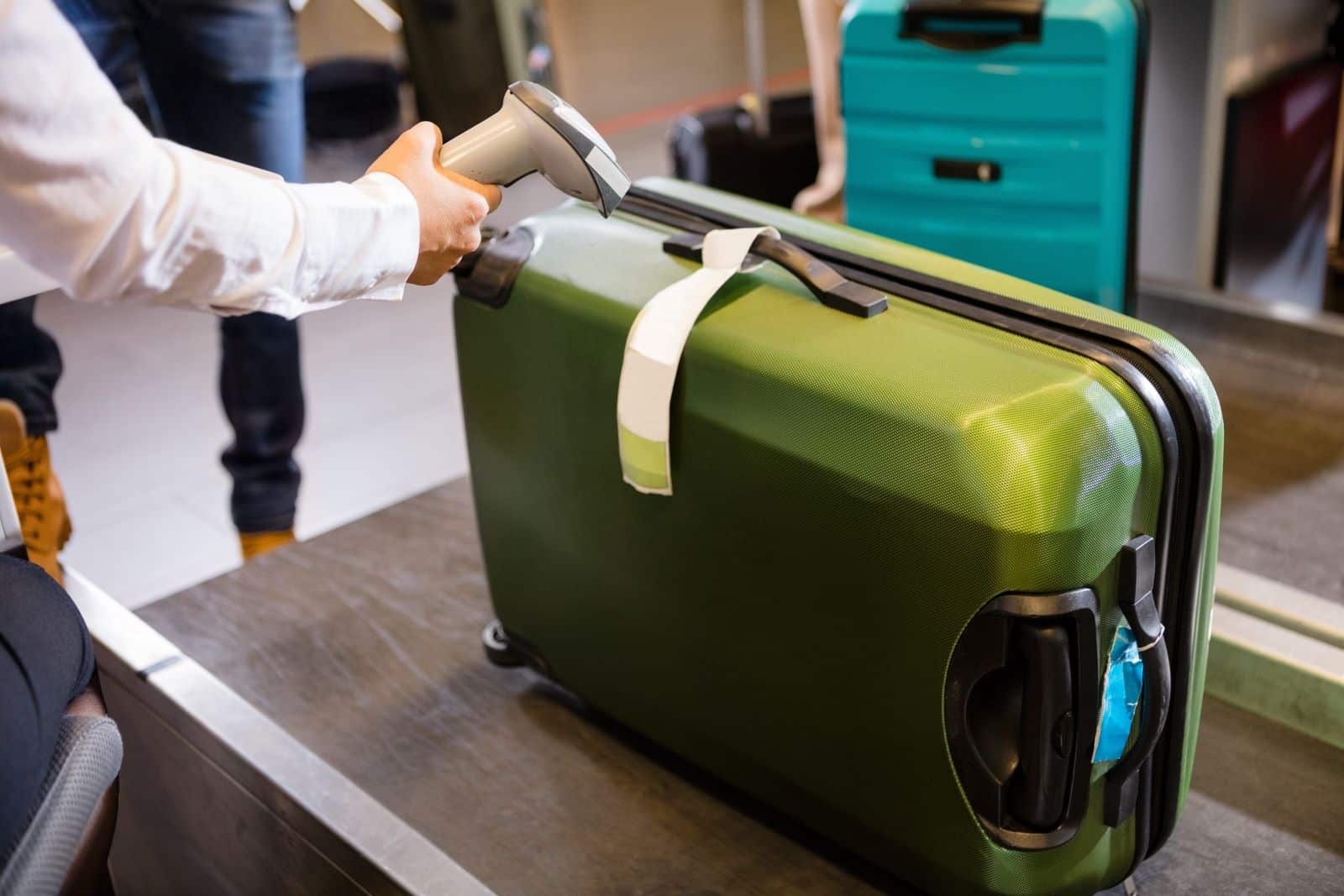
Pack Light and Eco-Friendly
Packing light is an effective way to contribute to more sustainable travel. By reducing the weight of your luggage, you indirectly help lower the fuel consumption of flights, decreasing the carbon emissions associated with air travel. Lighter planes mean less fuel burned, making a small but meaningful environmental impact. Additionally, consider incorporating eco-friendly travel products into your packing list. Choose biodegradable toiletries that minimize your plastic waste and reduce the environmental impact of your personal care products. Carrying a reusable water bottle cuts down on single-use plastics and keeps you hydrated without adding to plastic pollution.
Furthermore, solar-powered chargers are a green alternative to traditional charging methods, harnessing renewable energy to keep your devices powered up. By making thoughtful choices in what and how you pack, you protect the environment while still enjoying the conveniences and necessities of modern travel.
Insider’s Tip: Choose a backpack or suitcase made from recycled materials for an extra sustainable choice.

Respect Wildlife and Natural Habitats
In natural settings where wildlife is present, it’s crucial to maintain a respectful distance. This ensures not only your safety but also the well-being of the animals. Interfering with wildlife can disrupt their natural behaviors and habitats. Avoid attractions or activities that exploit animals for entertainment, as these often contribute to animal stress and harm. Instead, opt for wildlife viewing experiences that promote conservation and ethical practices.
Additionally, when exploring natural areas, stay on marked trails. Straying off the path can destroy habitat and negatively impact the local flora and fauna. By sticking to designated trails, you help preserve the natural environment and ensure it remains a wildlife sanctuary. Your mindful actions contribute to the conservation of these ecosystems, allowing future generations to enjoy and appreciate the natural world just as you do.
Insider’s Tip: Choose wildlife tours led by reputable guides who prioritize animal welfare and conservation. Do not ride elephants!

Reduce, Reuse, Recycle
Adhering to the three Rs of sustainability – reduce, reuse, and recycle – is fundamental in minimizing your environmental impact during travel. Reducing waste starts with making conscious decisions about what you consume and how. Opt for products with minimal packaging, and whenever possible, choose alternatives to single-use plastics, like carrying a reusable water bottle, coffee cup, and shopping bags. Reusing items not only cuts down on waste but also saves resources. For instance, refill your water bottle, use the same shopping bag, and choose accommodations that offer bulk toiletry dispensers rather than single-use containers.
Recycling is the last step, but it’s equally important. Ensure you’re disposing of waste properly by separating recyclables from trash. Consider carrying recyclables in areas where recycling facilities might not be readily available until you find a proper disposal point. By following these practices, you help reduce the amount of waste that ends up in landfills or, worse, natural habitats and oceans, thereby playing a part in preserving the environment while traveling.
Insider’s Tip: Carry a ‘zero-waste kit’ with reusable cutlery, a shopping bag, and a coffee cup.

Conserve Water and Energy
Being conscious of water and energy usage is a crucial aspect of sustainable travel. Simple, everyday actions can collectively make a significant impact on conserving resources. Remember to turn off lights, air conditioning, and electronic devices when not in use or leaving your accommodation. This not only saves energy but also reduces unnecessary electricity consumption. Consider taking shorter showers, a practical way to reduce water usage, and reuse towels instead of requesting new ones daily.
Many hotels and accommodations now encourage this practice as part of their environmental policies. By being mindful of your water and energy consumption, you reduce your travels’ environmental footprint. These small but meaningful actions are steps towards more responsible and sustainable tourism, ensuring that the natural and cultural environments you visit can be preserved and enjoyed for years to come.
Insider’s Tip: Stay in accommodations that utilize renewable energy sources or have water-saving systems in place.

Educate Yourself and Others
As a responsible traveler, it’s important to educate yourself about the environmental challenges faced by the destinations you visit. This knowledge enhances your understanding of the local context. It enables you to make more informed decisions about how to travel responsibly. Awareness of these issues allows you to adjust your behavior accordingly, such as using water sparingly in drought-prone areas or avoiding products contributing to habitat loss, whether it’s water scarcity, pollution, or habitat destruction.
Furthermore, sharing your sustainable travel practices with fellow travelers is a powerful way to spread awareness and encourage others to adopt similar habits. Engaging in conversations about sustainability, sharing tips on eco-friendly practices, or even leading by example can inspire those around you to be more environmentally conscious. This collective effort can create a significant positive impact, helping to preserve the beauty and integrity of the places you visit.
Insider’s Tip: Participate in local environmental initiatives or workshops if available.

Offset Your Carbon Footprint
Considering the carbon emissions from your travel is an essential part of sustainable tourism. While traveling without leaving a carbon footprint is challenging, you can mitigate this impact by investing in carbon offsetting initiatives. These programs typically involve contributing to projects that reduce carbon emissions elsewhere, like renewable energy projects which replace fossil fuels, or reforestation efforts that naturally absorb carbon dioxide from the atmosphere.
When you choose to offset your emissions, you’re taking responsibility for the environmental impact of your travel. Many airlines offer carbon offset programs at the point of purchase. However, you can also independently invest in verified projects around the world. By offsetting your carbon emissions, you’re contributing to global efforts against climate change, ensuring that your travel positively impacts the environment.
Insider’s Tip: Use online carbon calculators to estimate travel emissions and find suitable offsetting projects.

Embrace Slow Travel
Embracing slow travel is about prioritizing quality over quantity in your journeys. Rather than rushing to tick off a long list of destinations, this approach encourages you to spend more time in fewer places. Doing so allows you to delve deeper into the local culture, gaining a richer and more authentic understanding of the places you visit. This immersive experience often leads to more meaningful connections with local people, traditions, and customs.
Additionally, slow travel significantly reduces the environmental impact associated with frequent travel, such as lower carbon emissions from less frequent flights or drives. This more relaxed pace of travel benefits the environment. It enhances your overall experience, allowing for a more thoughtful and fulfilling exploration of each destination.
Insider’s Tip: Choose a single destination or region and explore it thoroughly, using local transportation and enjoying off-the-beaten-path experiences.

Participate in Sustainable Activities
Engaging in low-impact activities is a key aspect of sustainable travel. Opting for experiences like hiking, biking, or kayaking allows you to enjoy and appreciate the natural beauty of your destination without contributing to pollution or resource depletion. These activities minimize your environmental footprint and provide a more intimate connection with nature. When selecting these experiences, consider those that offer educational insights into the local ecosystem or culture.
For example, guided nature walks can teach you about native wildlife and plant species, while cultural tours led by local experts can deepen your understanding of the area’s history and traditions. By choosing environmentally friendly and informative activities, you enrich your travel experience and support sustainable tourism practices that prioritize the health of our planet and its diverse ecosystems.
Insider’s Tip: Join guided eco-tours that focus on environmental education and conservation efforts. These tours provide insights into local sustainability practices and often contribute directly to conservation efforts.

Eat Locally Sourced Food
Eating locally sourced food while traveling is an opportunity to enjoy authentic flavors and dishes and an effective way to reduce your environmental impact. Food that is locally sourced hasn’t undergone long-distance transportation, which is a major contributor to carbon emissions. By opting for meals made with local ingredients, you reduce the demand for transported goods and your carbon footprint.
Furthermore, eating locally supports farmers and producers, contributing to the local economy and community. This approach allows you to experience the region’s culinary culture more intimately while supporting sustainable practices that benefit the environment and local livelihoods. It’s a simple yet impactful way to make your travel more environmentally friendly and culturally enriching.
Insider’s Tip: Visit local markets or farm-to-table restaurants to enjoy fresh, regional produce. This helps reduce transportation emissions associated with food and offers the chance to experience the region’s culinary culture more authentically.

Stay in Sustainable Accommodation
Choosing accommodations committed to sustainability is a significant step in responsible travel. Nowadays, many hotels and hostels are adopting eco-friendly practices, and by selecting these establishments, you’re actively supporting and encouraging the growth of green tourism. Look for places that utilize solar energy, which reduces reliance on fossil fuels, or those with effective water conservation measures, essential in areas facing water scarcity.
Recycling programs, use of eco-friendly materials, and efforts to reduce food waste are other green initiatives to consider. By opting to stay in such accommodations, you not only lessen your environmental impact but also help to drive demand for sustainable practices on the broader tourism industry. This consumer choice sends a strong message to the market about the importance of environmental responsibility, influencing more establishments to adopt similar practices.
Insider’s Tip: Look for eco-certifications or awards when booking accommodations, which often indicate a genuine commitment to environmental responsibility.

The Bottom Line
Sustainable travel is more than just being a responsible tourist; it’s about being a conscious global citizen and making choices that reduce our environmental impact while enhancing the well-being of local communities. By adopting these best practices, you become part of a growing movement that values environmental preservation, cultural respect, and the vitality of the communities and environments you visit.
This thoughtful approach to travel ensures that your experiences are enriching for you and beneficial for the planet. Choosing eco-friendly transportation, supporting local businesses, respecting natural habitats, and making mindful food and accommodation choices contribute to a healthier planet. Sustainable travel isn’t just about reducing harm; it’s about actively contributing to positive change, creating a ripple effect beyond your individual journey.
As you explore the world, remember that every small action counts towards preserving the world’s beauty and diversity for future generations to explore and enjoy. Your choices can lead to meaningful experiences that align with sustainability principles, ensuring that the wonders remain for future generations to appreciate.
More Articles Like This…
Barcelona: Discover the Top 10 Beach Clubs
2024 Global City Travel Guide – Your Passport to the World’s Top Destination Cities
Exploring Khao Yai 2024 – A Hidden Gem of Thailand
The post 12 Best Practices for Sustainable Travel in 2024 – How to Travel with Minimal Environmental Impact republished on Passing Thru with permission from The Green Voyage .
Featured Image Credit: Shutterstock / Day2505.
For transparency, this content was partly developed with AI assistance and carefully curated by an experienced editor to be informative and ensure accuracy.
More for You
Trump claims he will testify in hush money trial as judge shoots down another attempt to delay
Guest-list style at the White House State Dinner
Common over-the-counter medicine linked to increased dementia risk
30 trans celebrities who broke barriers
Disney Cites First Amendment In Gina Carano Termination Suit
Tesla Owner Calls Police on Rivian Driver Using Supercharger
Tech trick: How to tell who’s calling when you don’t recognize the phone number
Secrets of ancient Herculaneum scroll deciphered by AI
Doctor shares what happens to our bodies moments before we die
New 'Beetlejuice Beetlejuice' Footage Introduces Jenna Ortega's New Character
Biden admin cracks down on lightbulbs as part of climate agenda
This type of supplement may increase heart disease risk, new study finds
Workers at Elon Musk’s Boring Co. accidentally dug too close to a supporting column of the Las Vegas monorail last year, forcing officials to briefly halt service
‘Station 19’ stars reflect on the legacy of one of TV’s most beloved lesbian romances
Opinion | A Bad Day for Greedy Politicians at the Supreme Court
78 Riddles for Adults That Will Test Your Smarts
Your senses will shut down in a specific order when you’re about to die
Woman with rare syndrome left allergic to ‘everything’ except just four foods
12 Concealed Kitchen Storage Hacks You’ll Want to Use Immediately
Mike Pence lands new gig after failed 2024 presidential bid

IMAGES
VIDEO
COMMENTS
Defining Eco-Tourism In Mexico. But, first, what does "eco-friendly" actually mean? While the definition varies slightly depending on who you ask, the Global Sustainable Tourism Council explains it as a niche segment of tourism in natural areas that particularly focuses on ethical, low-impact, locally-oriented trips.. It's easy to confuse eco-friendly tourism with sustainable travel, as ...
Travel, though enriching, can inevitably contribute to the carbon footprint. Ecotourism in Mexico, however, is a conscious effort to reduce this environmental impact. Consider using EcoBici, Mexico City's public bicycle sharing system. It's designed to promote sustainable urban transport and reduce CO2 emissions. Sustainable Travel Tips
12. Best Eco Hotel for a Weekend in Mexico - OYO Jolie Jungle Eco Hotel. Perfect for a weekend escape to the jungle. $$. 2-8 guests. Swimming pool. Restaurant onsite. If you only have a weekend to spend in Mexico, then the Jolie Jungle Eco Hotel is the perfect place to stay.
Sustainable Travel & Ecotourism in Mexico. Mexico's ecological diversity is among the broadest of any country in the world, with an abundance of ecosystems ranging from the northern deserts to the central conifer forests, and the southern tropical rainforests. Mexico also supports 111 million people and welcomes more than 20 million visitors ...
Sustainable travel in Mexico. Sustainable tourism in Mexico is a natural fit. With vast landscapes, an abundance of wildlife, and a culture interlinked with nature, the country makes the perfect eco-friendly destination. Snorkel on the Great Mesoamerican Barrier Reef, the second-largest reef in the world, trek through one of the 40 UNESCO ...
Whether you are a first-time visitor or a seasoned traveler, this Ultimate Guide to Sustainable Travel in Mexico will help you explore and discover responsibly and sustainably.Welcome to our guide on sustainably experiencing the magic of Mexico. We will explore the diverse range of natural beauty, history, and culture, from its beautiful mountains and immaculate beaches to its lively cities ...
Another aspect of sustainable ecotourism in Mexico is the promotion of responsible travel practices. Tourists are encouraged to minimize their impact on the environment by practicing the principles of "leave no trace," such as properly disposing of waste, respecting wildlife and local communities, and supporting environmentally-friendly ...
Eco-friendly travel guide to Mexico advises how to be a responsible tourist. Learn how to travel in a sustainable way and how to respect the local people and culture. Make your trip green by supporting locally owned hotels, organic restaurants and other businesses. Read more on how to protect the environment by making conscientious choices and how to travel green in Mexico, North America.
Collaborations with WWF, SEMERNAT, Adventure Travel association, Ecotourism Society, and The Smithsonian School to create environmental protection plans. Awareness campaigns about the ecosystems of Mexico and how to help rehabilitate them. A few of their best tours: Whale Sharks Cancun Tour. Length: 5-8 hours.
Mexico, with its rich cultural heritage, diverse landscapes, and vibrant communities, offers an array of opportunities for sustainable exploration. In this blog, we delve into the essence of sustainable travel in Mexico, highlighting eco-friendly accommodations, conservation initiatives, and responsible travel practices that allow you to ...
One of the most effective ways to ensure sustainable travel is to engage with and support local businesses. From dining at family-owned restaurants to shopping at artisan markets, your support can make a significant impact on the region's economy. Le Zebra Beach Restaurant & Bar: Located in Tulum, this beachfront eatery focuses on sourcing ...
But interest in the area is rising, thanks to the town's laid-back vibe—and the extraordinary colors of the 26-mile-long lagoon. And while many in this community of about 40,000 people see the ...
The Best Eco Friendly Vacation Spots. The best example of a sustainable ecofriendly resort is not in Hawaii, Cabo San Lucas or Puerto Vallarta it is in Playa del Carmen, Mexico. Sandos Caracol is the first all-inclusive hotel that not only conserves the biosphere reserve surrounding the resort but also promotes sustainable travel (responsible ...
Mexico's Baja peninsula has no shortage of farm-to-table dining, but Flora Farms sets the gold standard. The sprawling, 25-acre working farm only serves food it grows or raises on-site. Coffee lovers will be smitten with Finca El Pacifico, an organic coffee farm nestled in the mountains of Oaxaca. Here you can sip a fresh cup of joe ...
Officially San Francisco, this slow-paced, hippy town is located in the neighboring state of Nayarit. The town is host to fantastic eco-friendly accommodation options, delicious vegan restaurants, and a tight-knit community with a passion for its people and the environment. By supporting this smaller-scale tourism industry, your tourist dollars ...
Embrace Slow Travel. If you can, take fewer vacations - but stay longer. Maximising your time in a destination but minimizing the environmental impact of getting there makes sense. Fortunately, many of Mexico's most popular regions for tourists lend themselves to slow travel: when it comes to attractions, there's ample variety and plenty ...
Calling all sustainability-minded travelers: In 2020 and 2021, a spate of new, handsome coastal resorts and villas have opened in Mexico with a focus on ecoconscious, socially responsible design—properties that have carefully considered the environment and local communities in construction, design, and operations.
Eating is a very (extremely) important part of any vacation…even more if said vacation is in Mexico! Sustainable tourism in Los Cabos is taken very seriously, as you probably realized by now. ... She believes sustainable travel and luxury travel can go hand in hand and has been advocating for responsible tourism since 2014. Stefania's advice ...
When it comes to sustainability Mexico, the highest-profile eco-friendly offerings are found in the hospitality industry. But there are other ways to learn about and support efforts, as well. Mexican airlines Aeromexico and Volaris , for example, provide clients the option to offset their carbon footprint by making a voluntary donation.
Queretaro - a state in central Mexico is a great destination for those seeking outdoor adventure and sustainable tourism experiences in Mexico. The UNESCO World Heritage site of Sierra Gorda Biosphere Reserveis a stunning natural area that is home to various ecosystems, including cloud forests, rivers, and canyons.
Sustainable Travel & Ecotourism in Yucatan Peninsula Mexico's ecological diversity is among the broadest of any country in the world, with an abundance of ecosystems ranging from the northern deserts to the central conifer forests and the southern tropical rainforests. Mexico also supports 111 million people and welcomes more than 20 ...
Rancho Pescadero will be 30 acres of beachside serenity with a tiny footprint. Todos Santos sits on a relatively undeveloped stretch of Mexico's coast. In the beach town of Todos Santos, an hour north of Cabo San Lucas on Mexico's Baja Peninsula, sits a hotel that's been offering a restorative antidote to modern life (and, let's face it ...
Sustainable tourism is one of the priority objectives of the Ministry for Tourism of Mexico (SECTUR). Within our Tourism Sectorial Program (2020-2024), we are looking to foster sustainable tourism throughout the Mexican territory.
1. In Mexico, the Ministry of the Environment and Natural Resources defines ecotourism as 'trips that aim to carry out recreational activities and knowledge of nature through contact with it.' ...
For our last night in La Paz, Mexico, we kept it simple: A couple of cans of cold Pacifico, a bench on the malecón, the city's waterfront promenade, and the sunset glowing orange over the ...
The post 12 Best Practices for Sustainable Travel in 2024 - How to Travel with Minimal Environmental Impact republished on Passing Thru with permission from The Green Voyage. Featured Image ...
Indiana trade between Brazil and Mexico topped $1.7 billion and $13.4 billion in 2023, respectively, and the state is already home to 14 Brazil-based and 13 Mexico-based business establishments. In Brazil, Gov. Holcomb, First Lady Holcomb and the Indiana delegation will travel to Rio de Janeiro and São Paulo to build relationships and identify ...